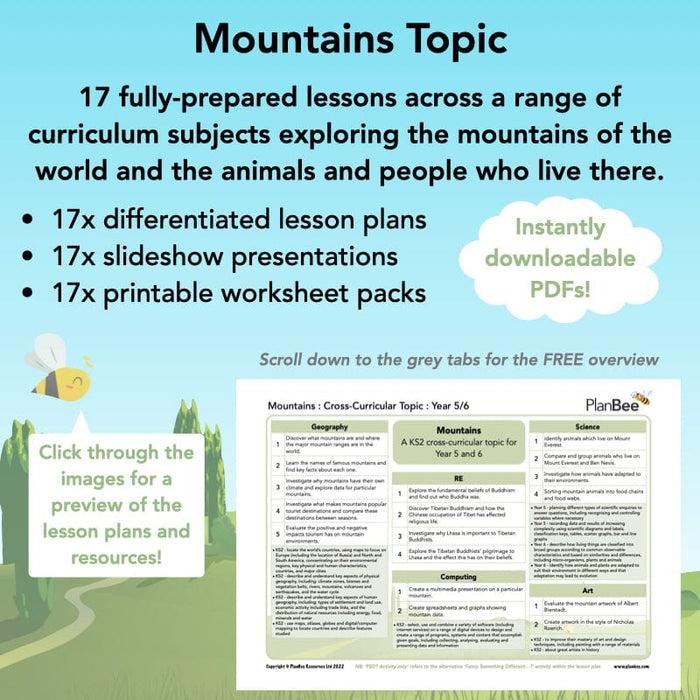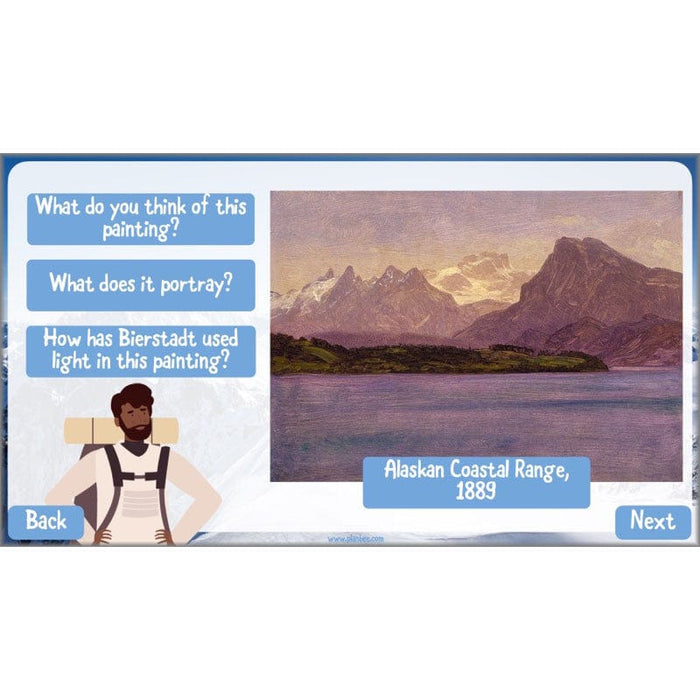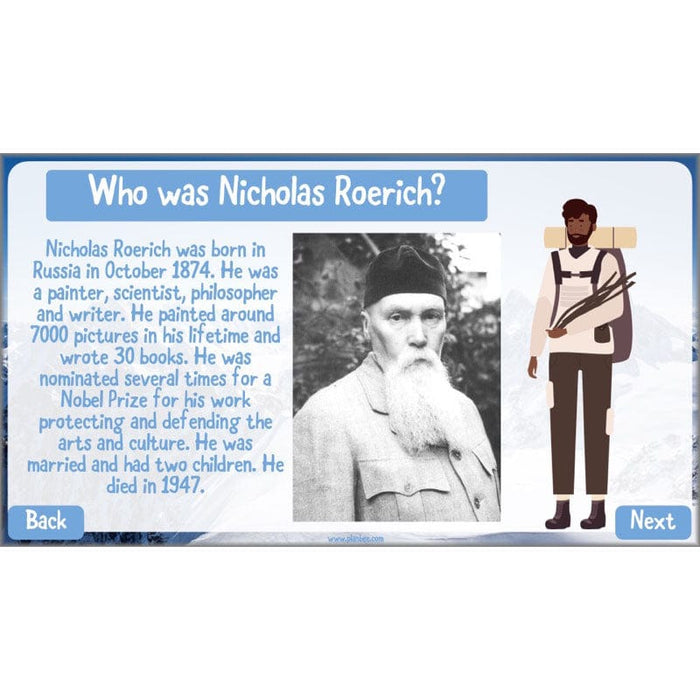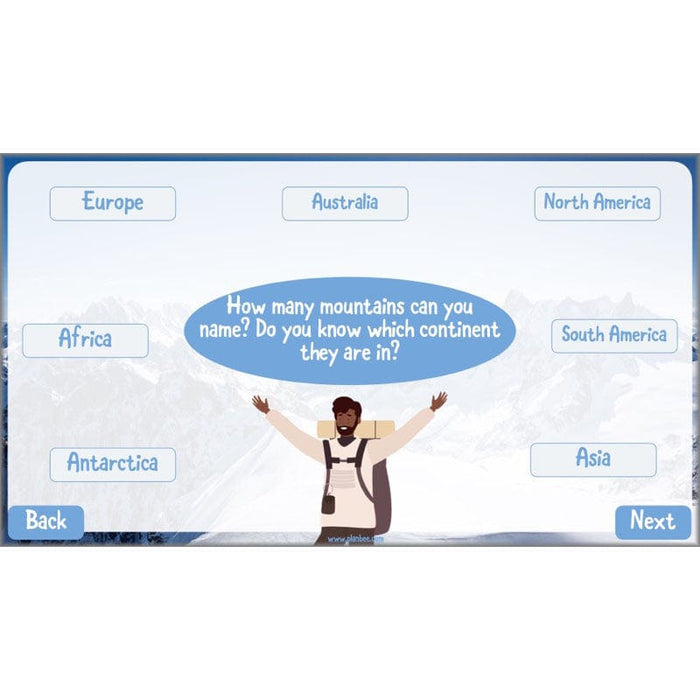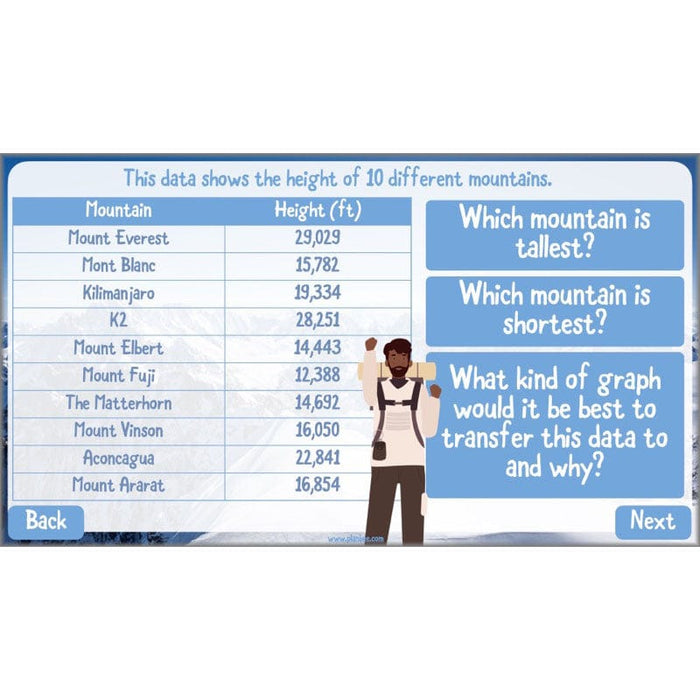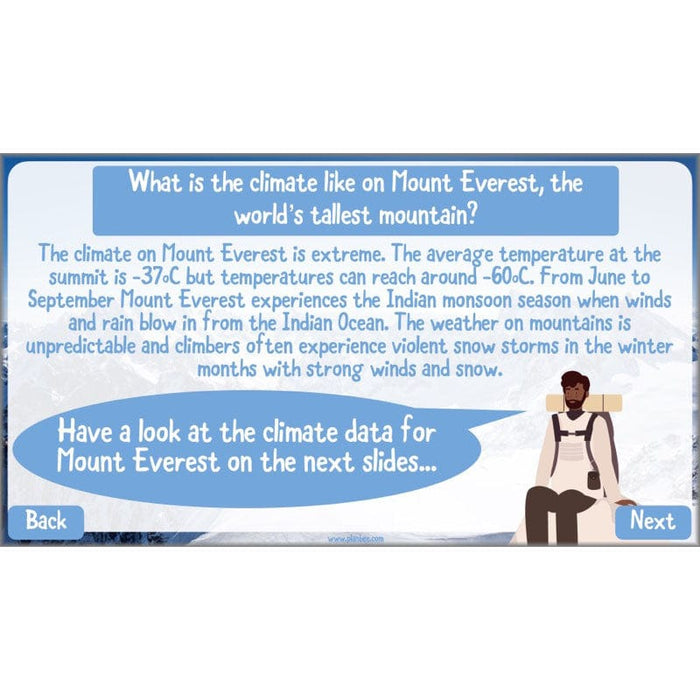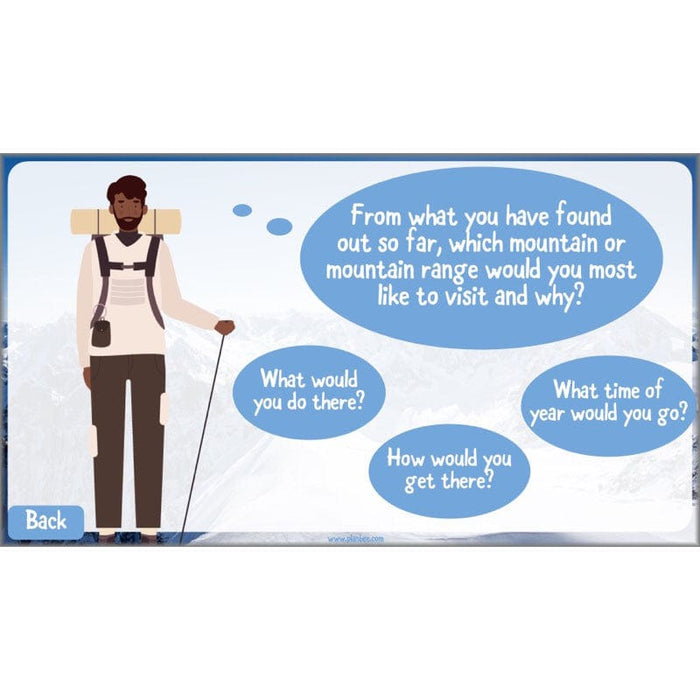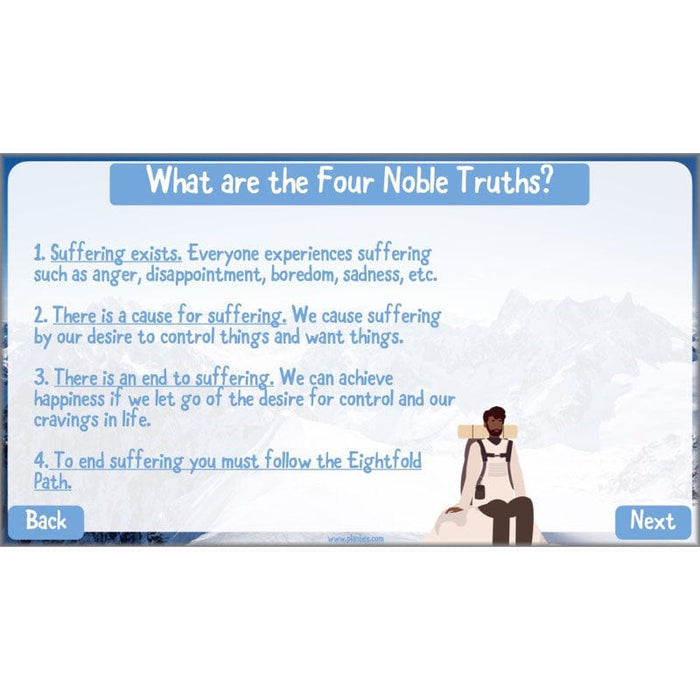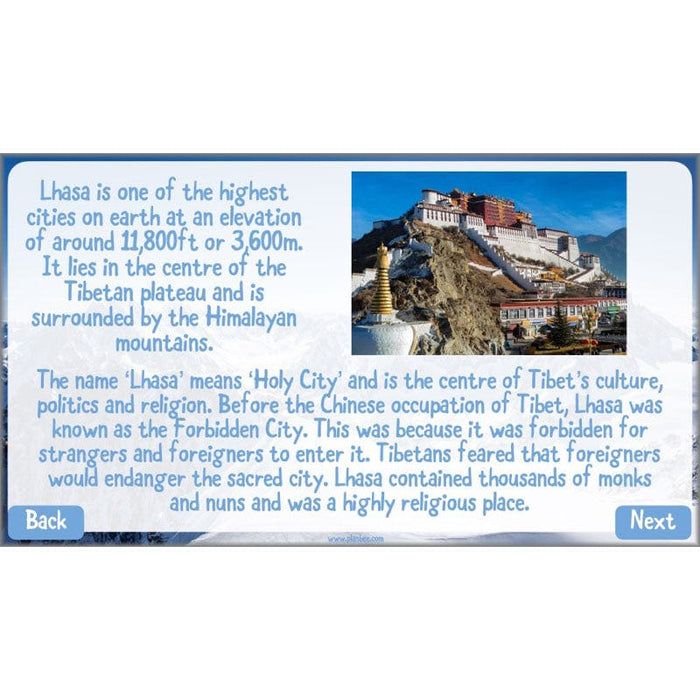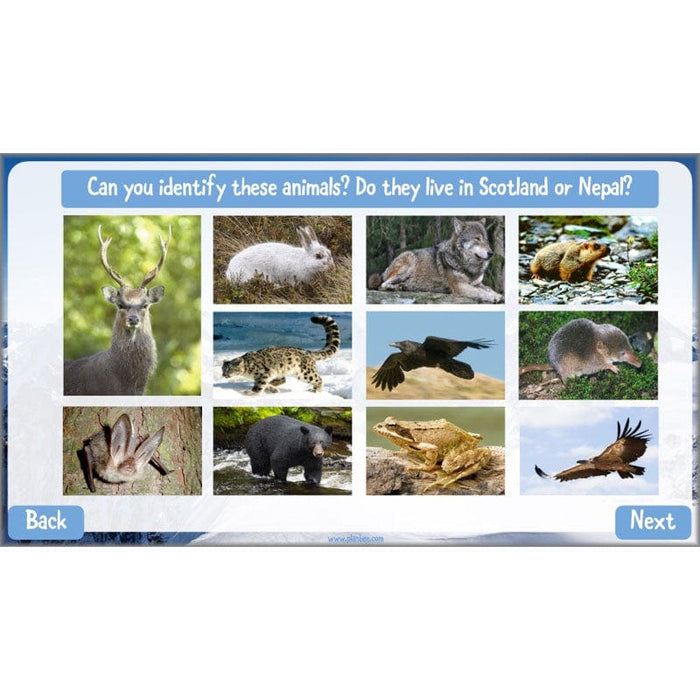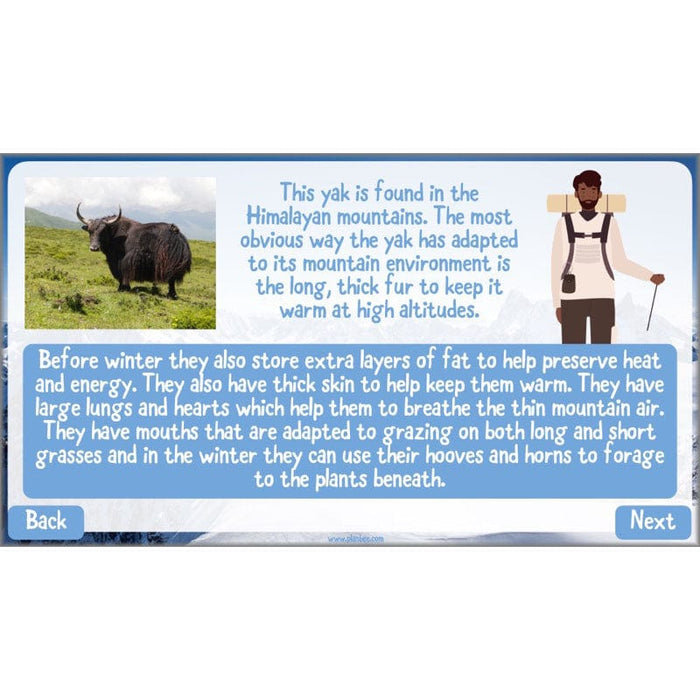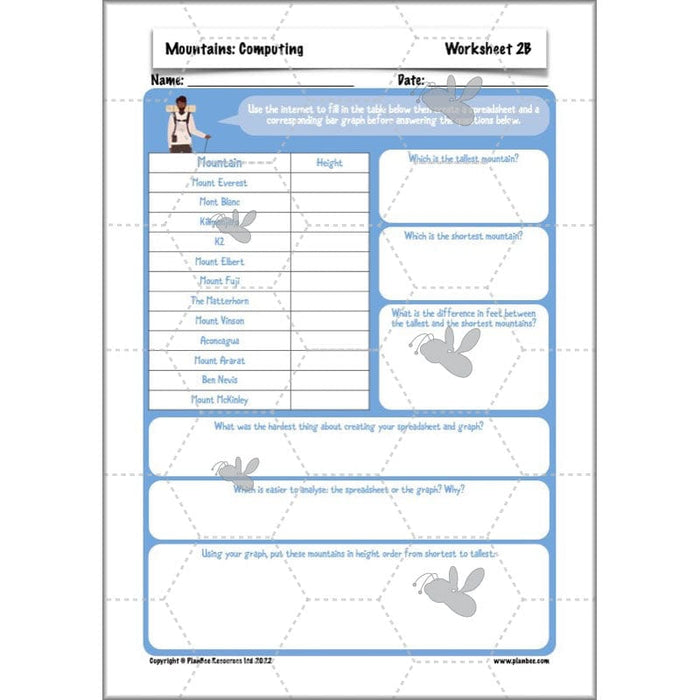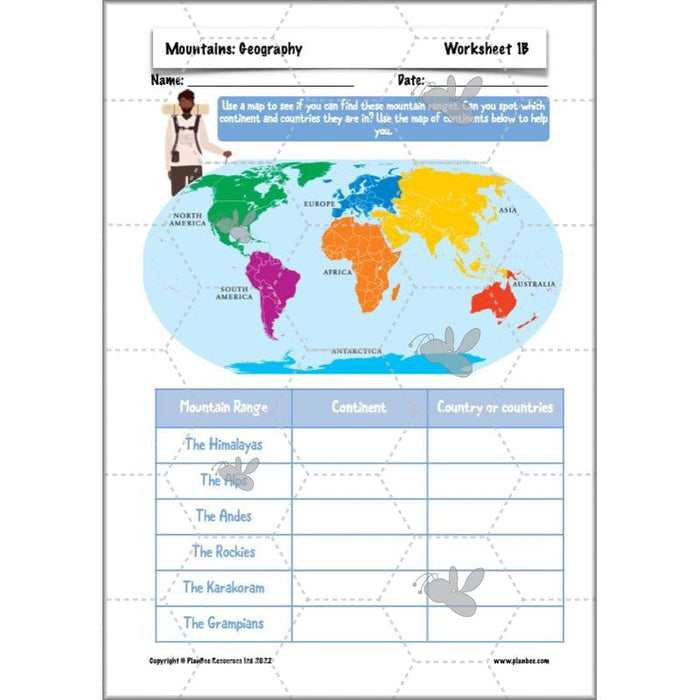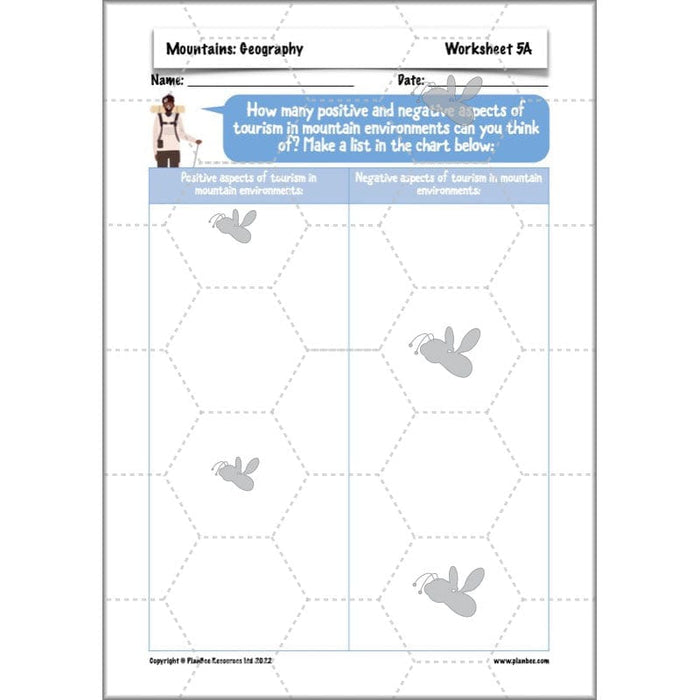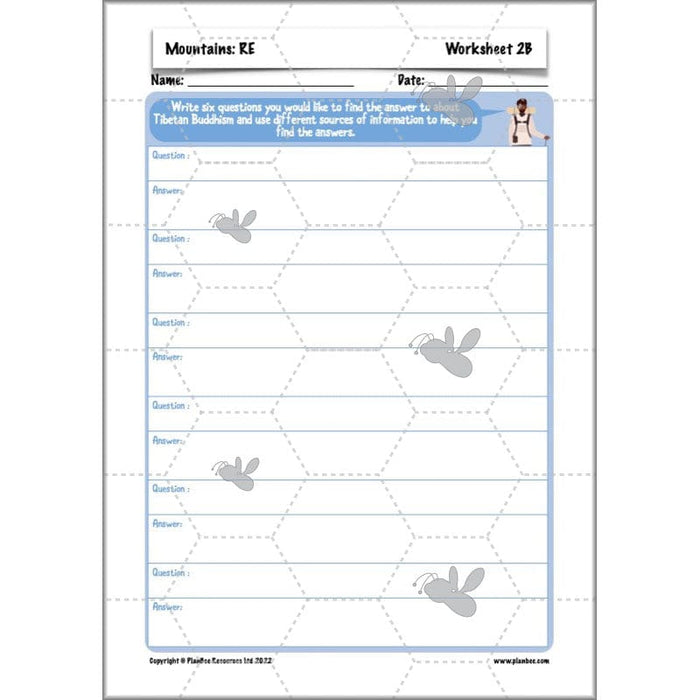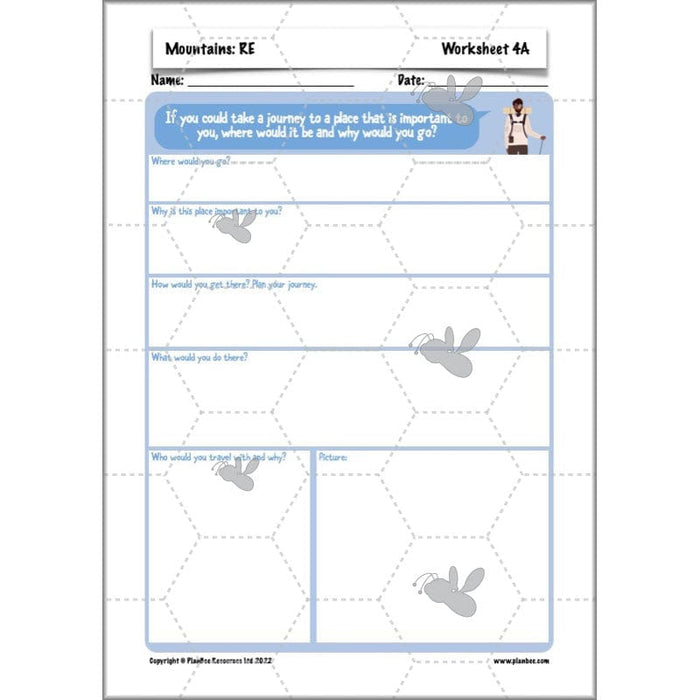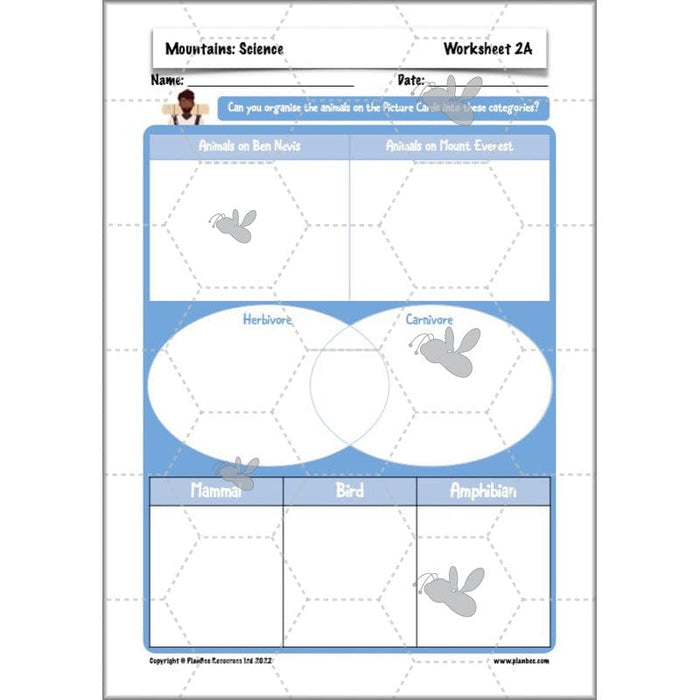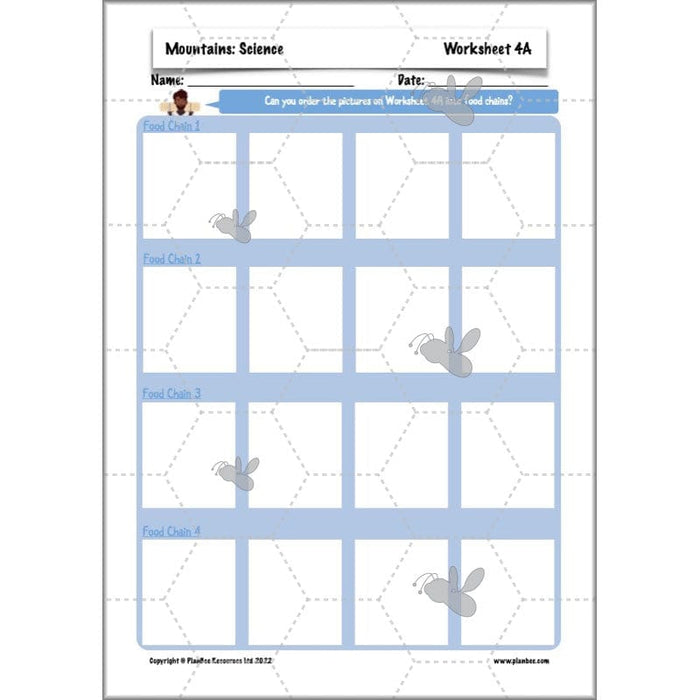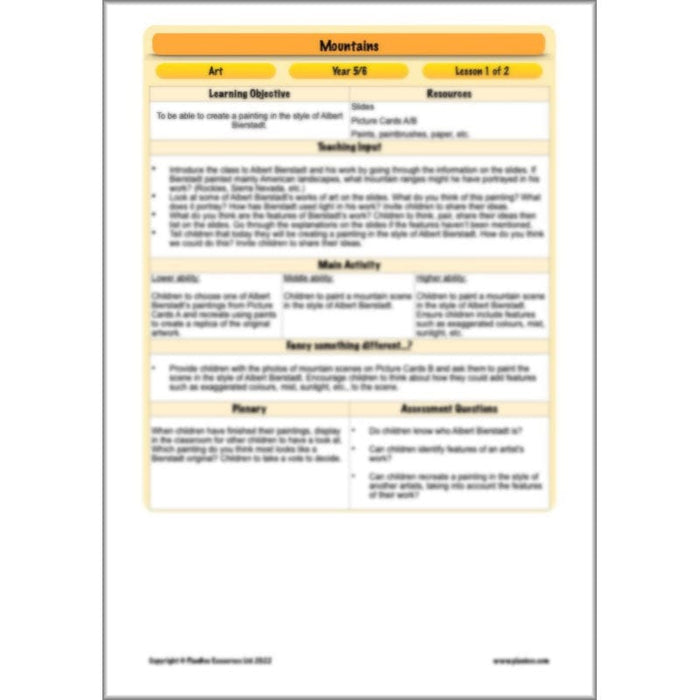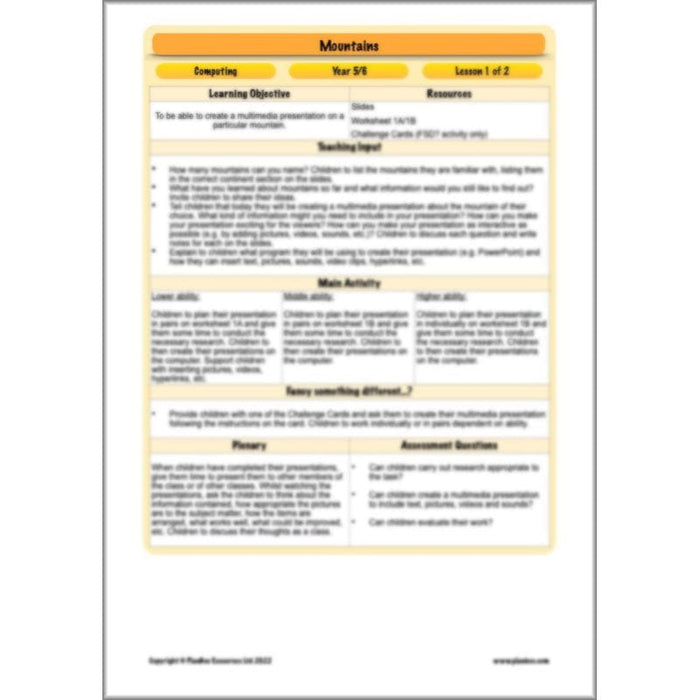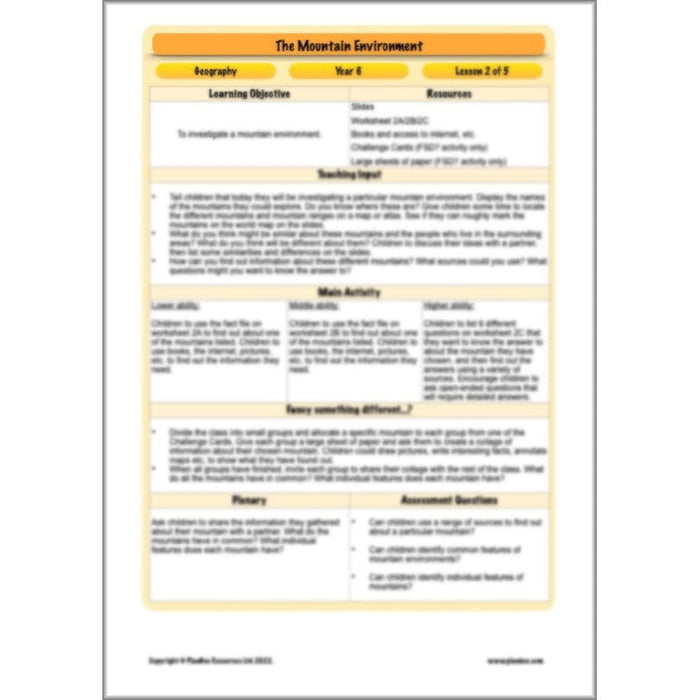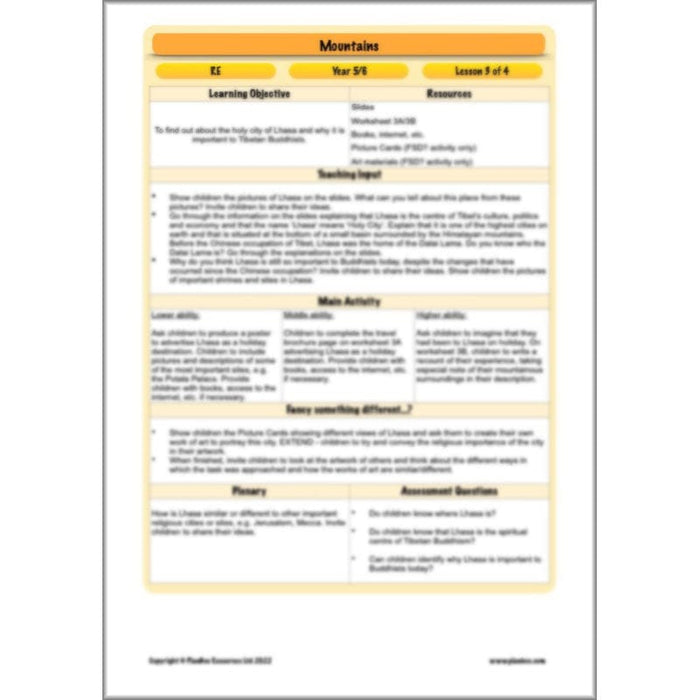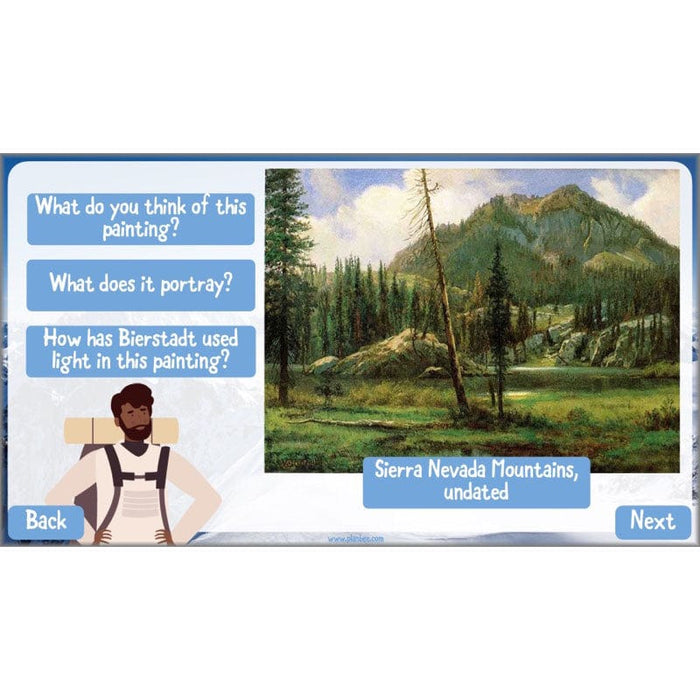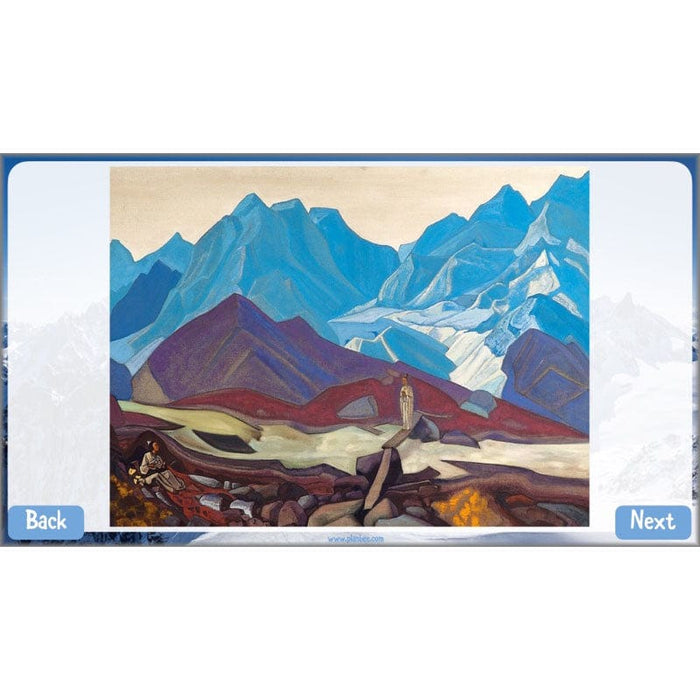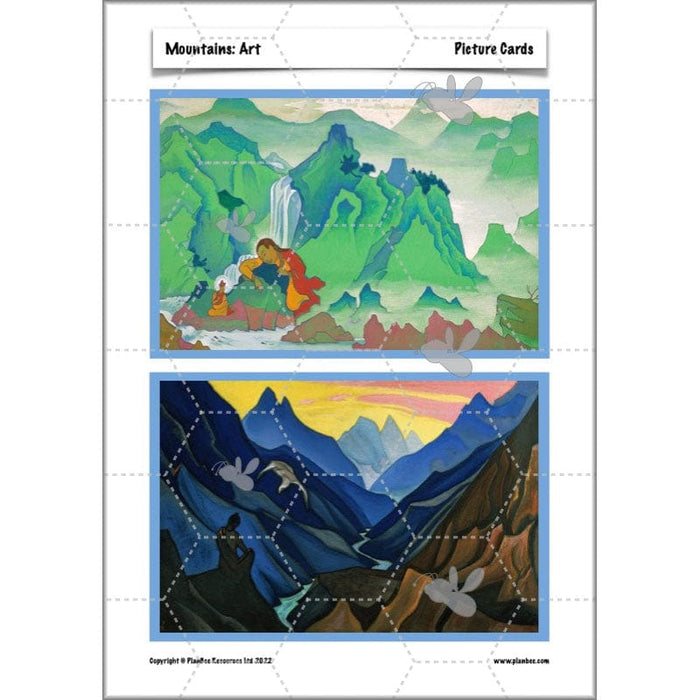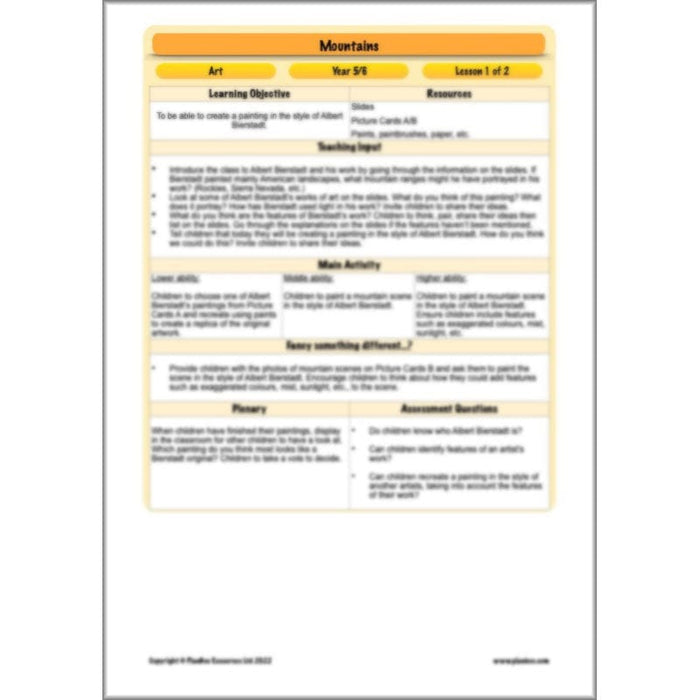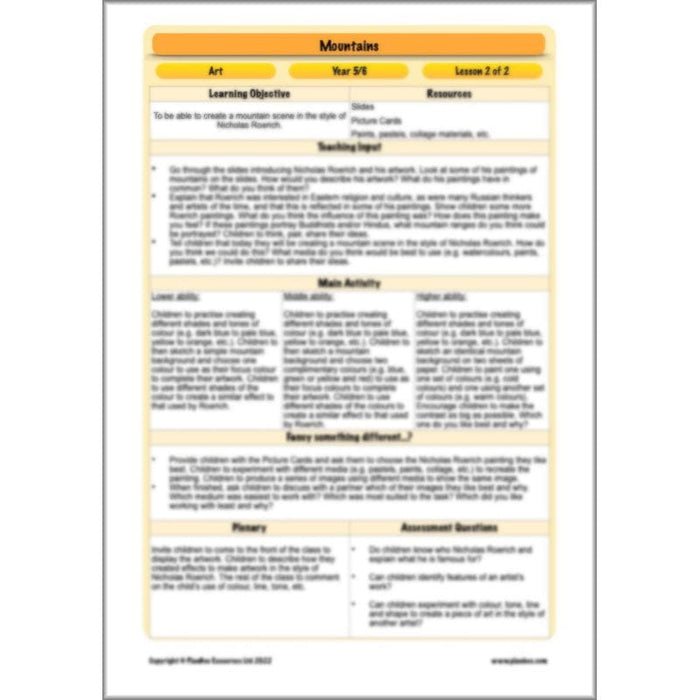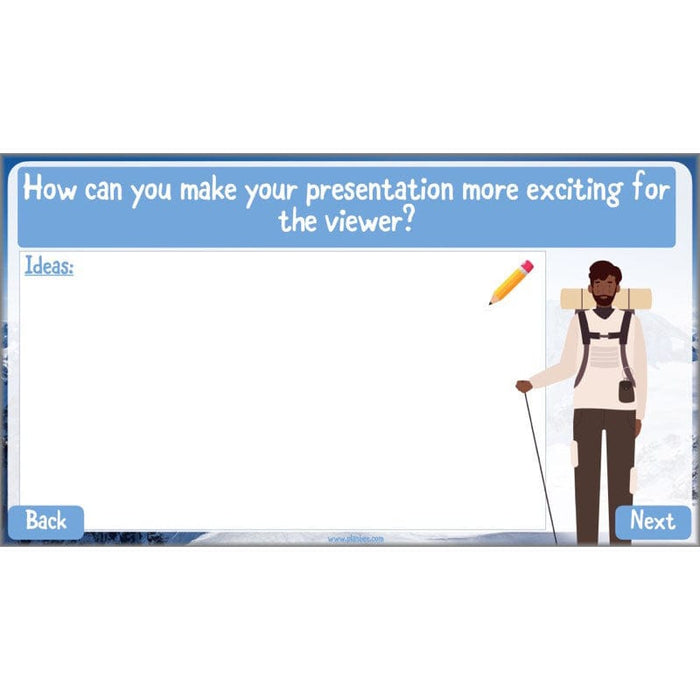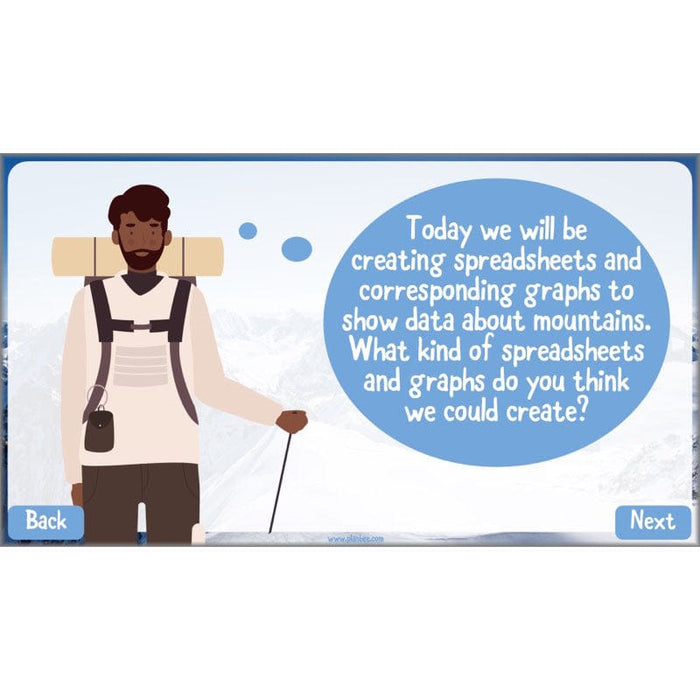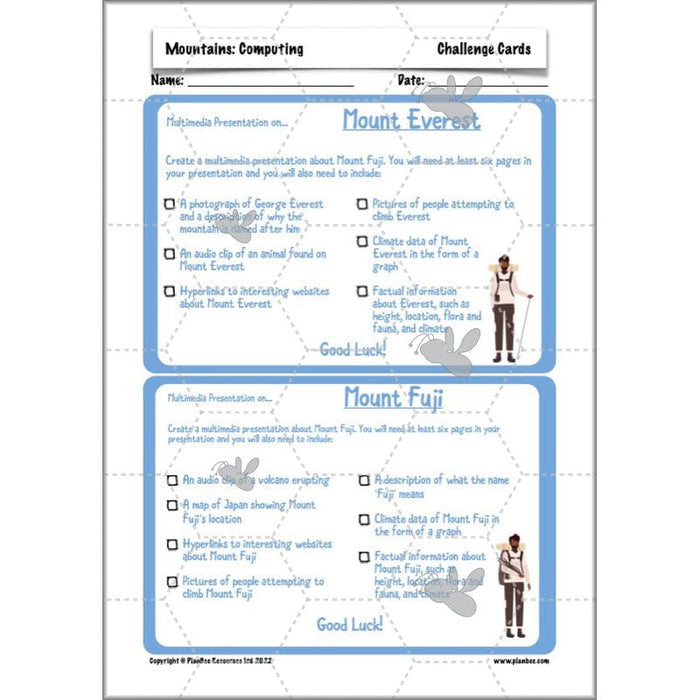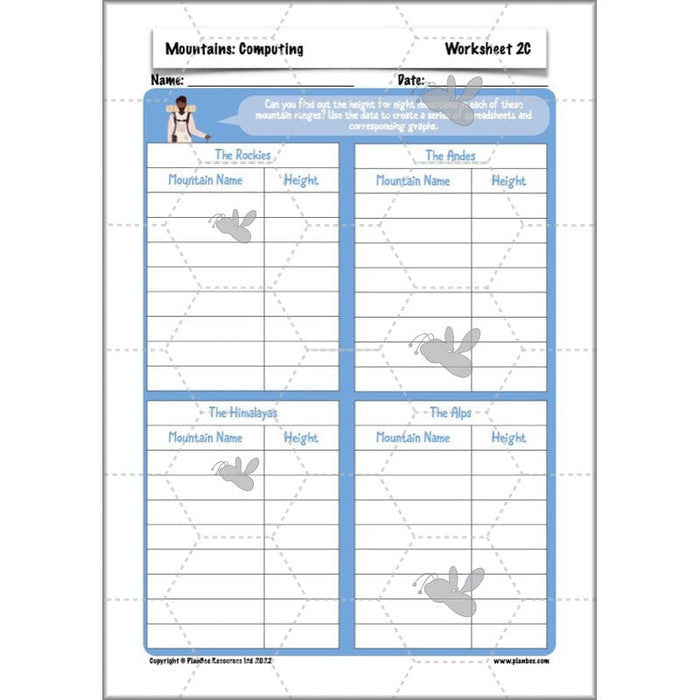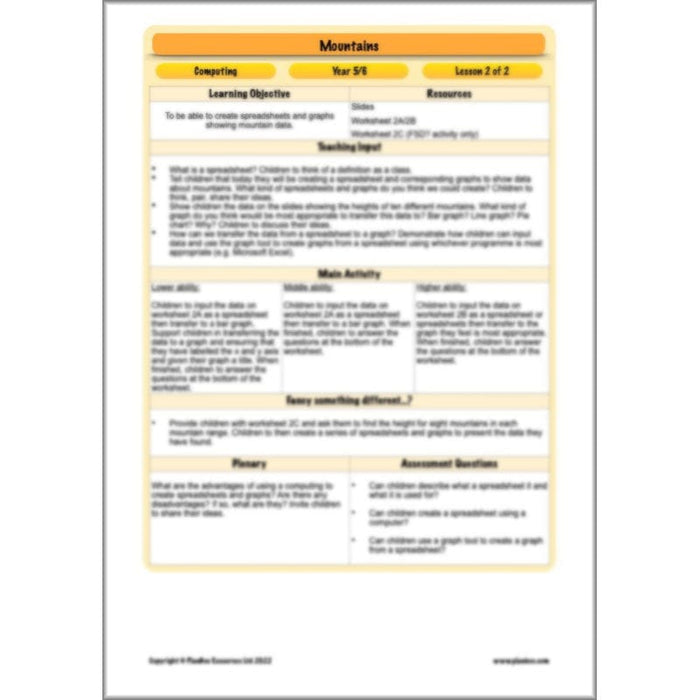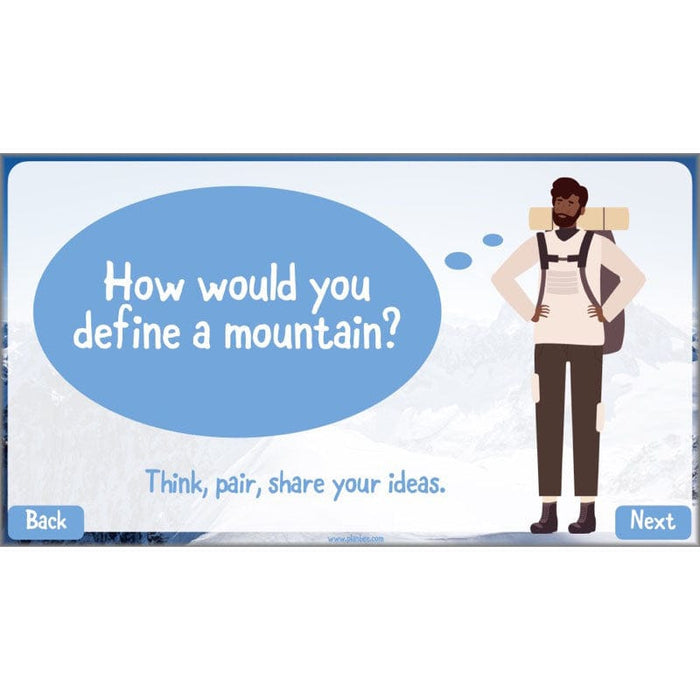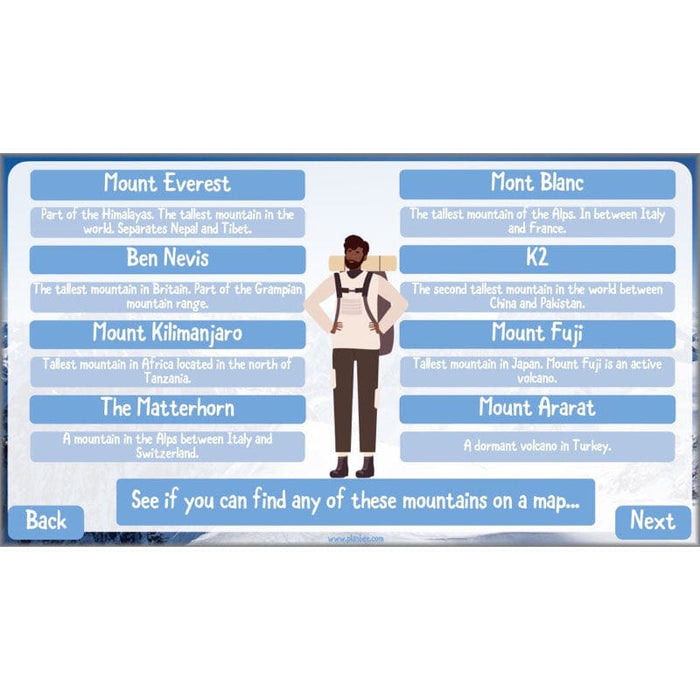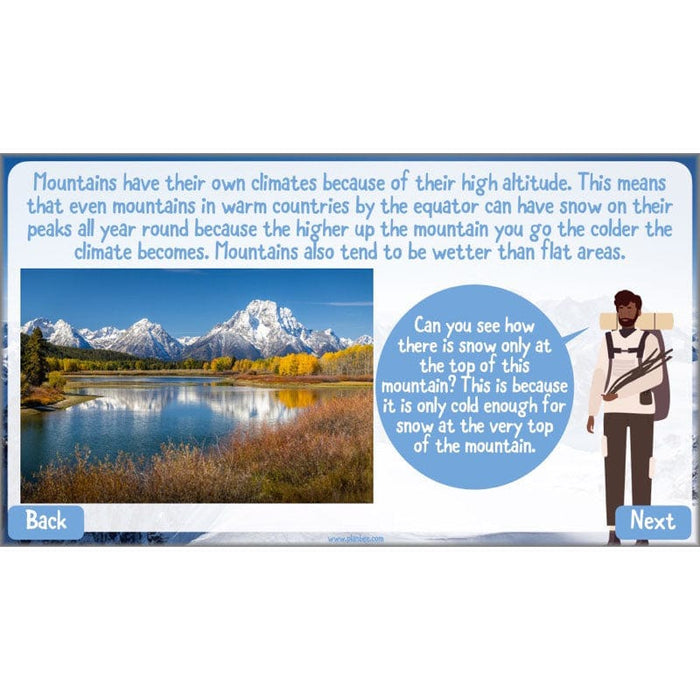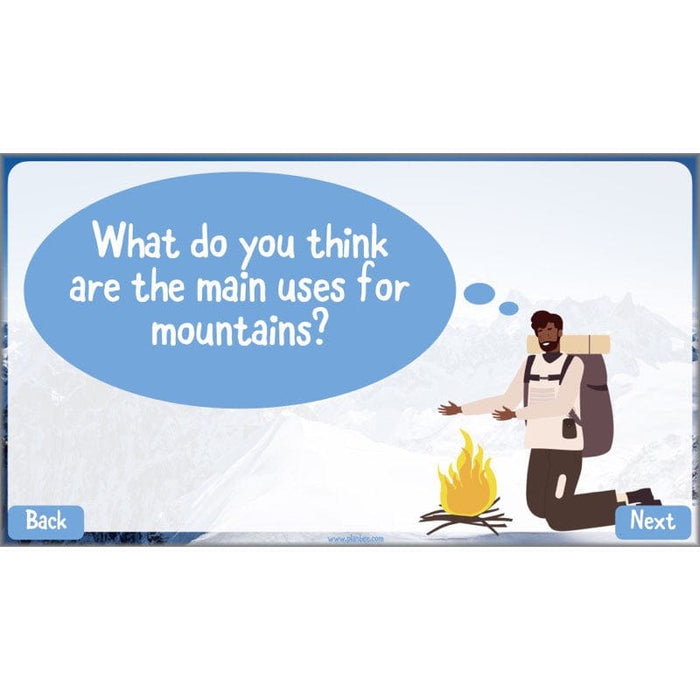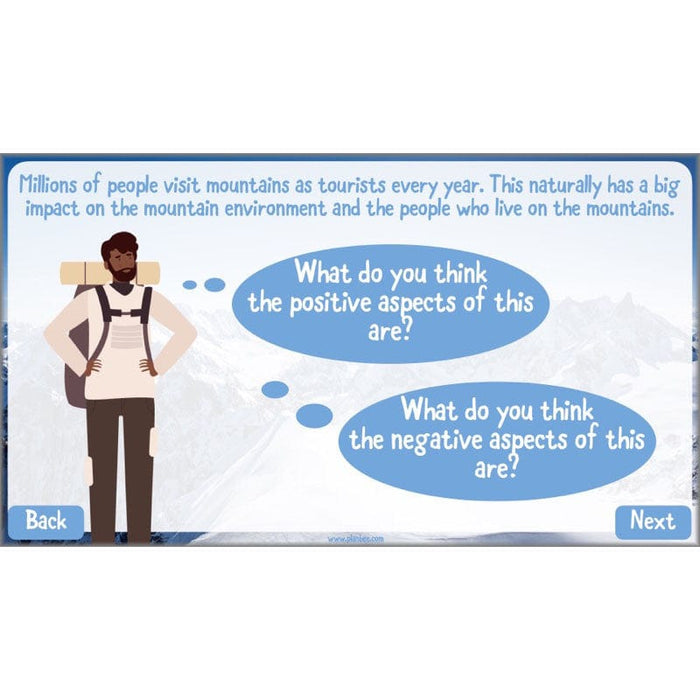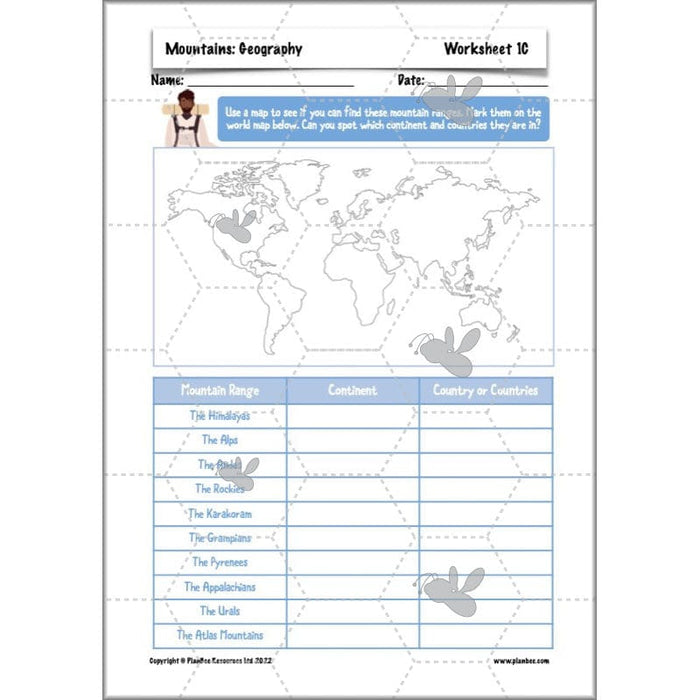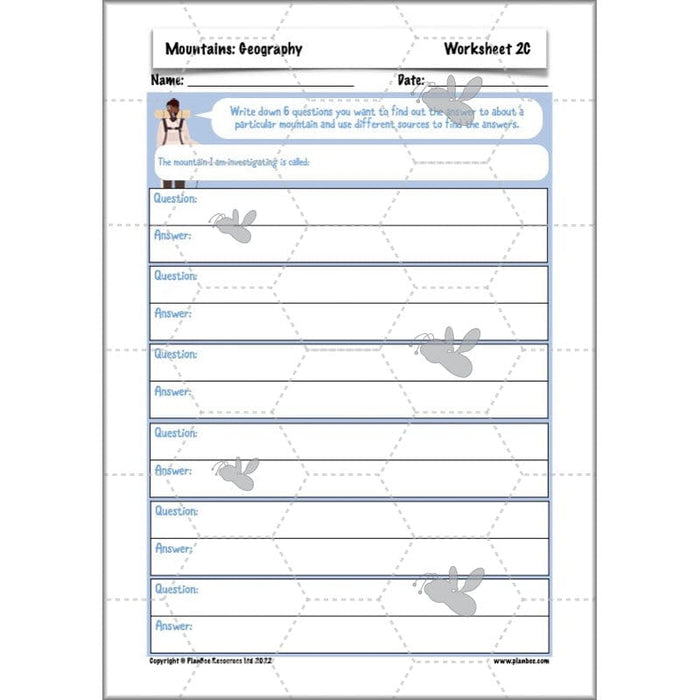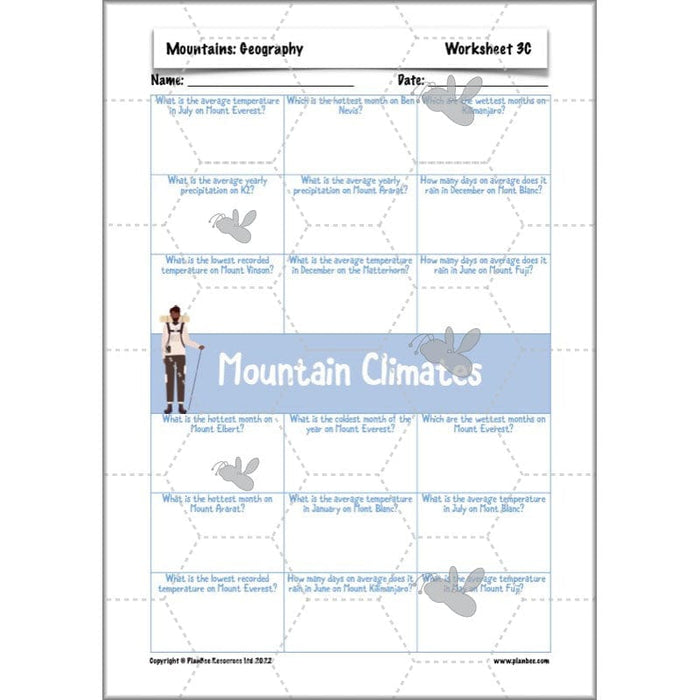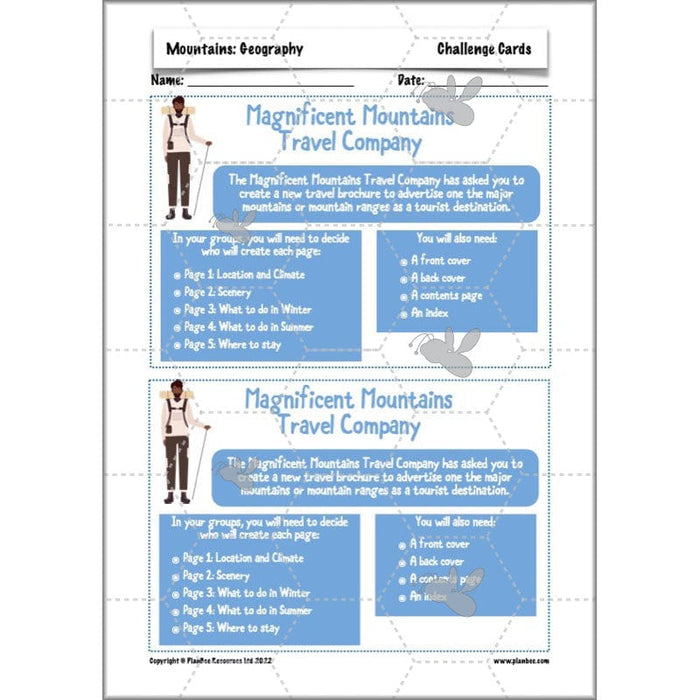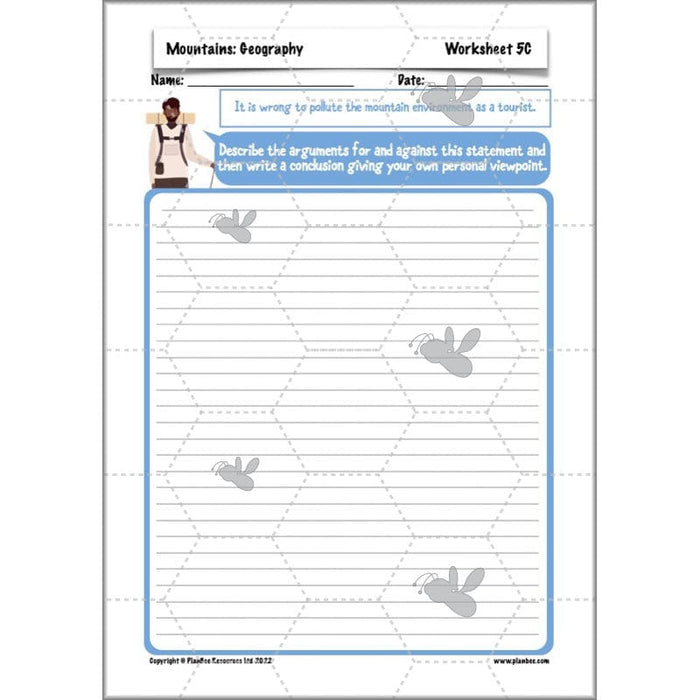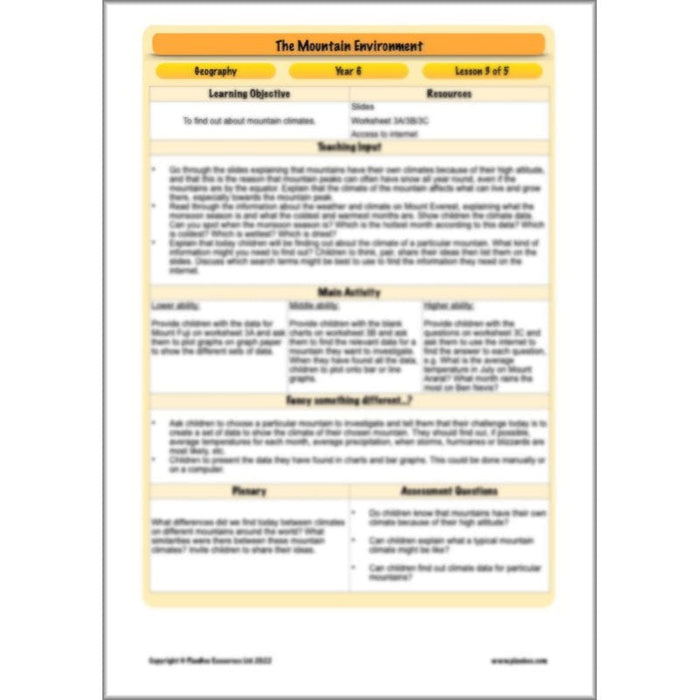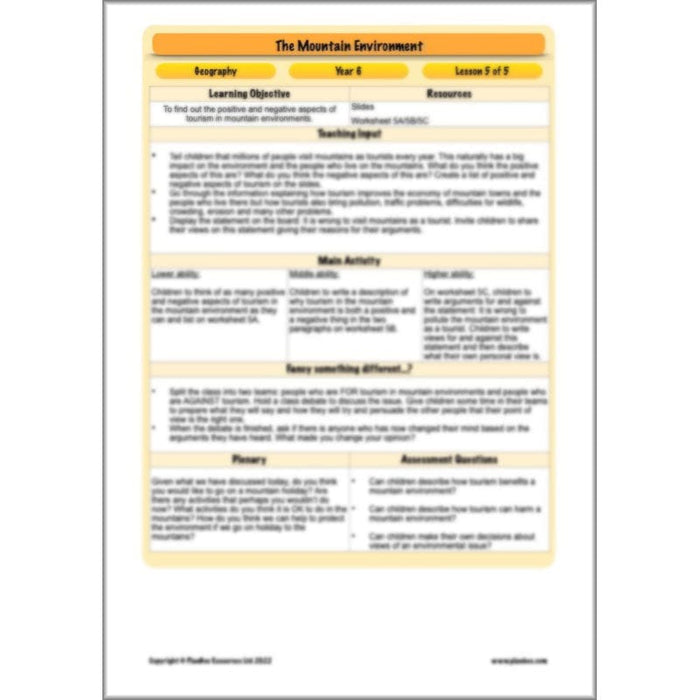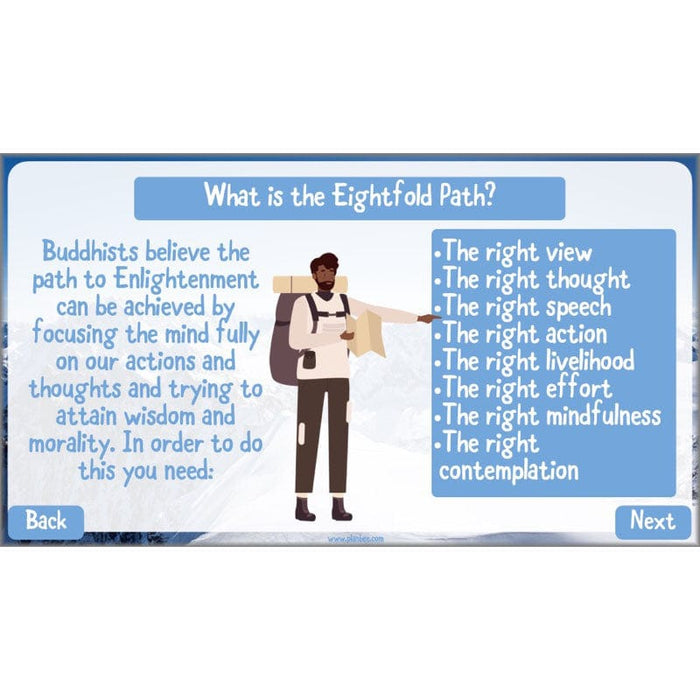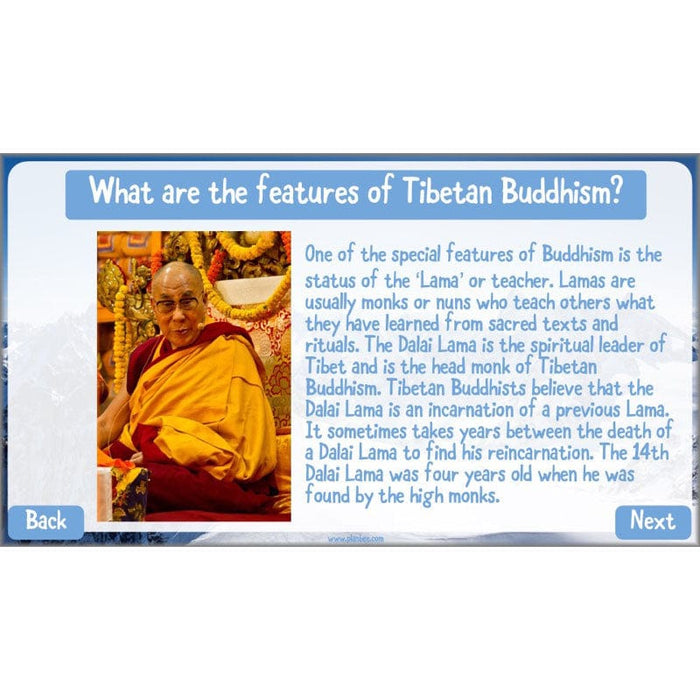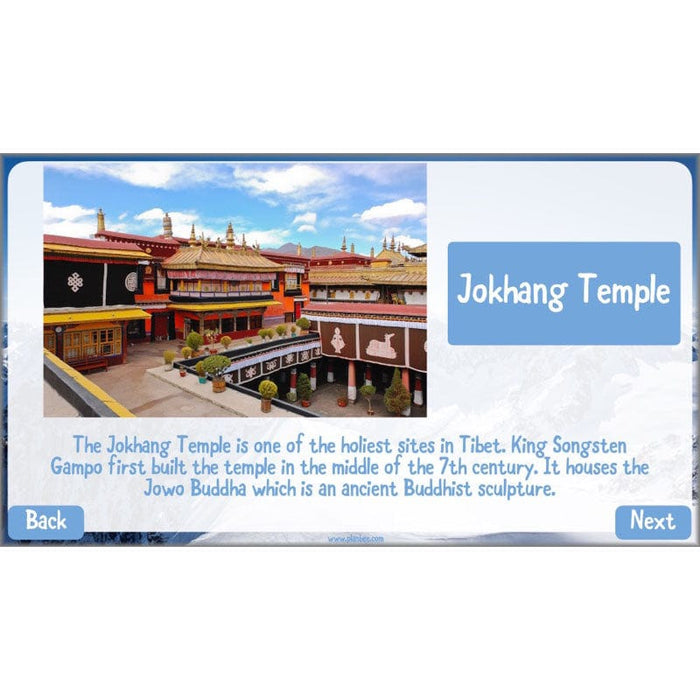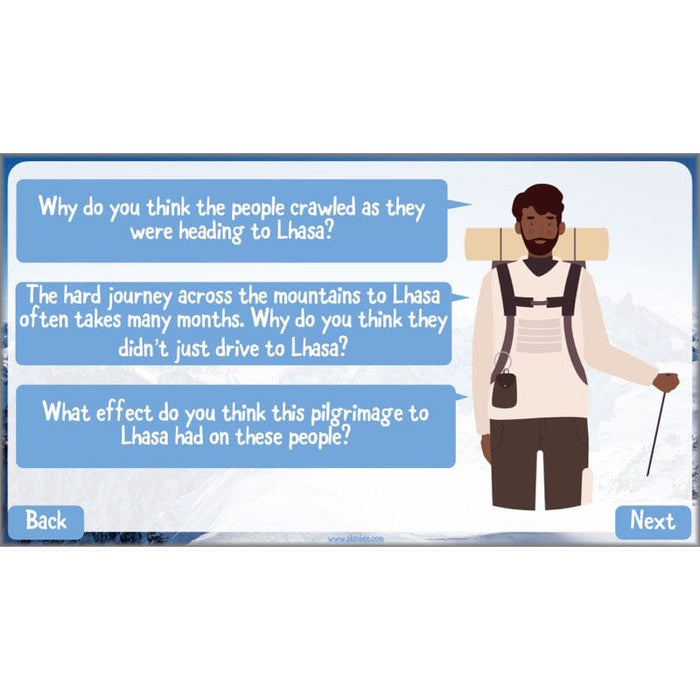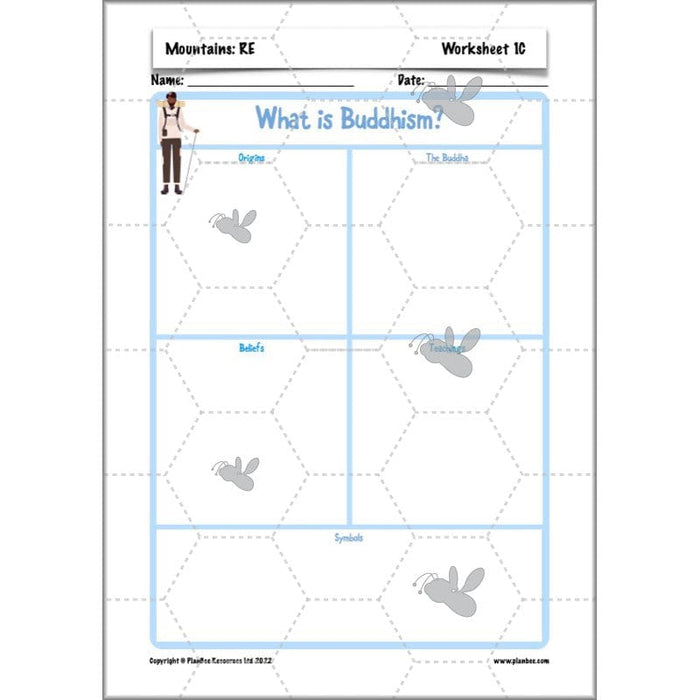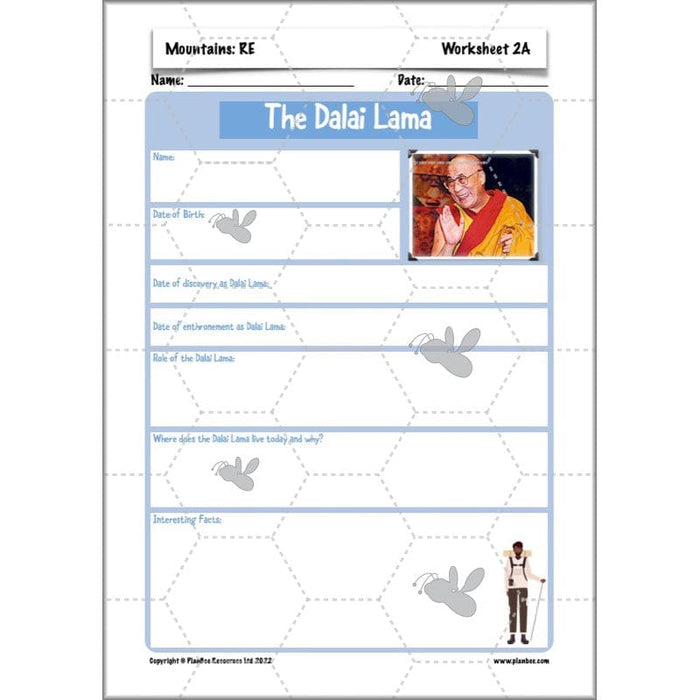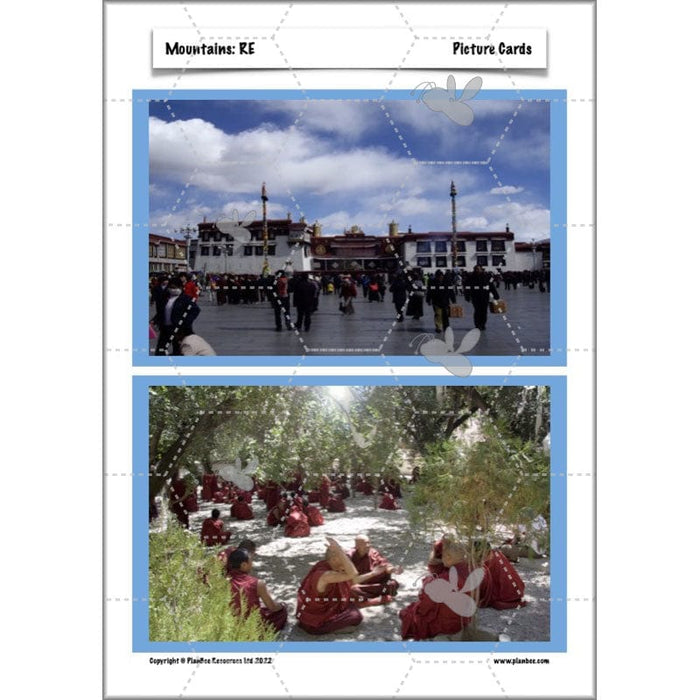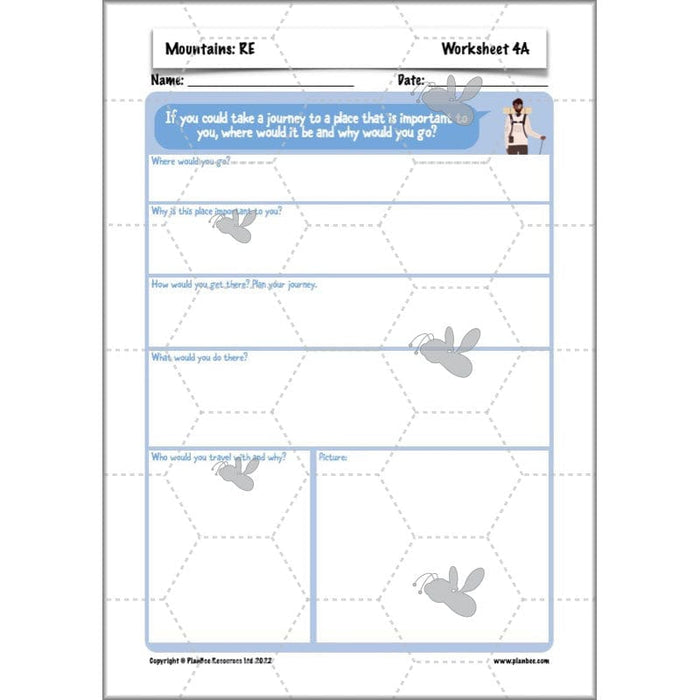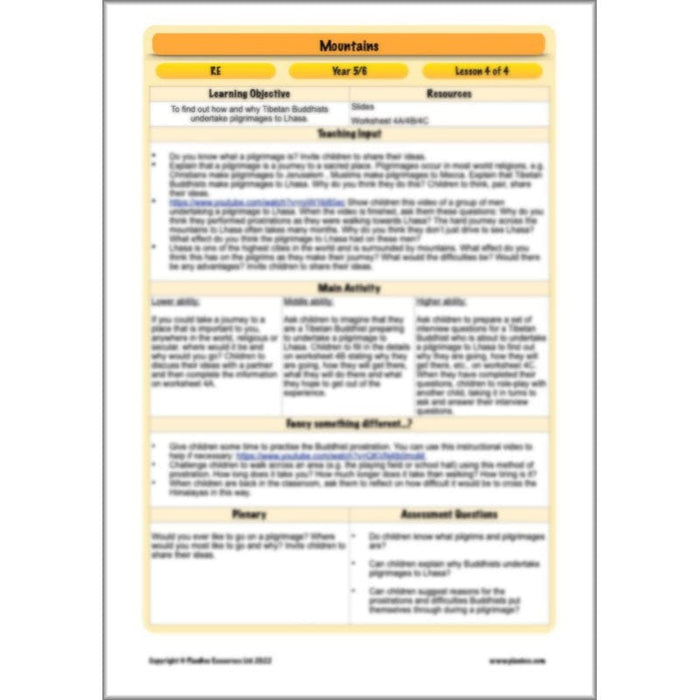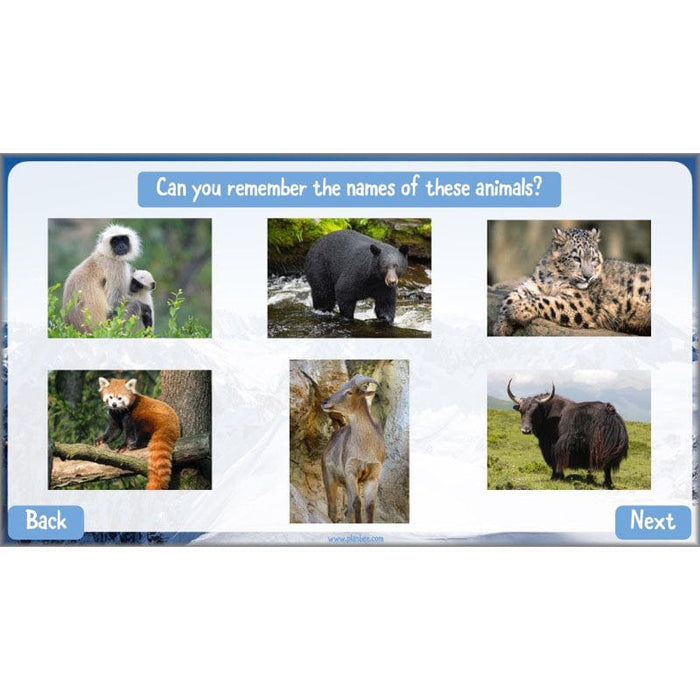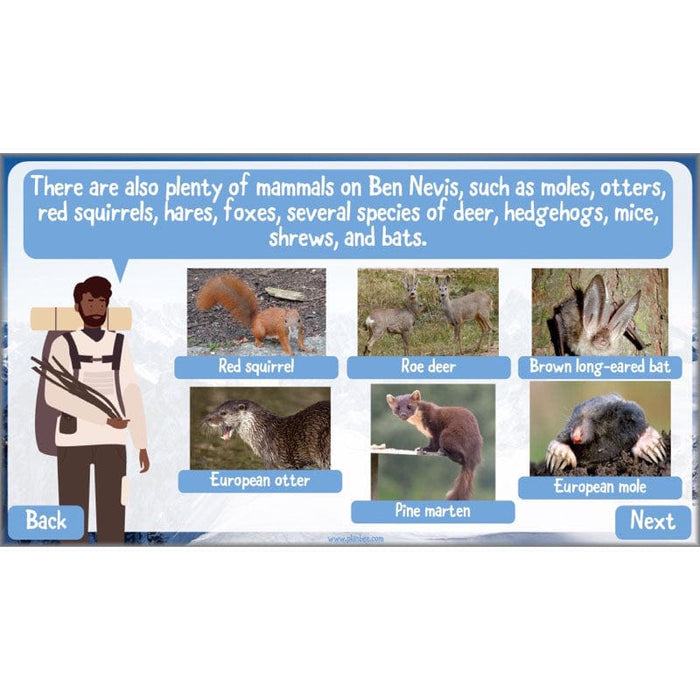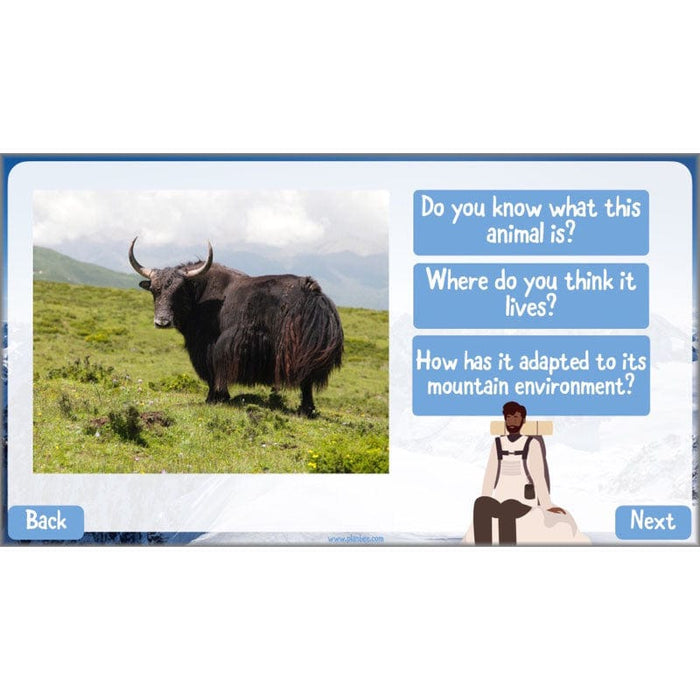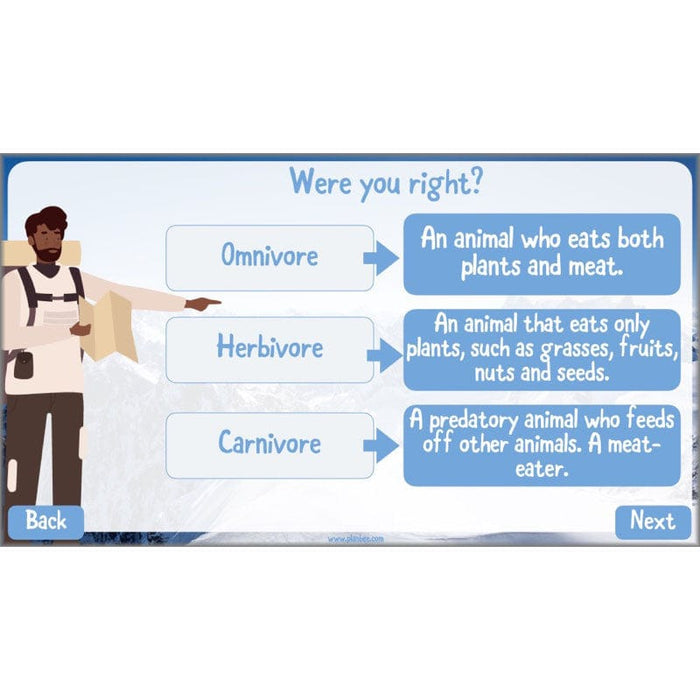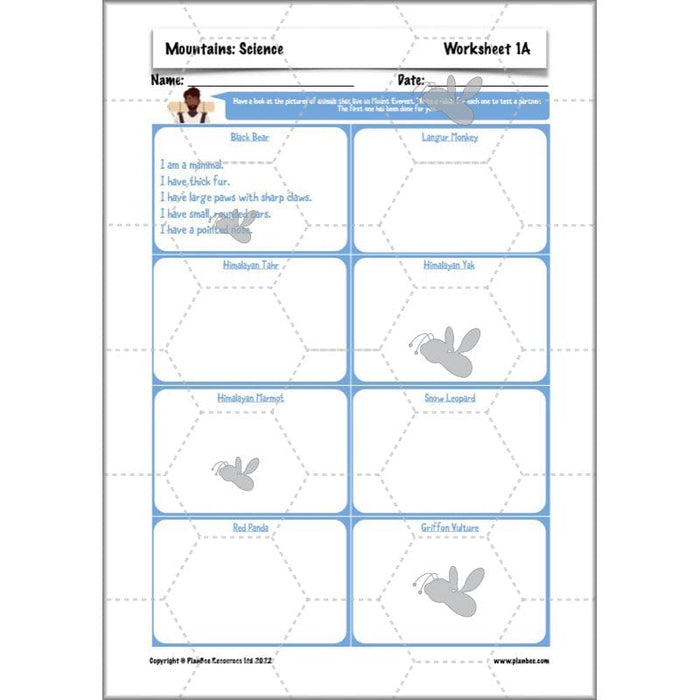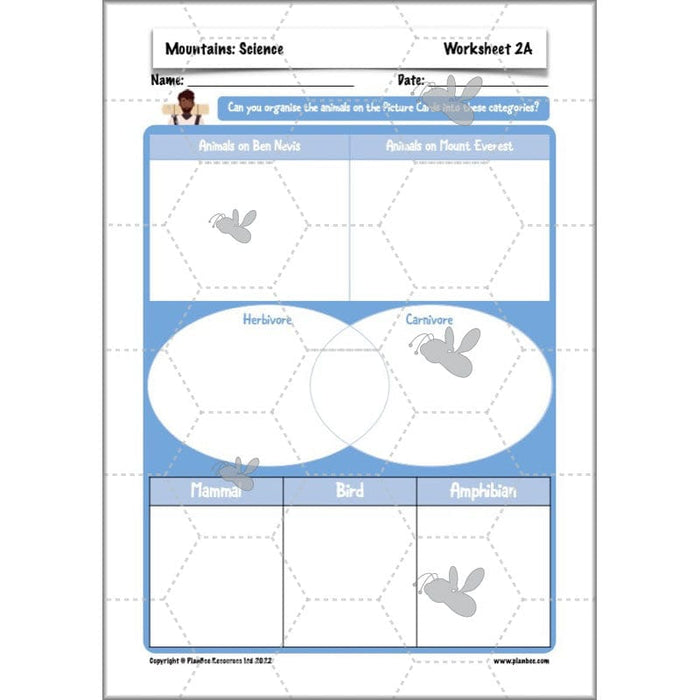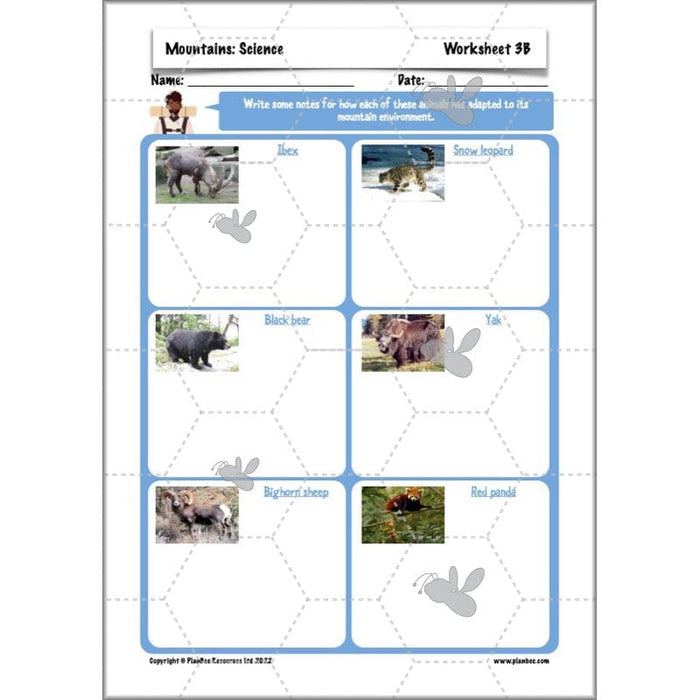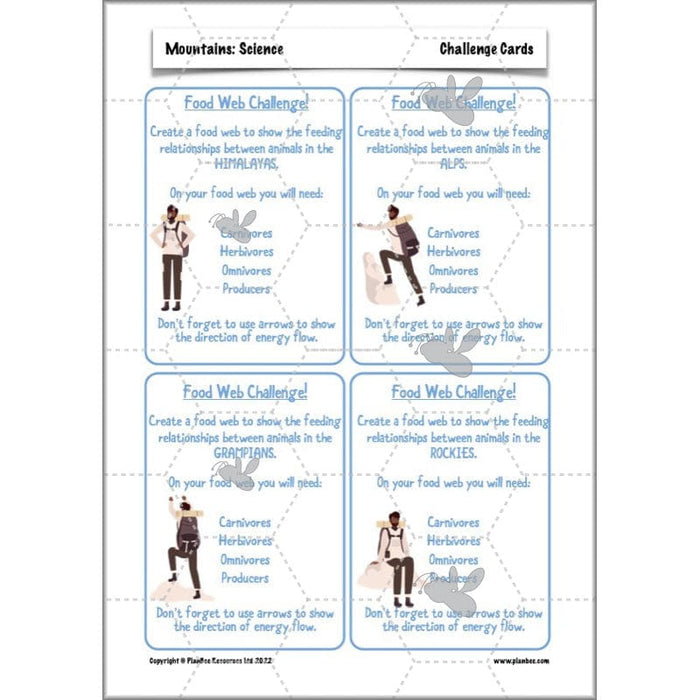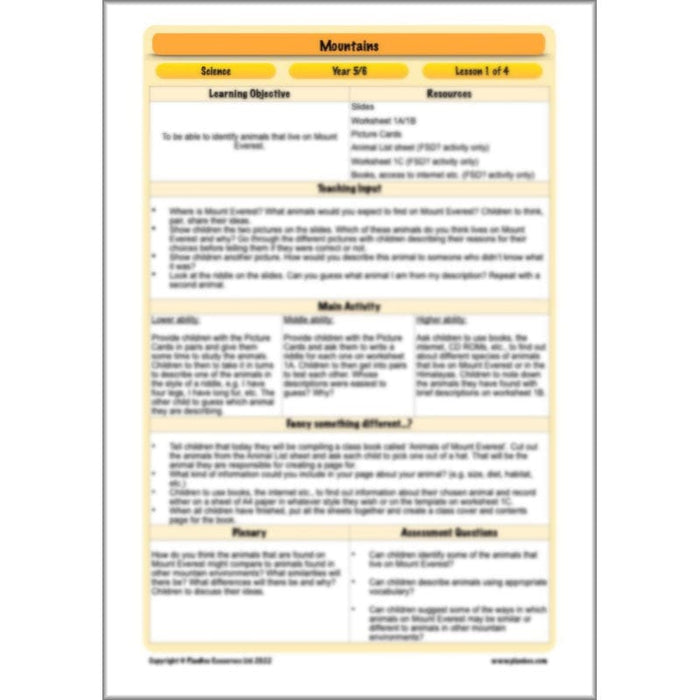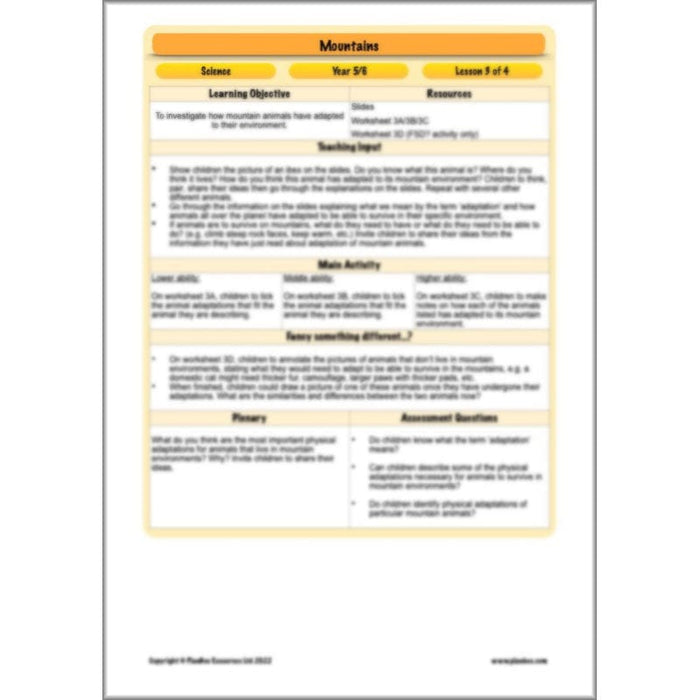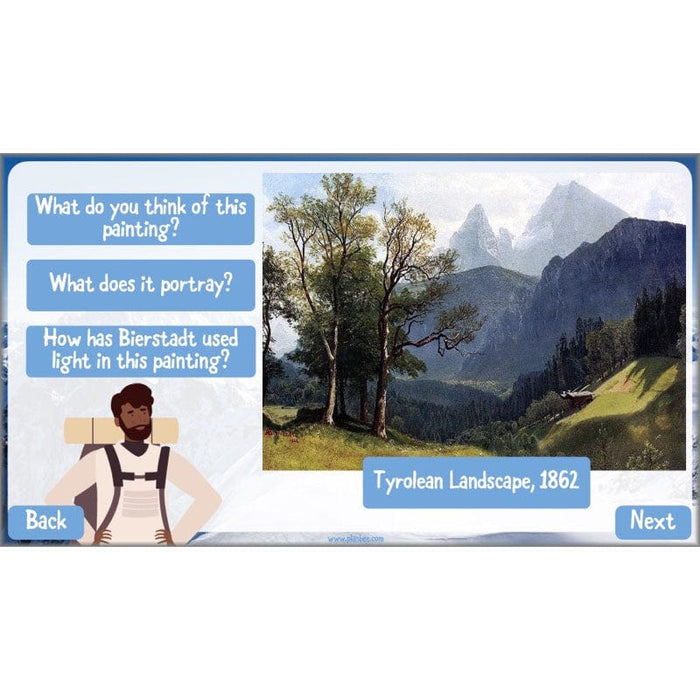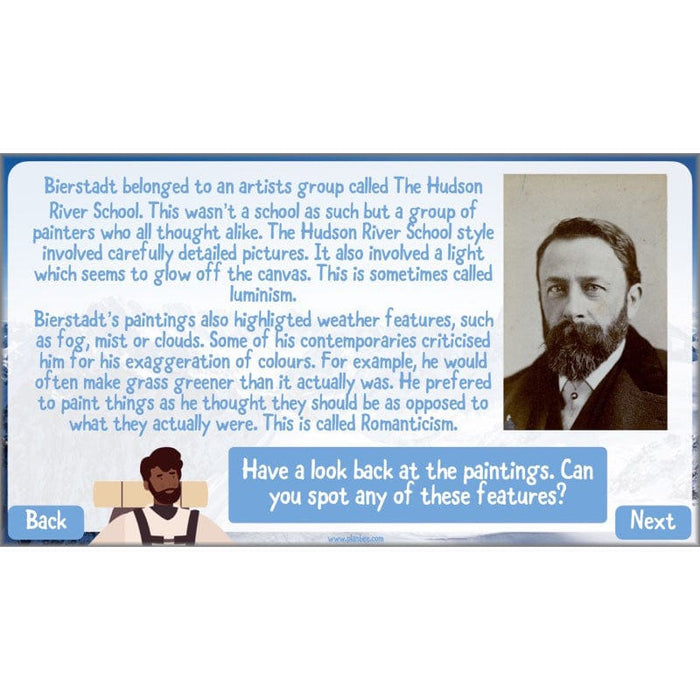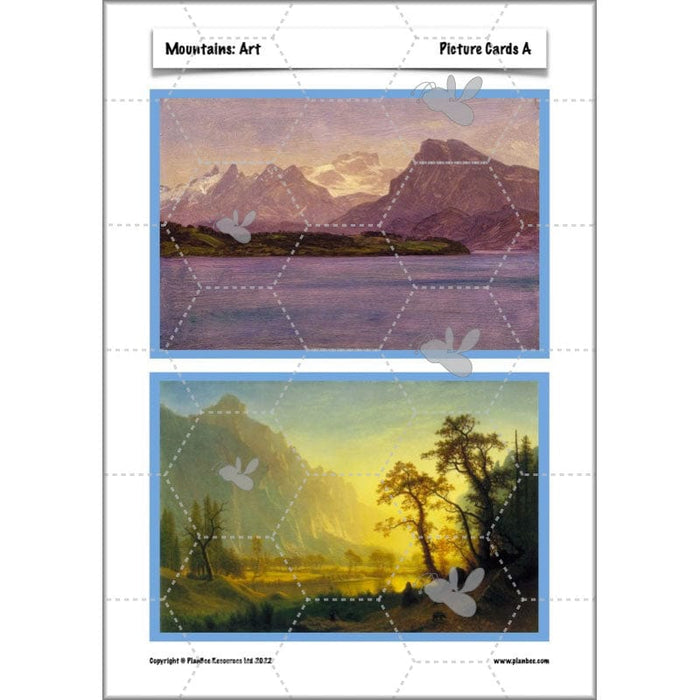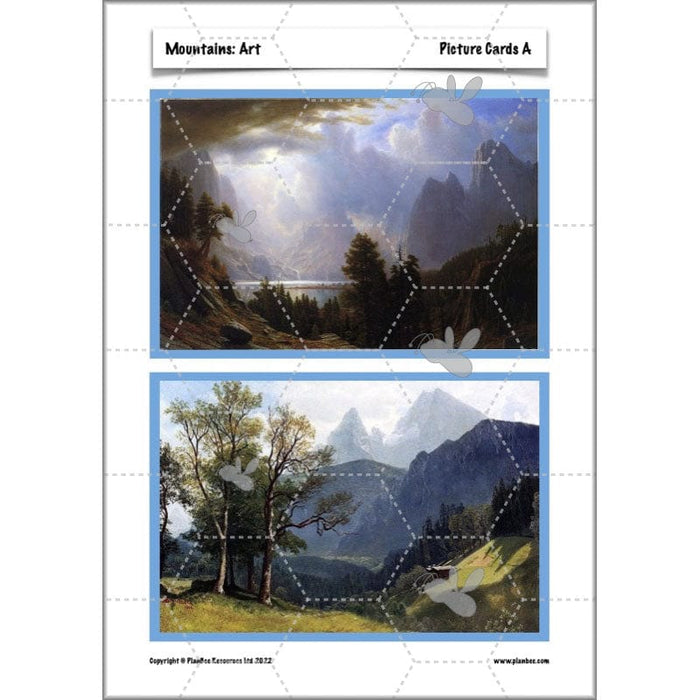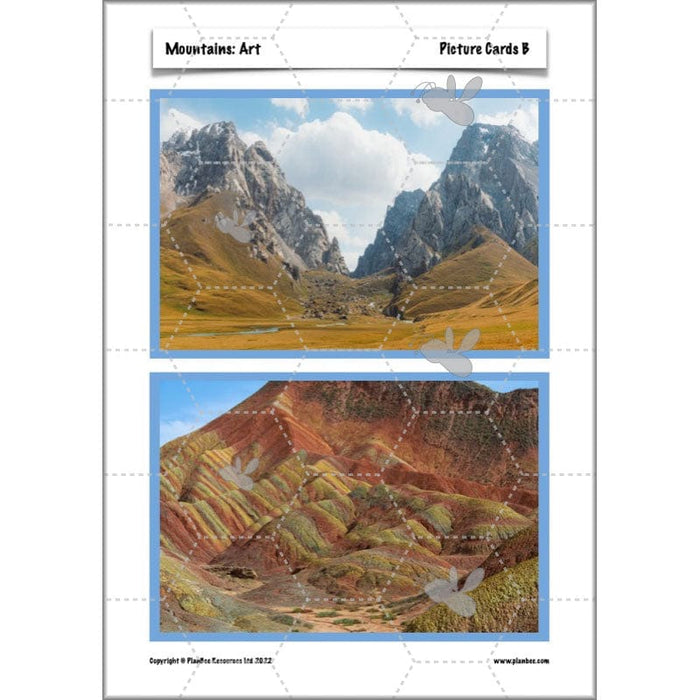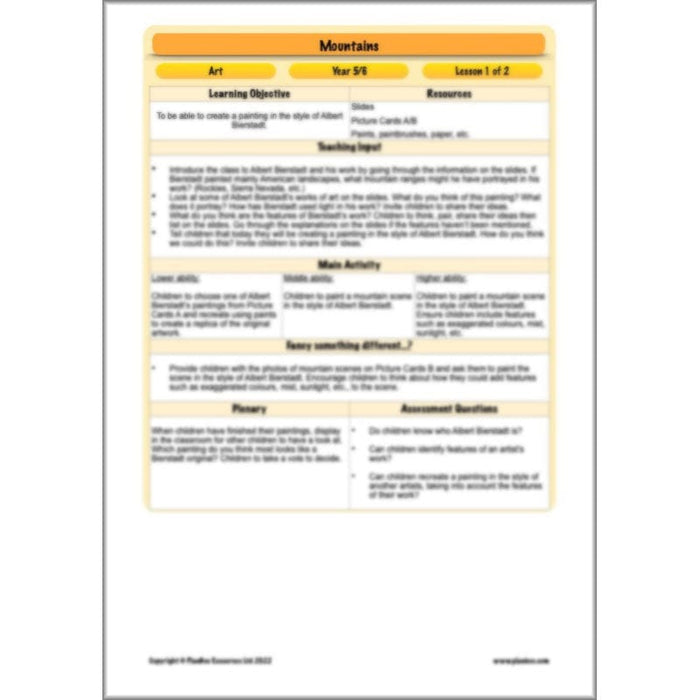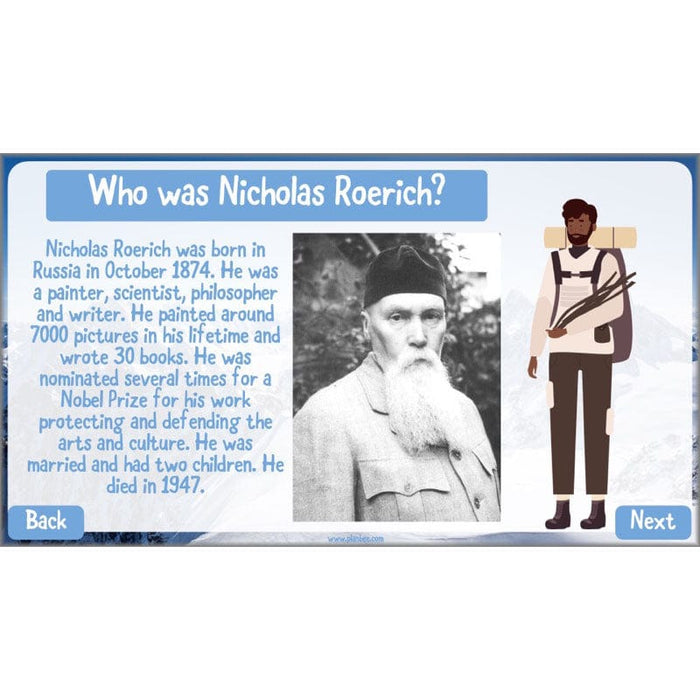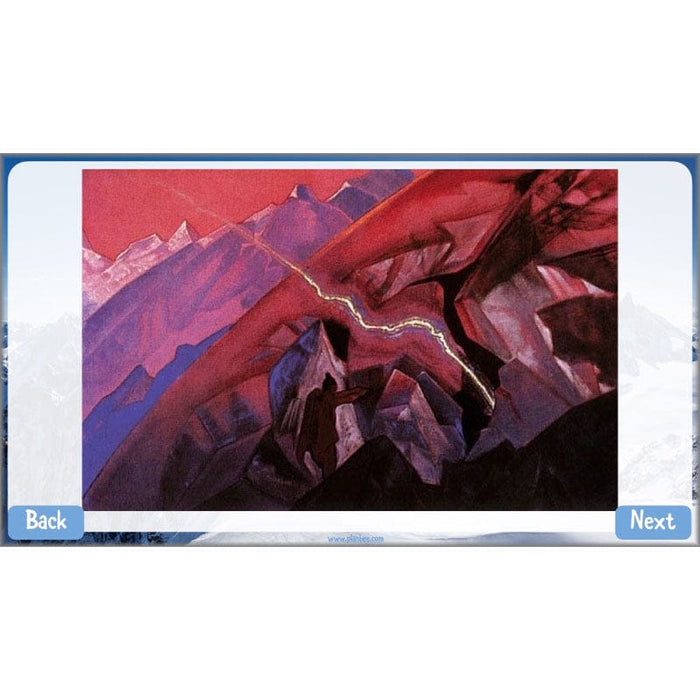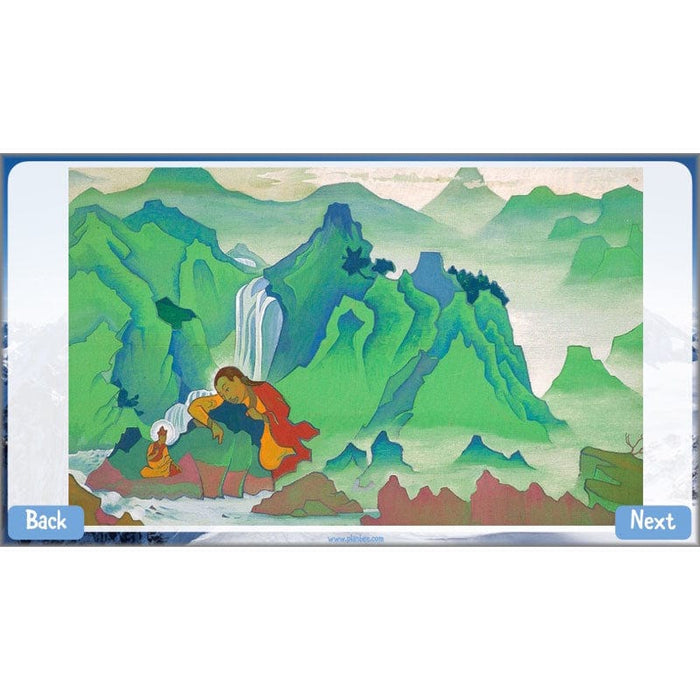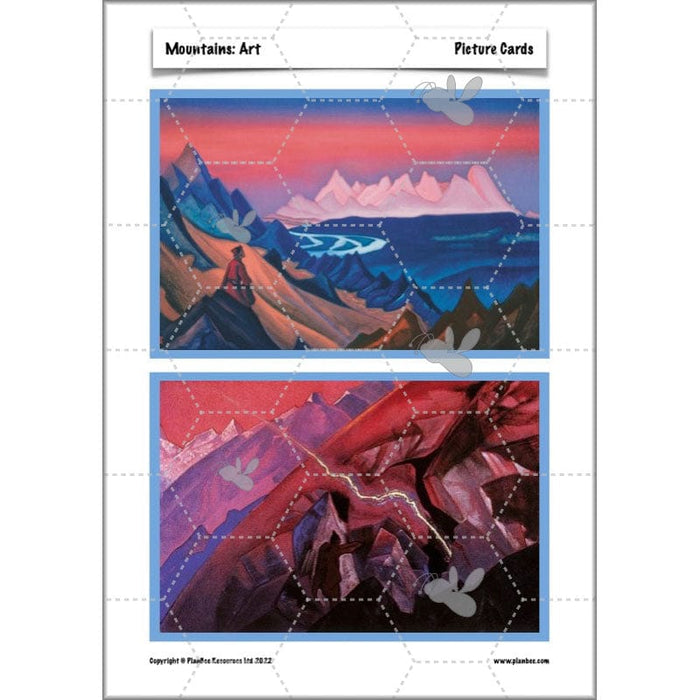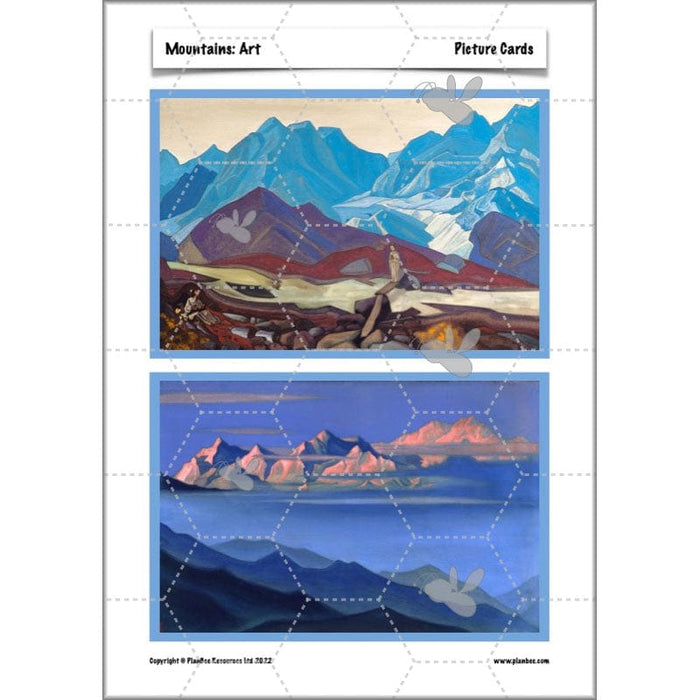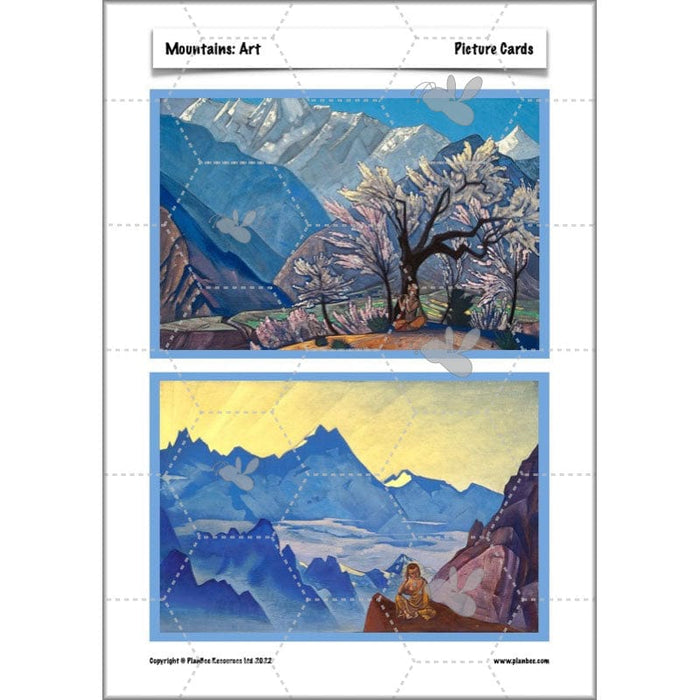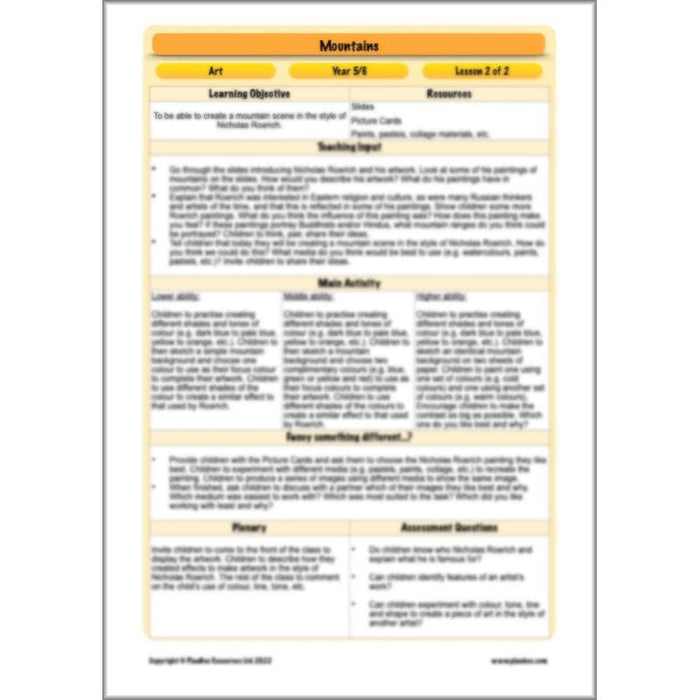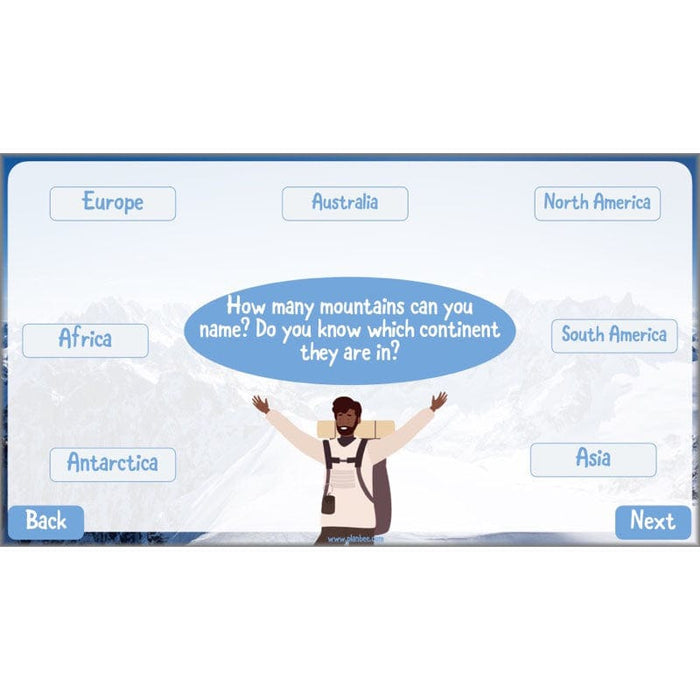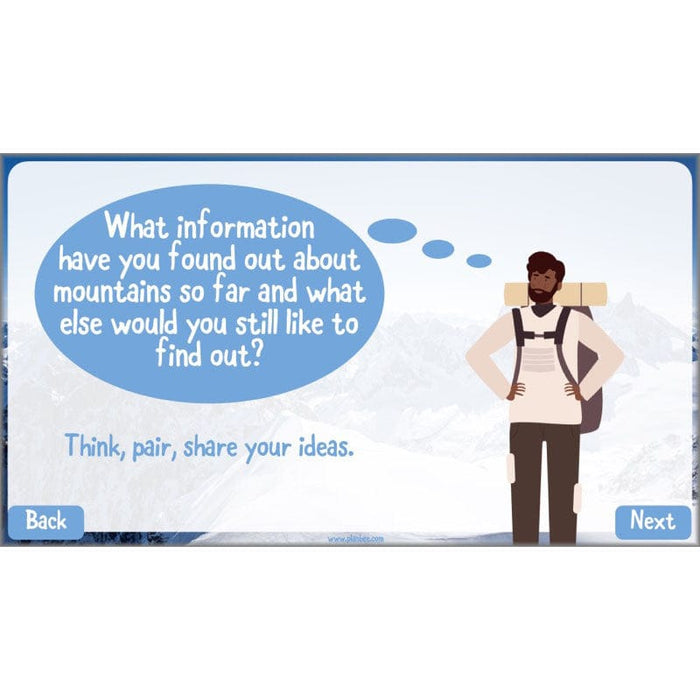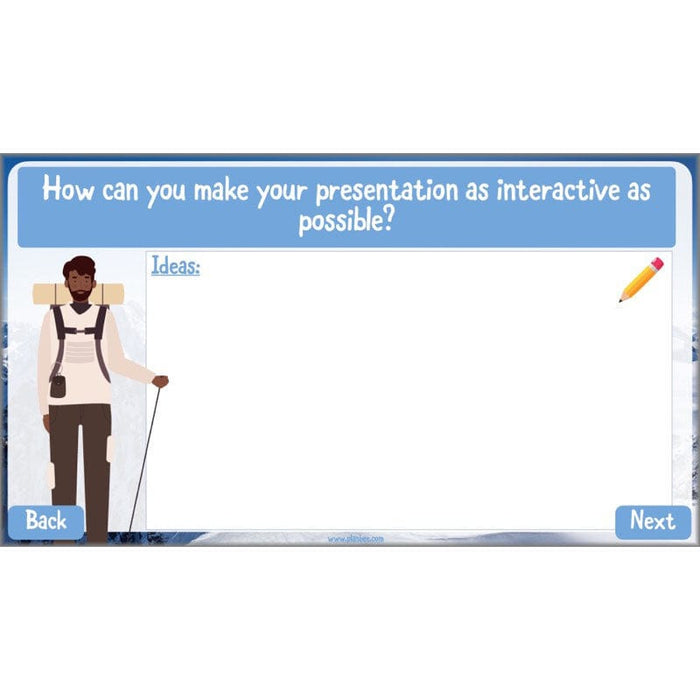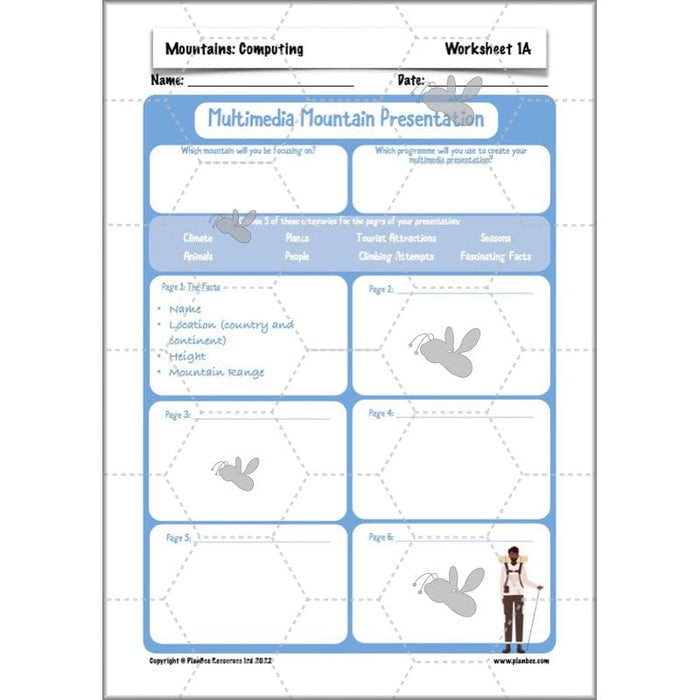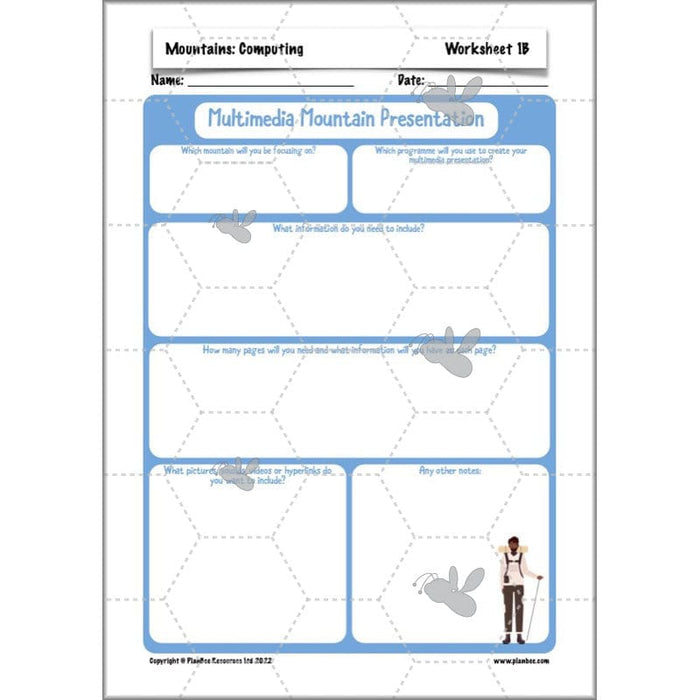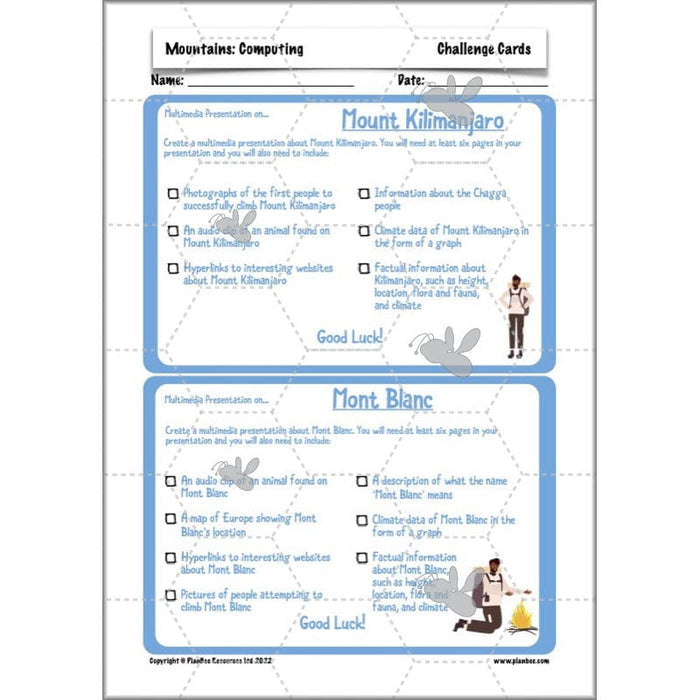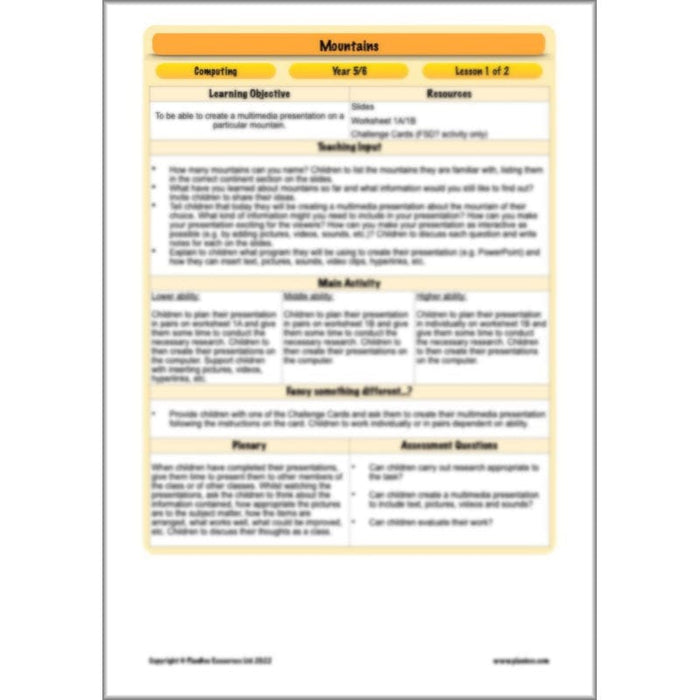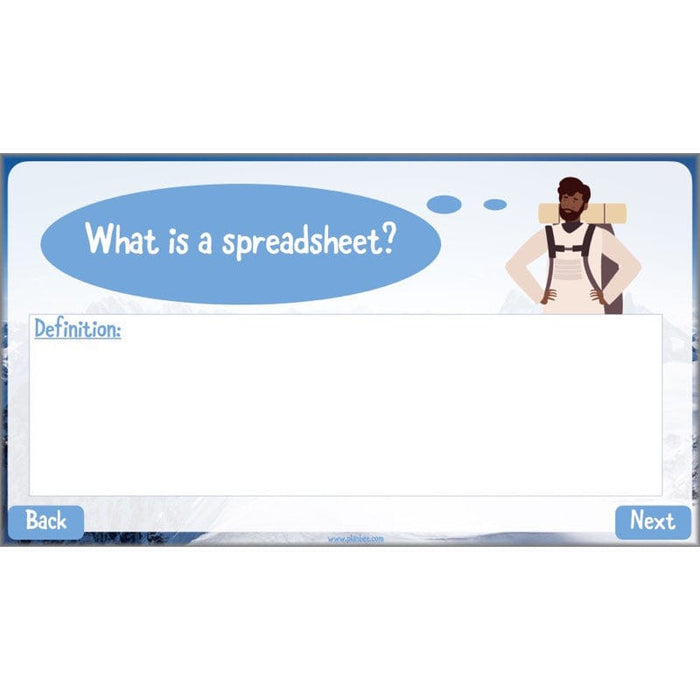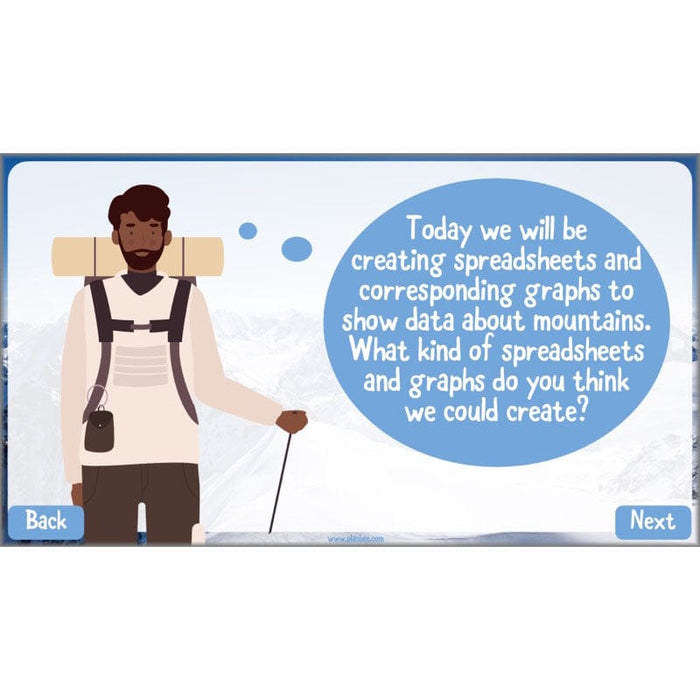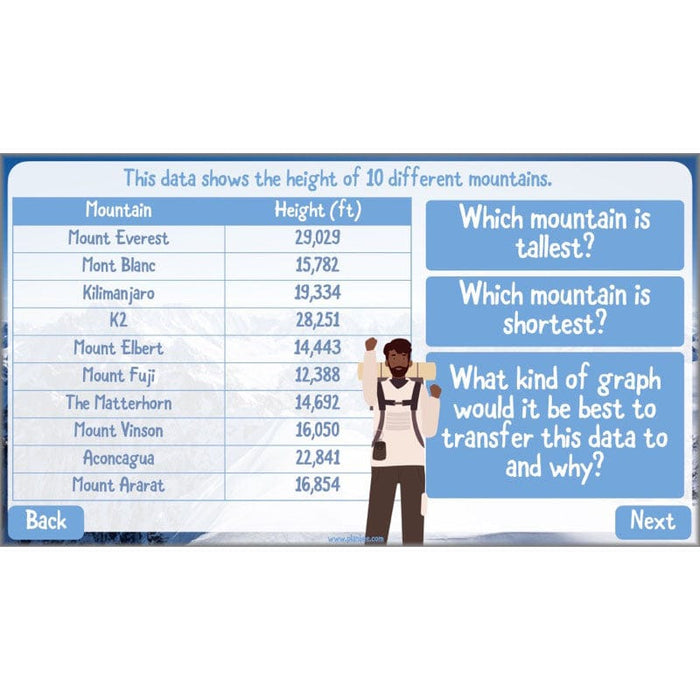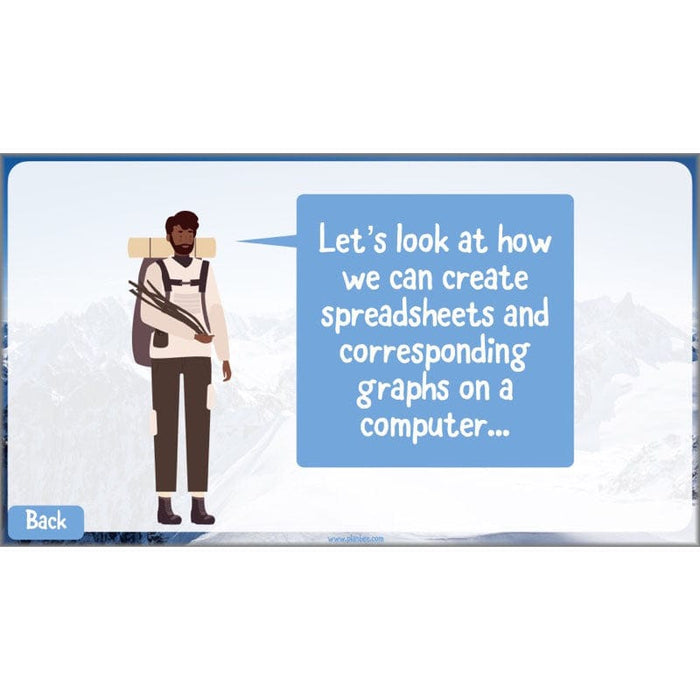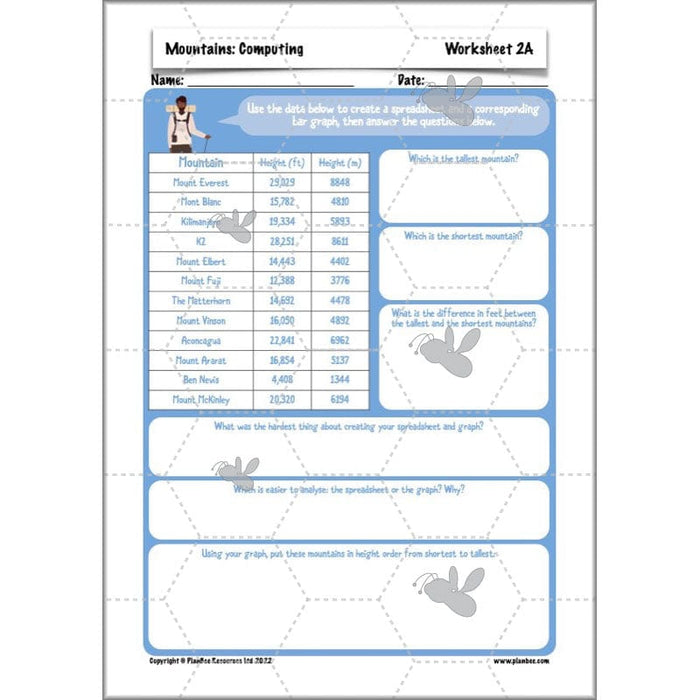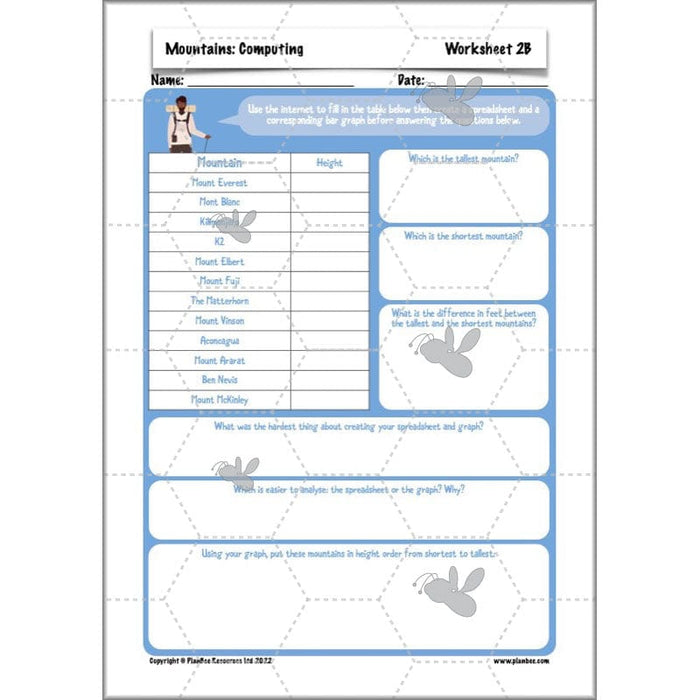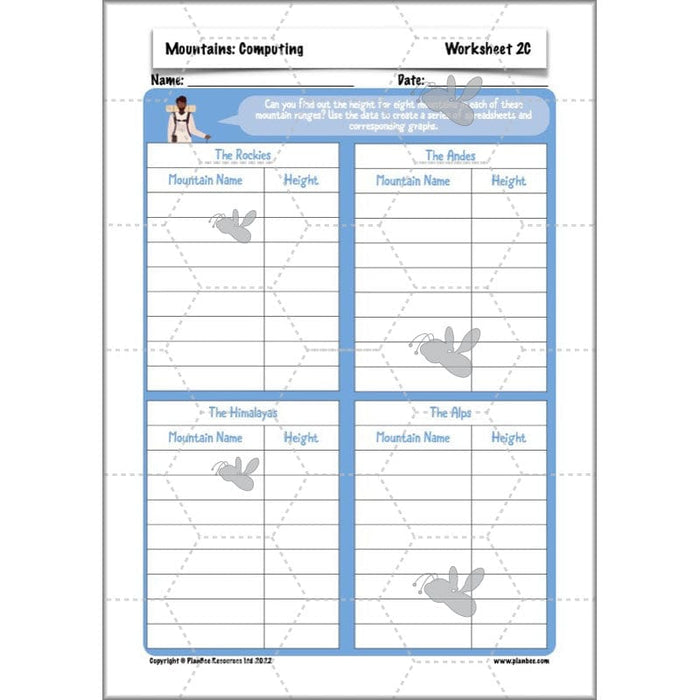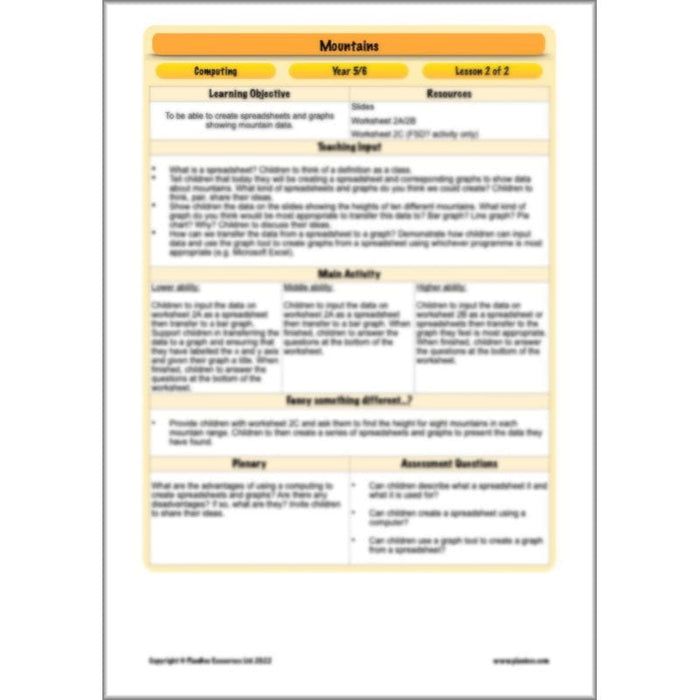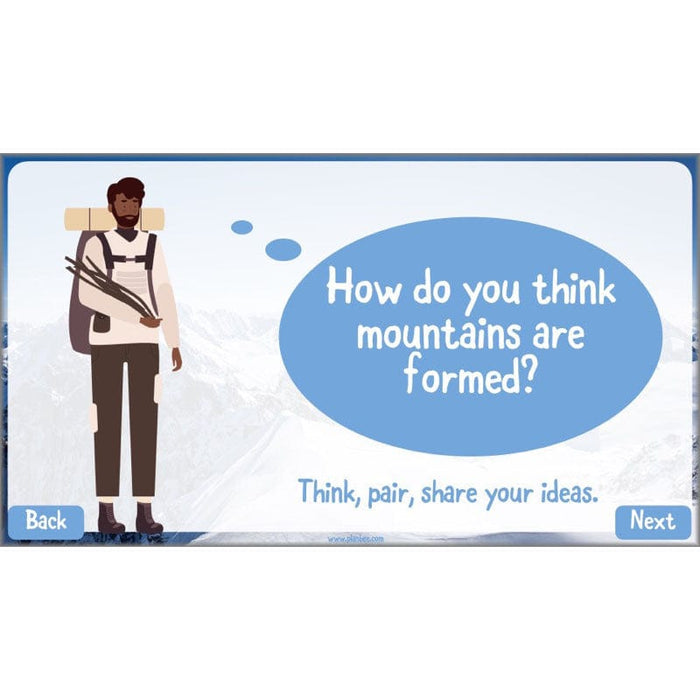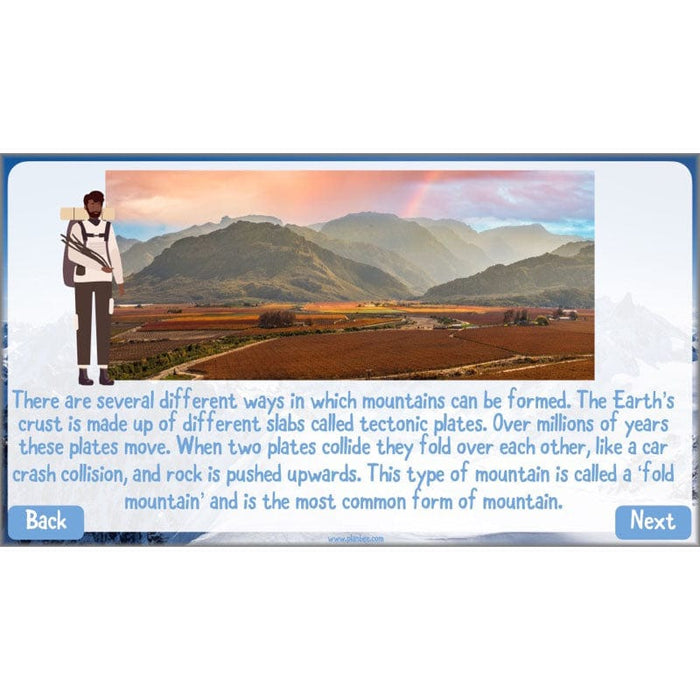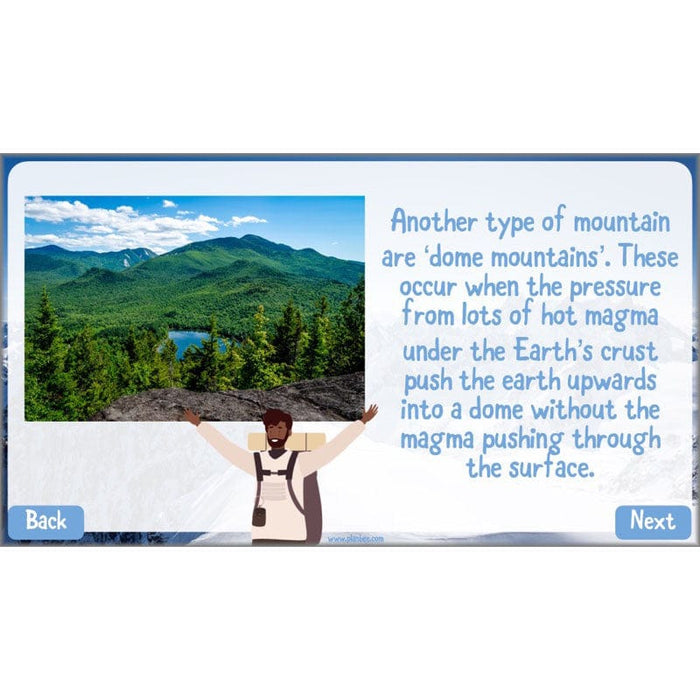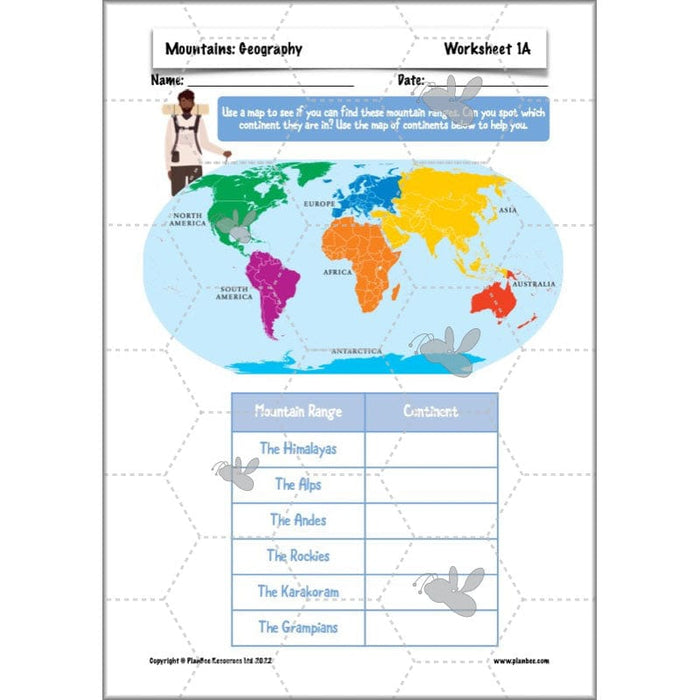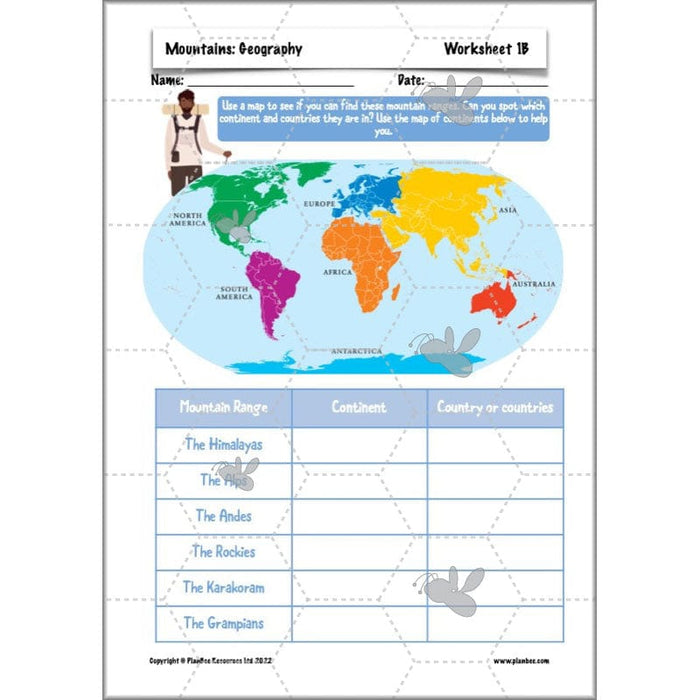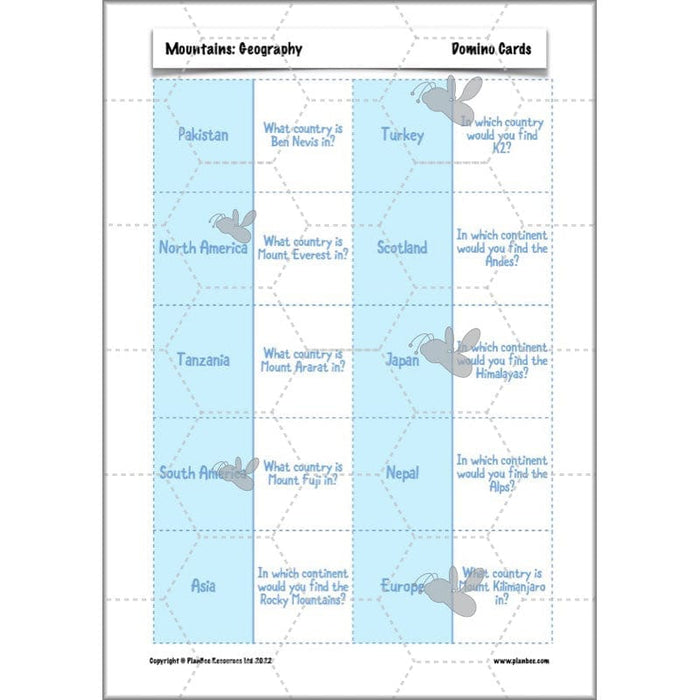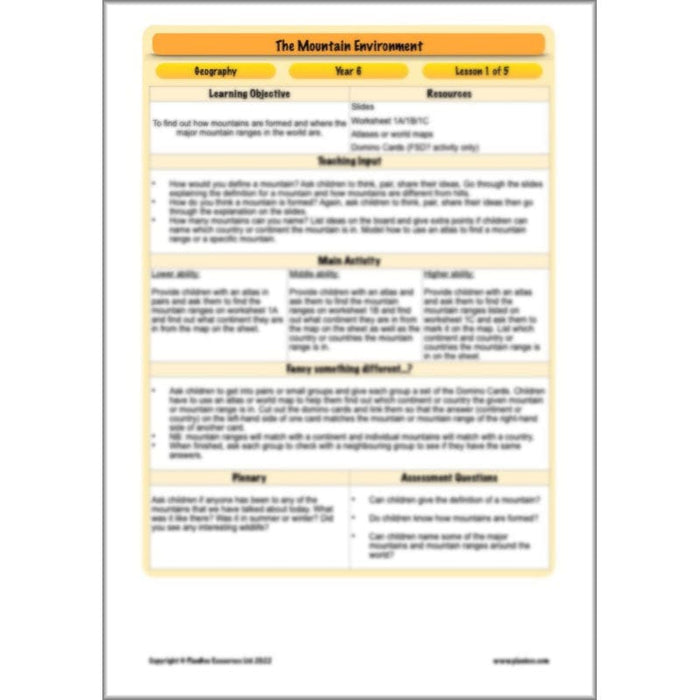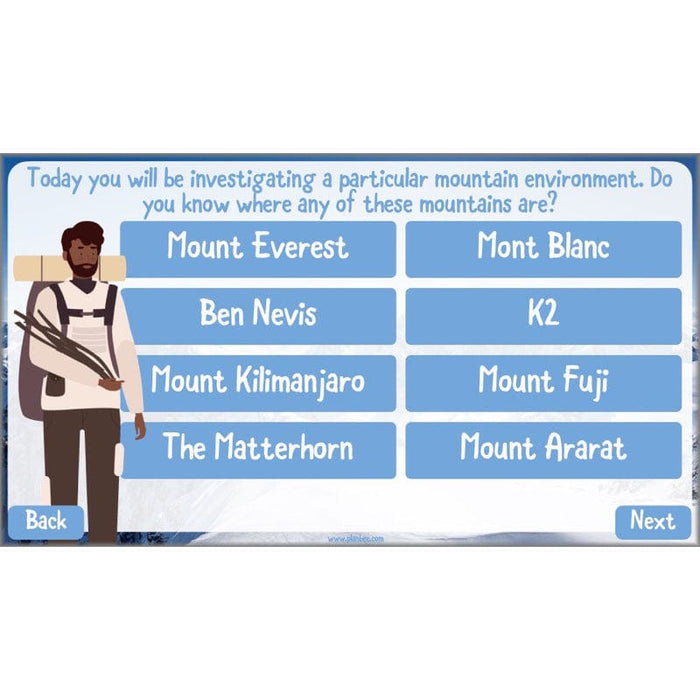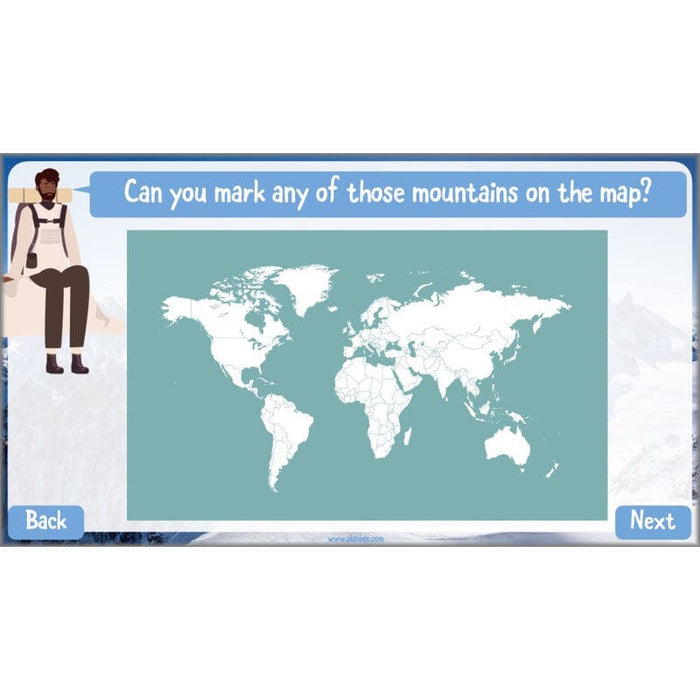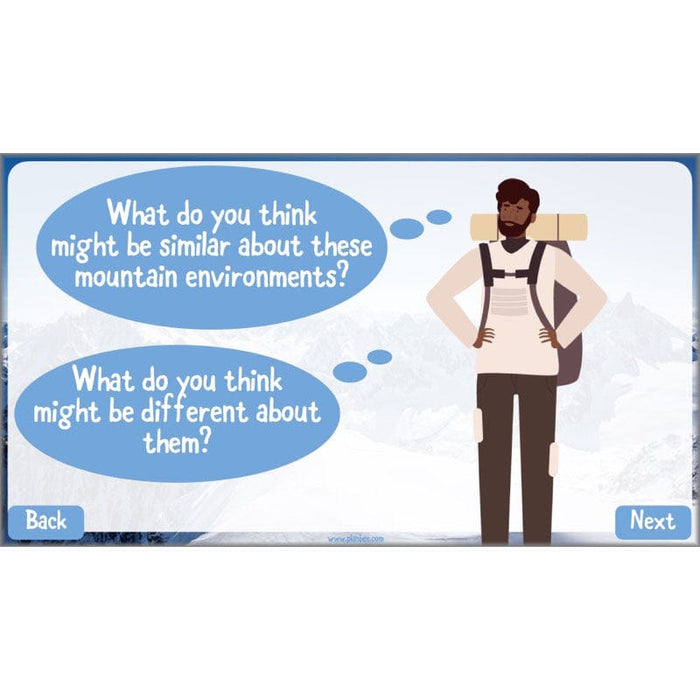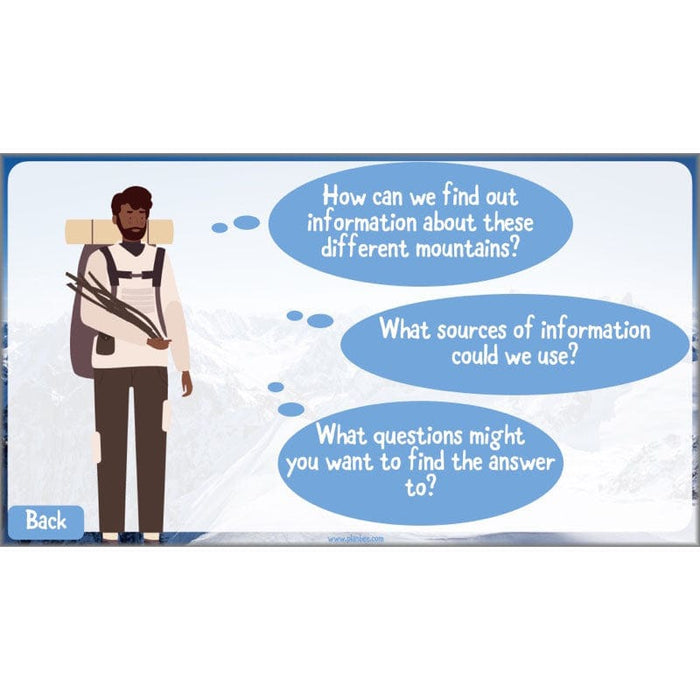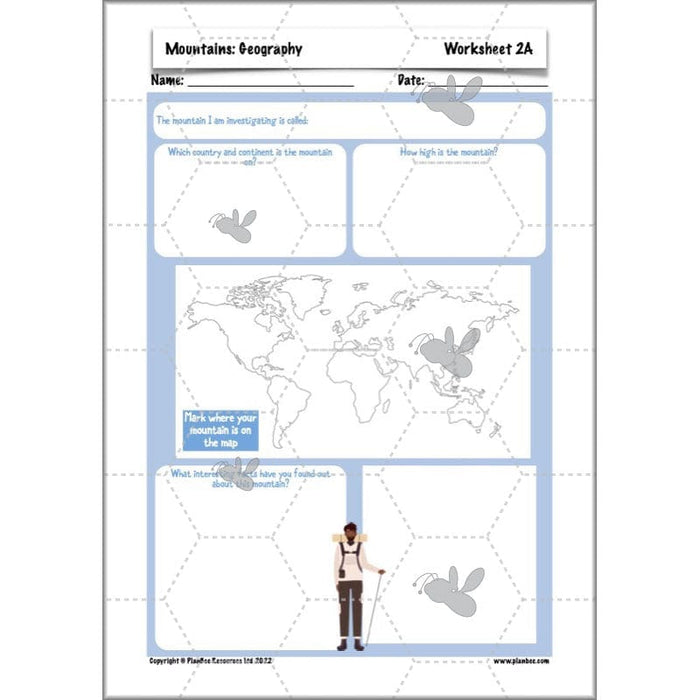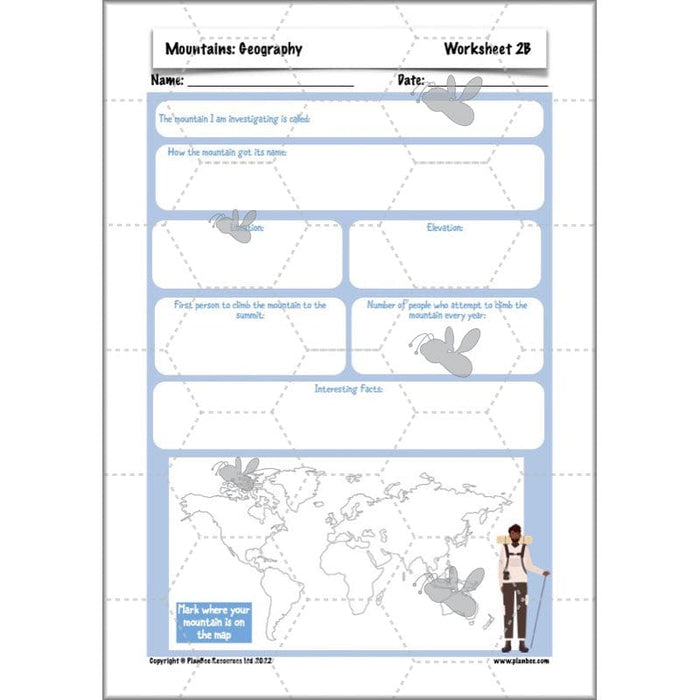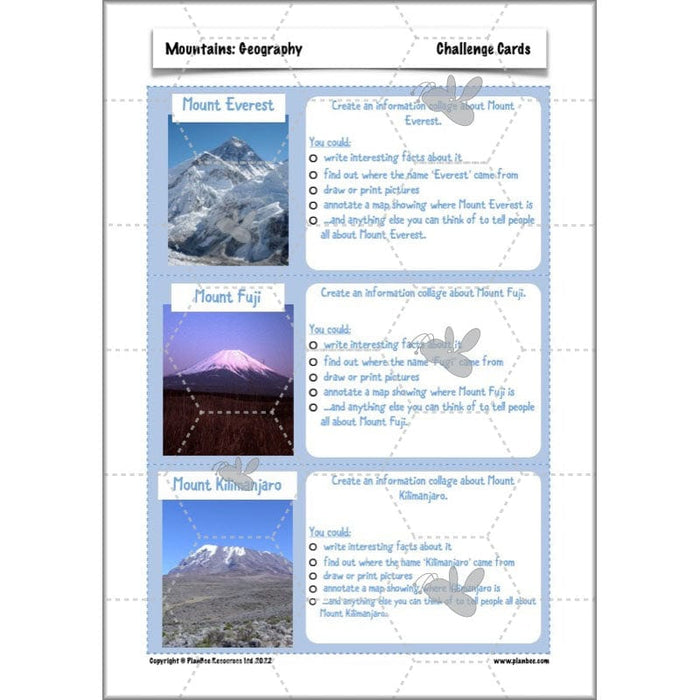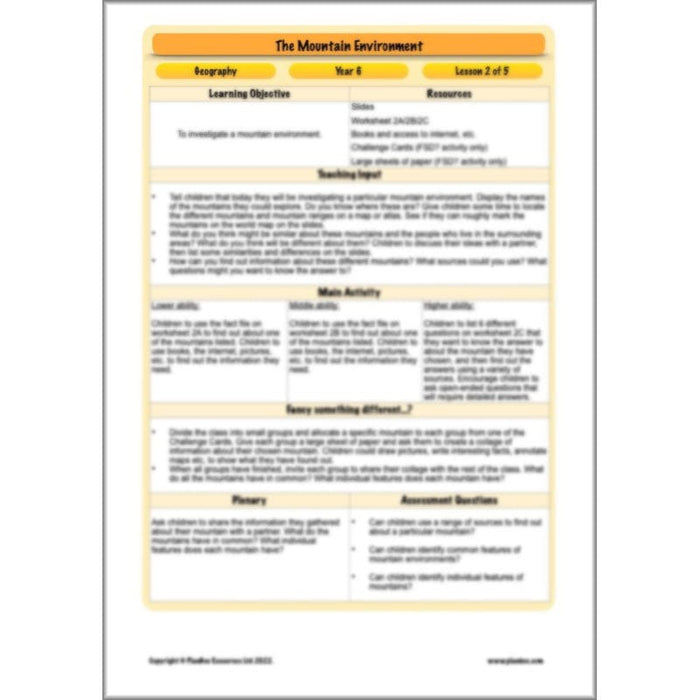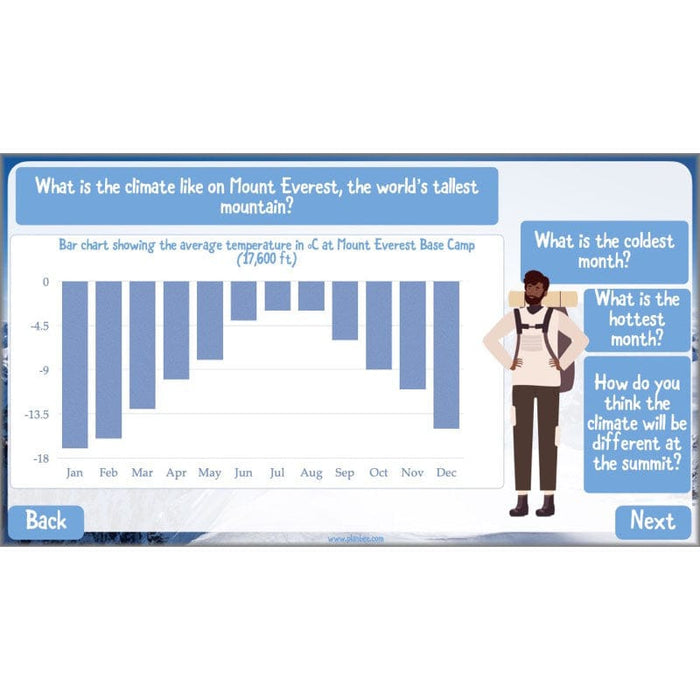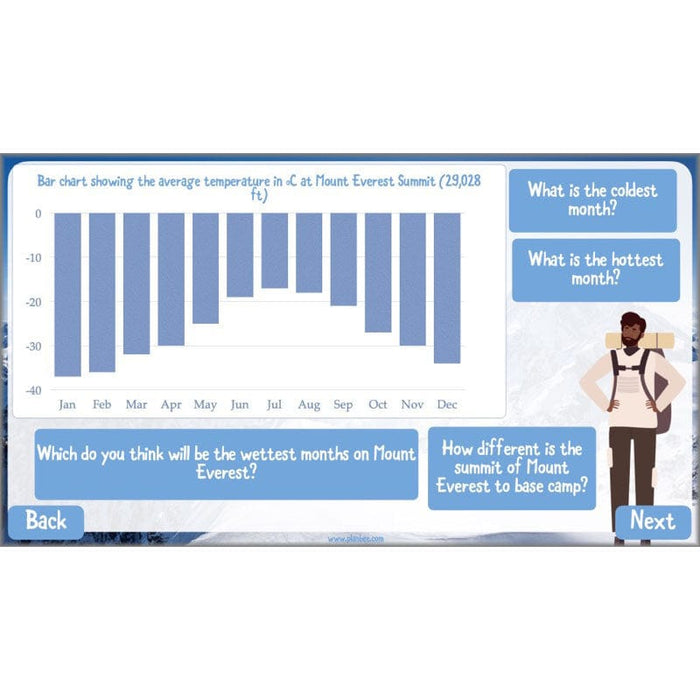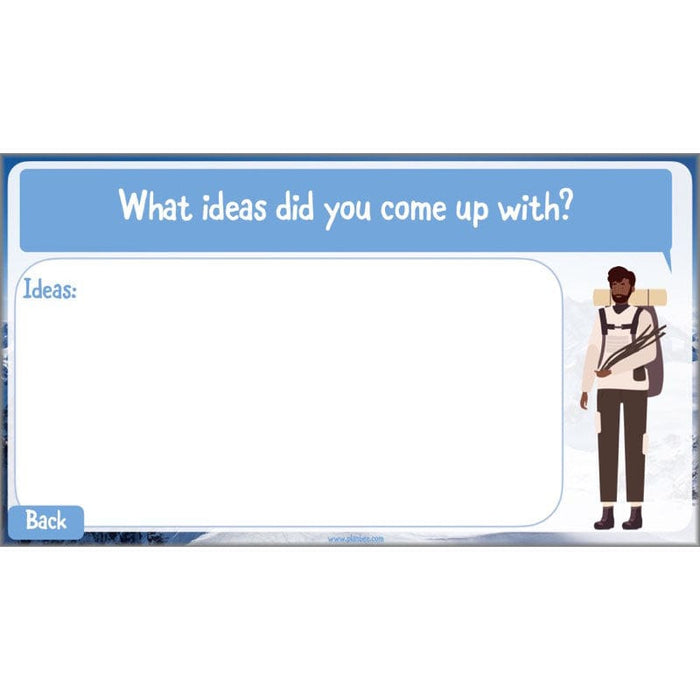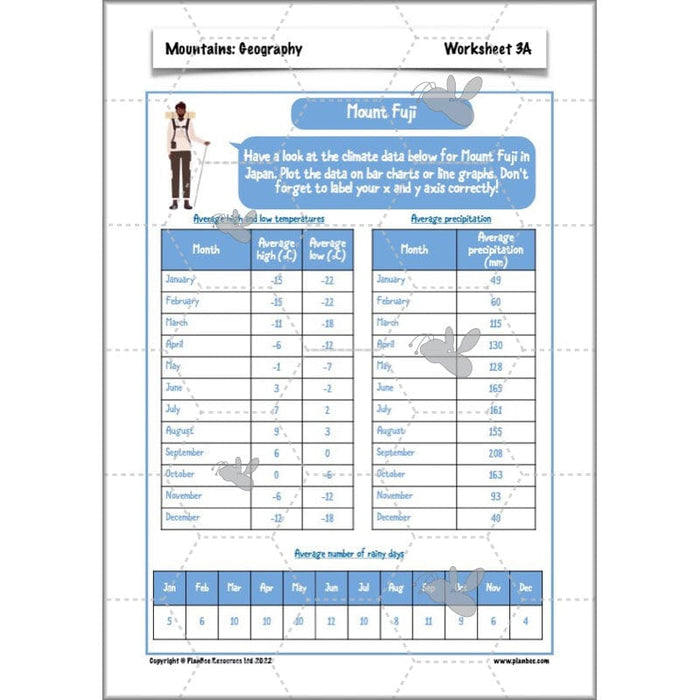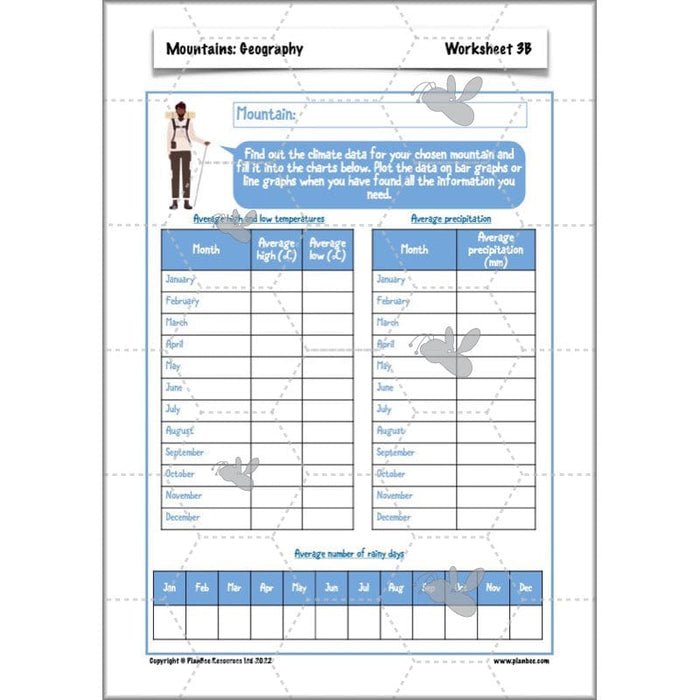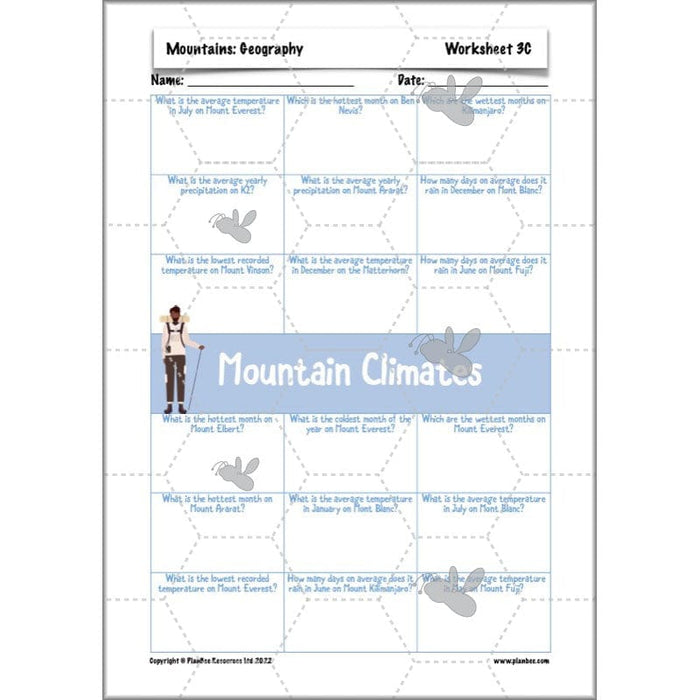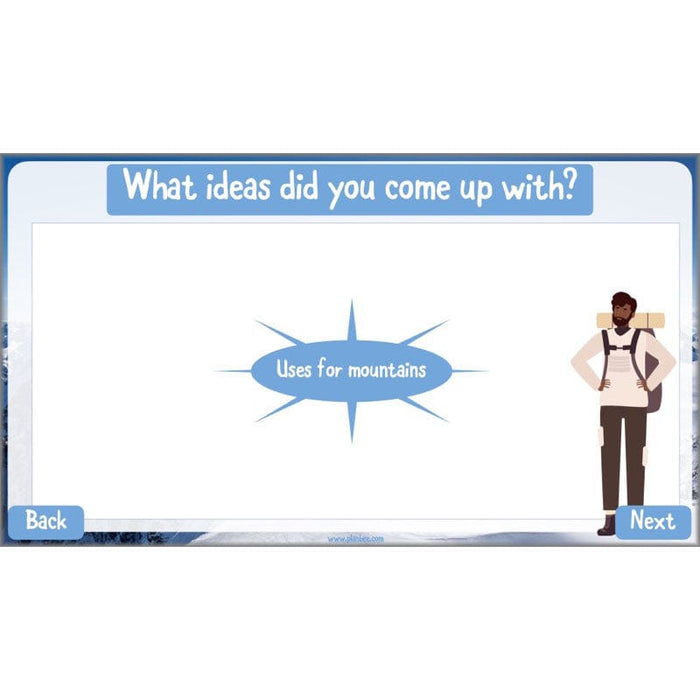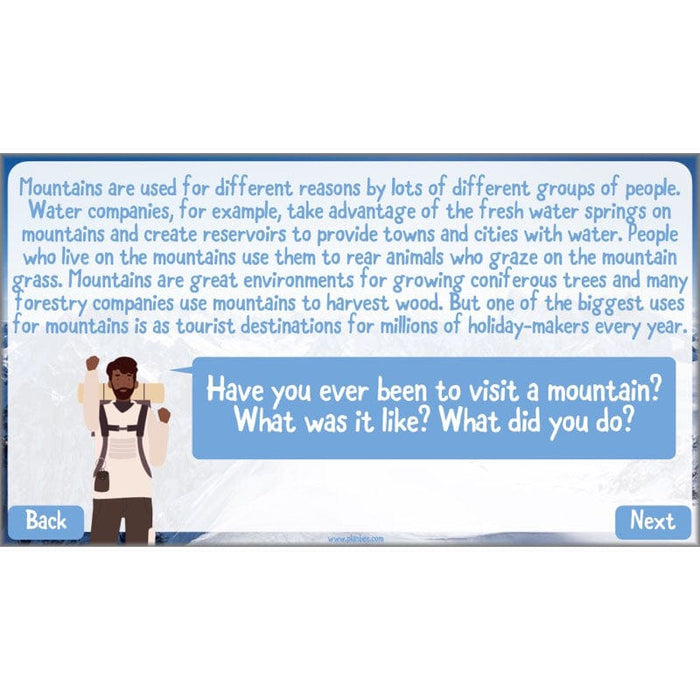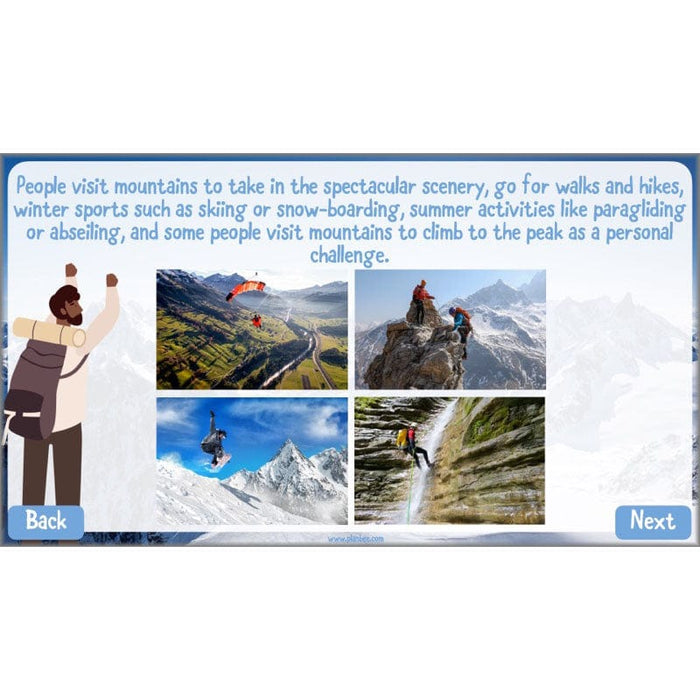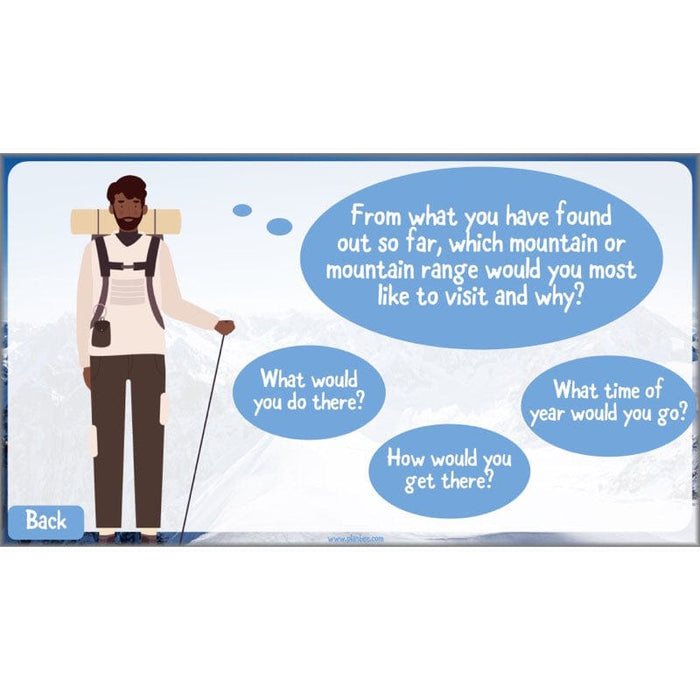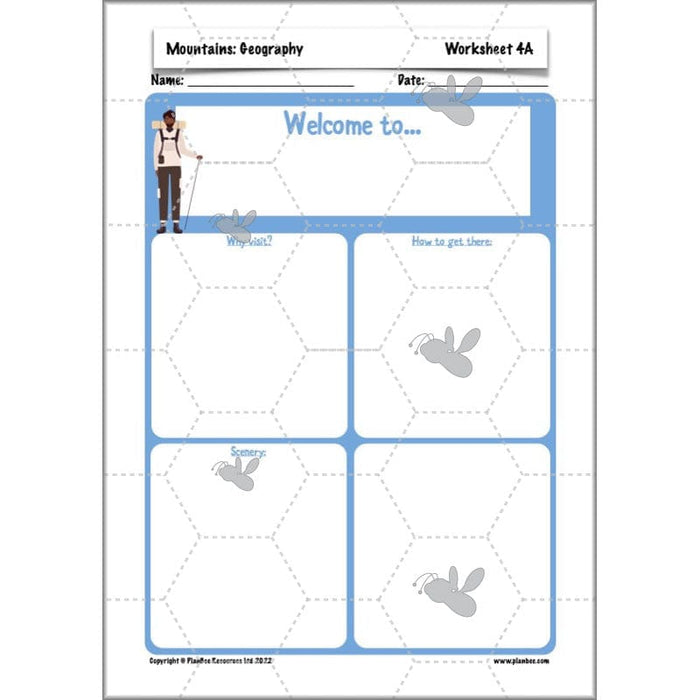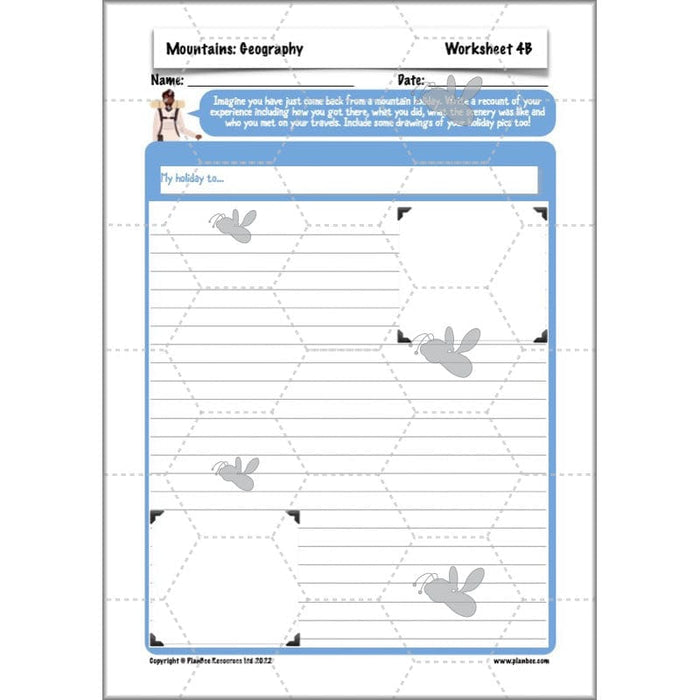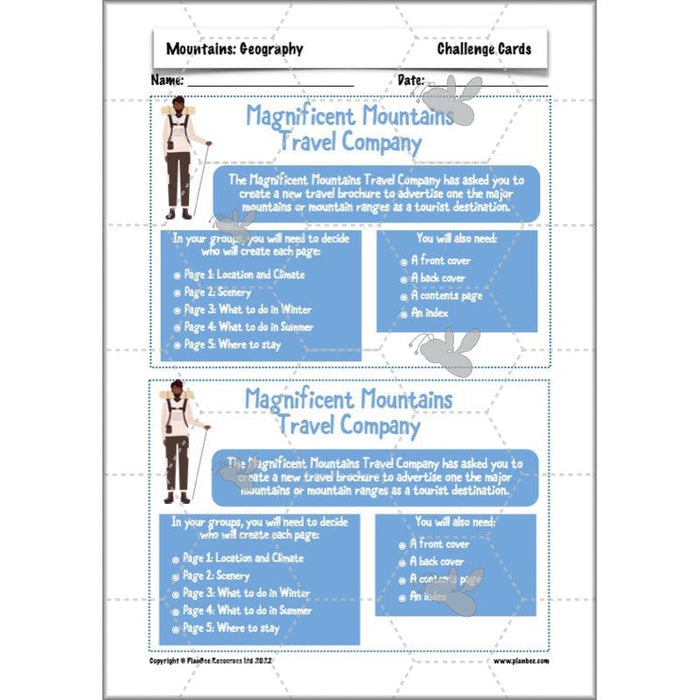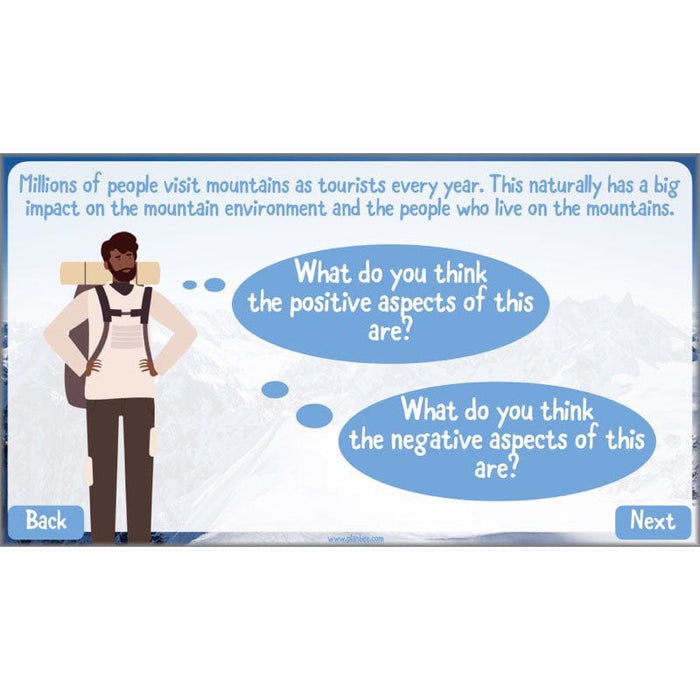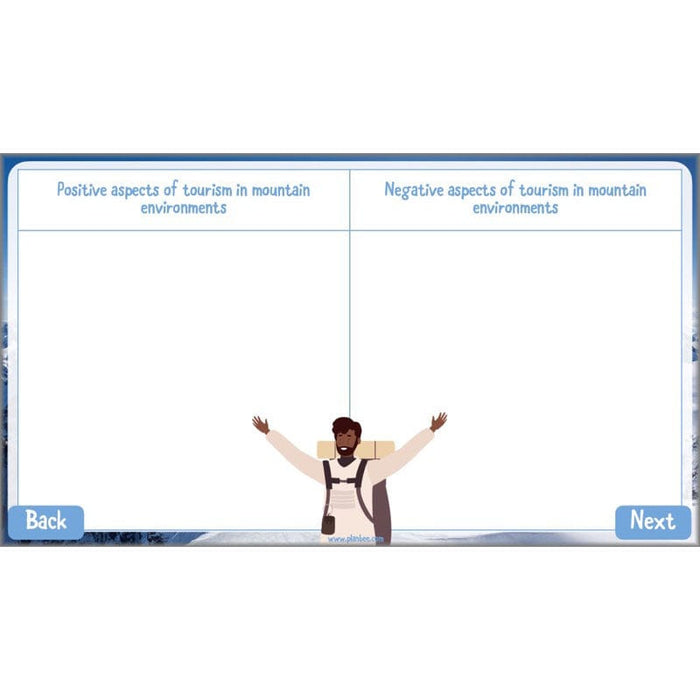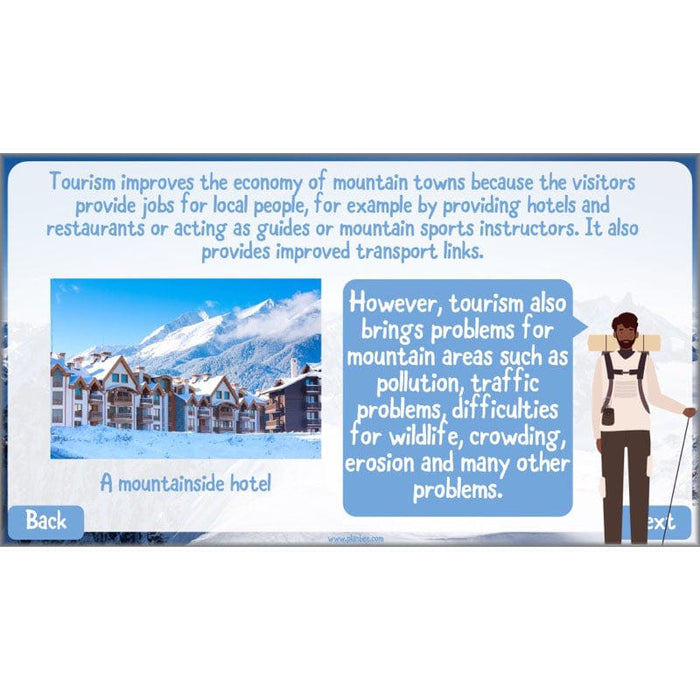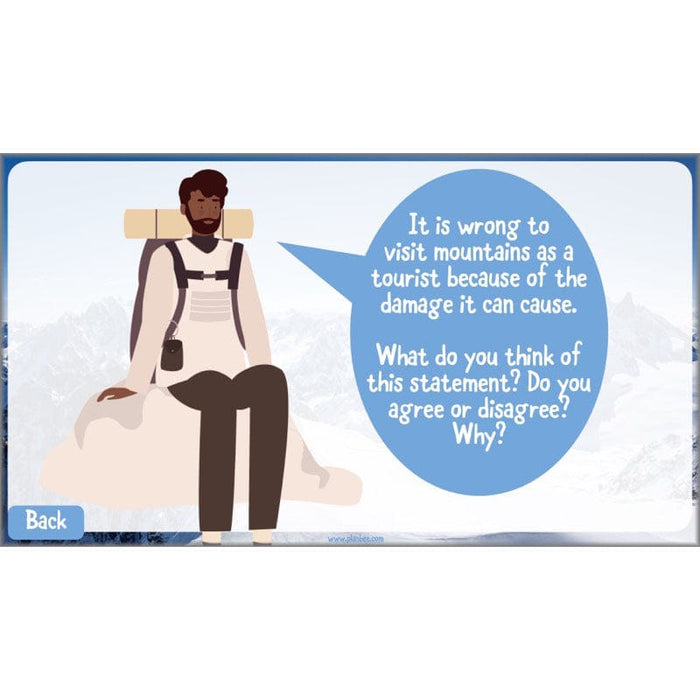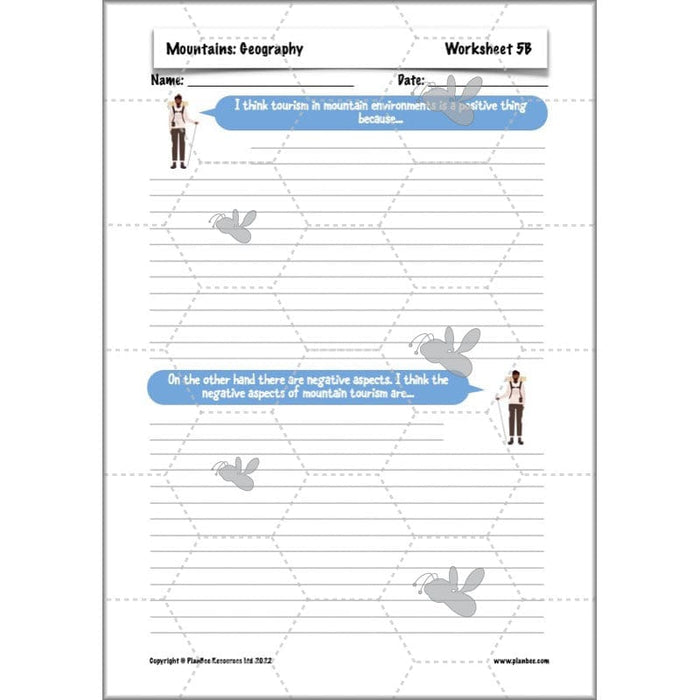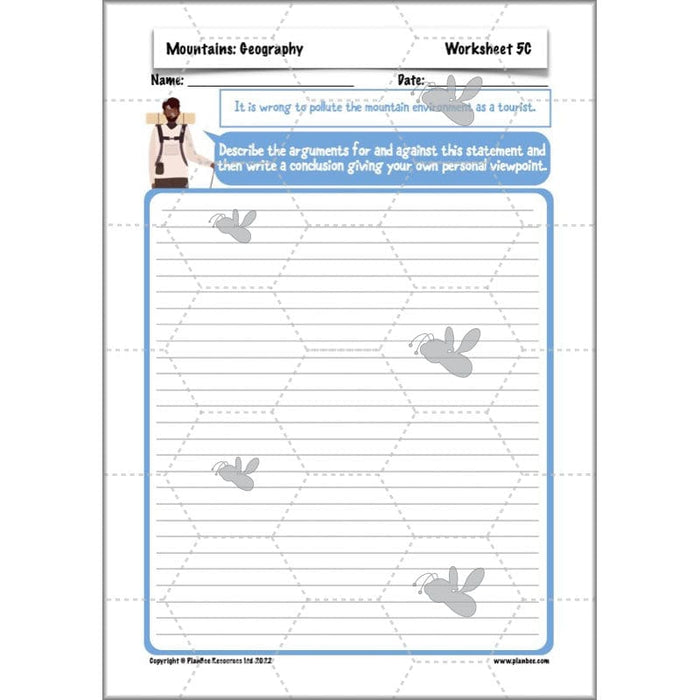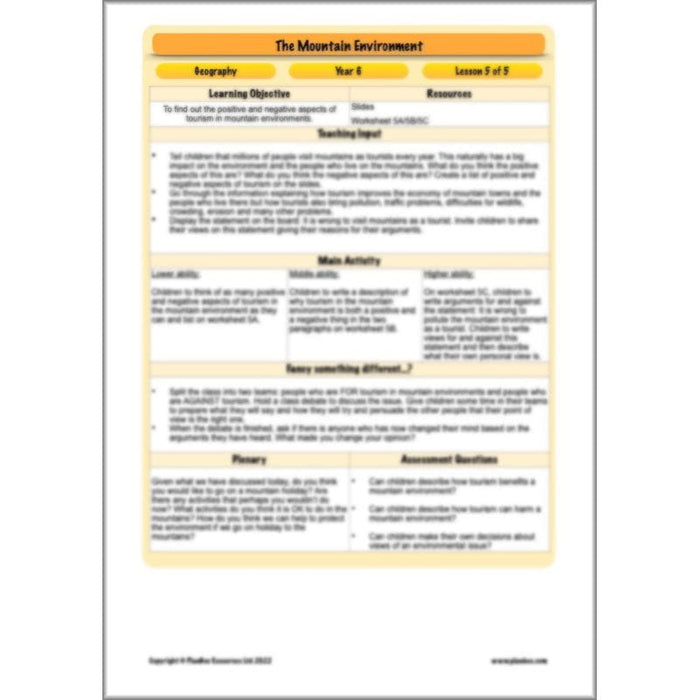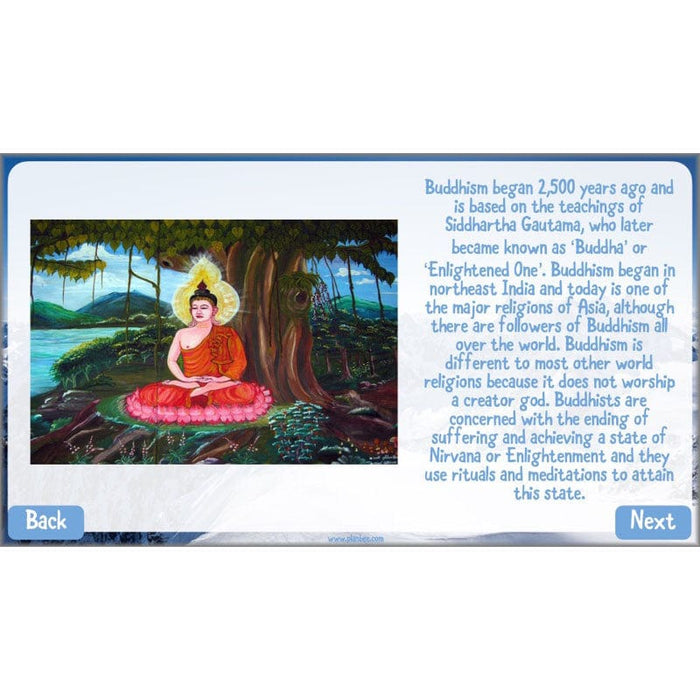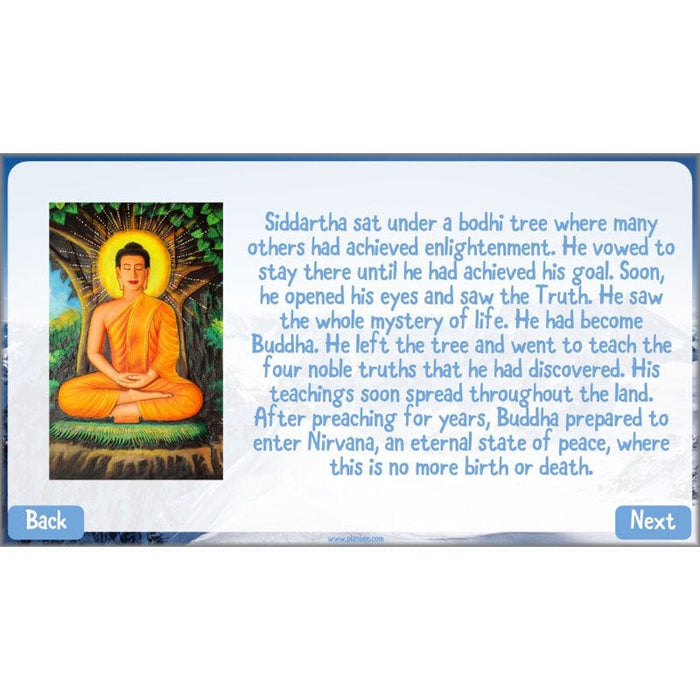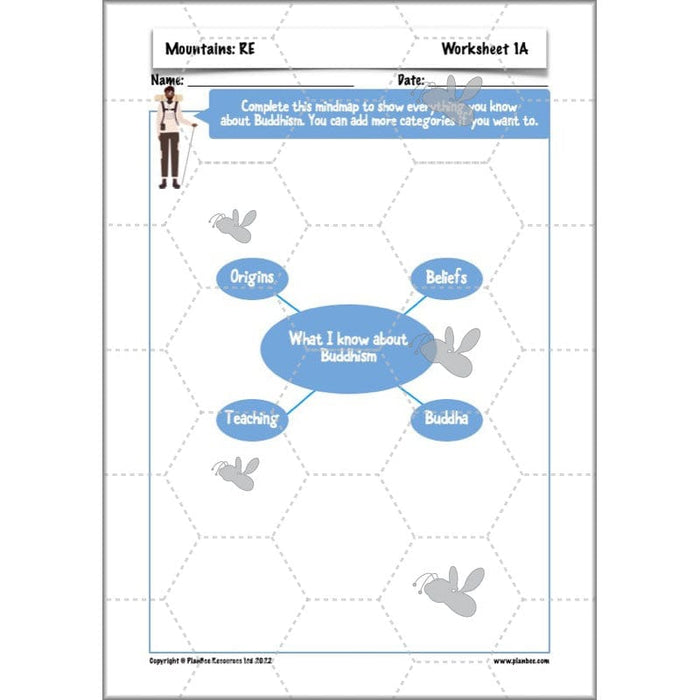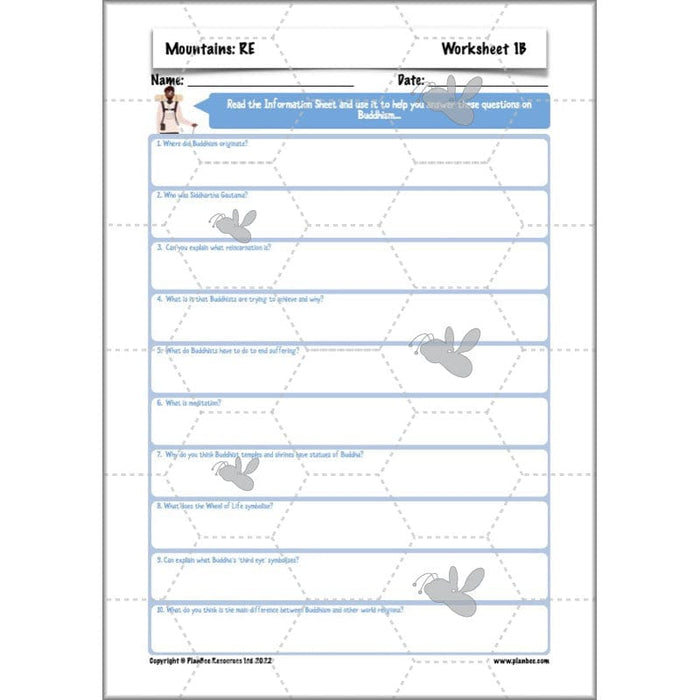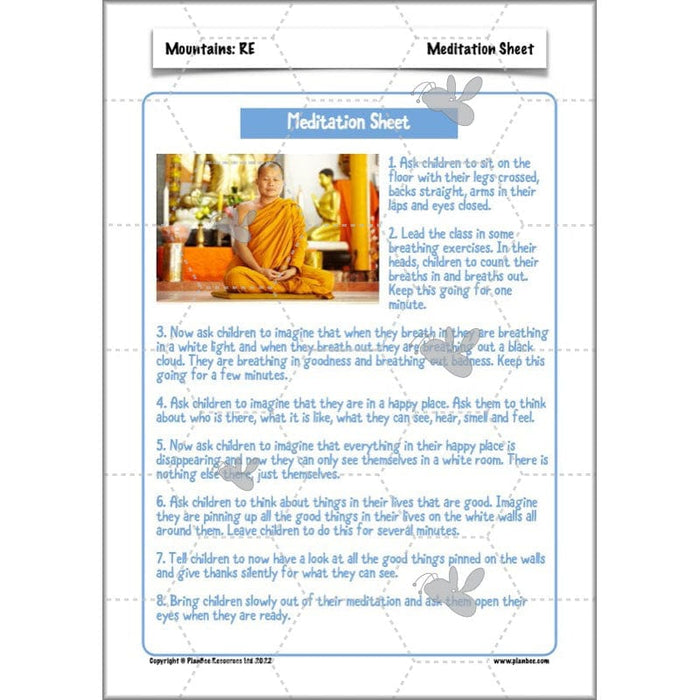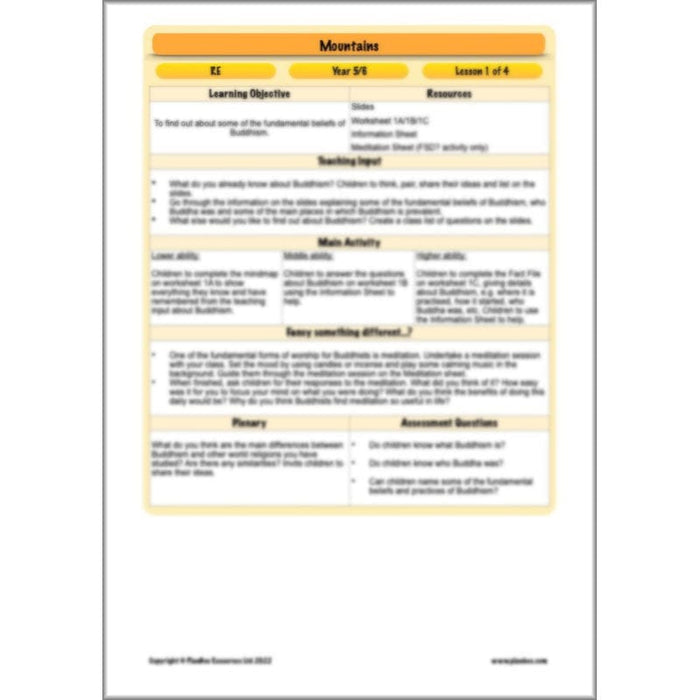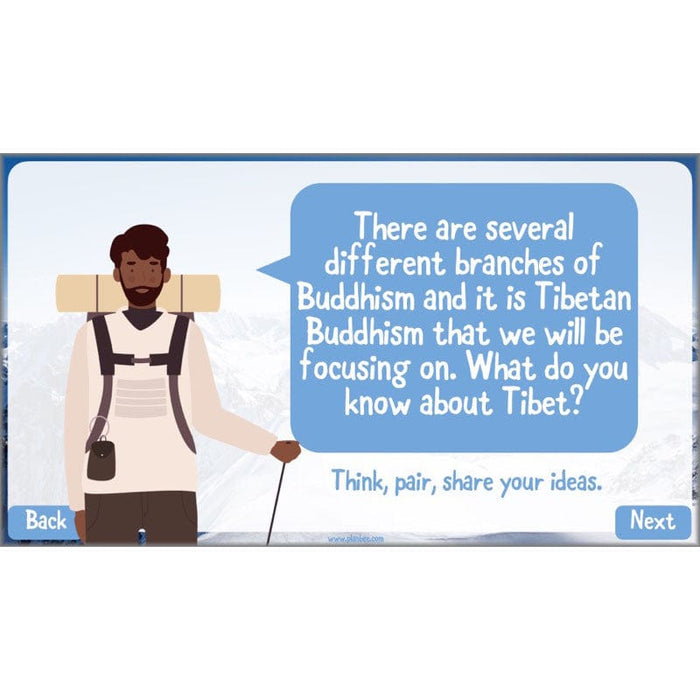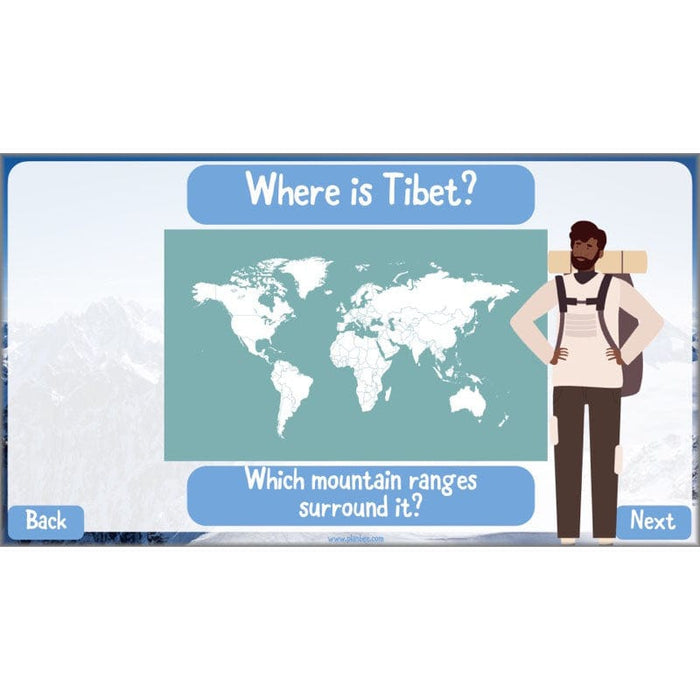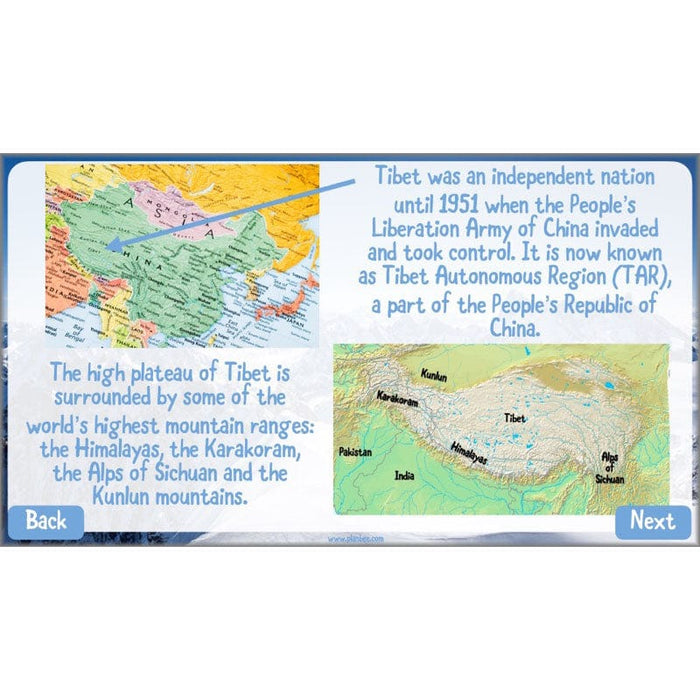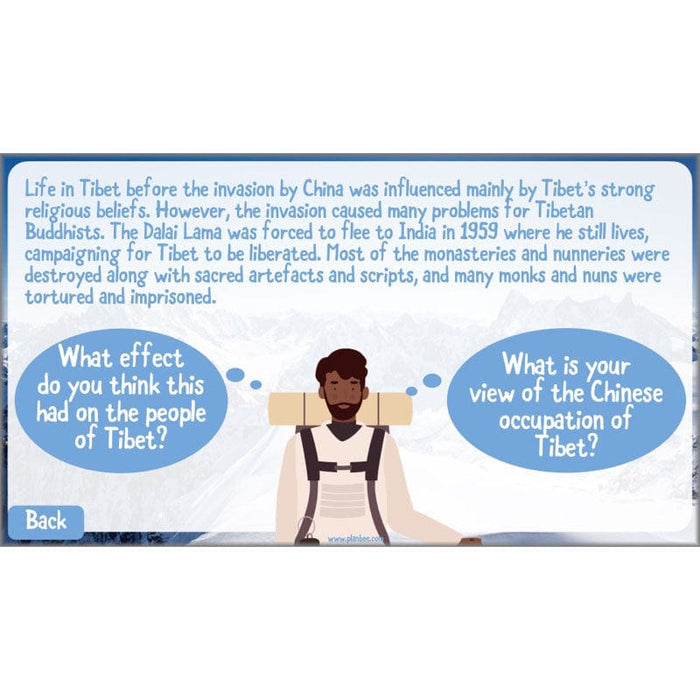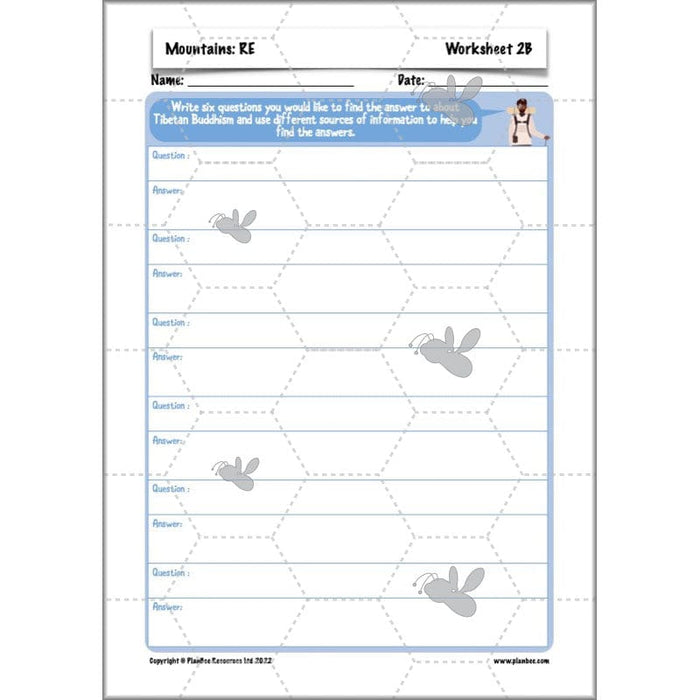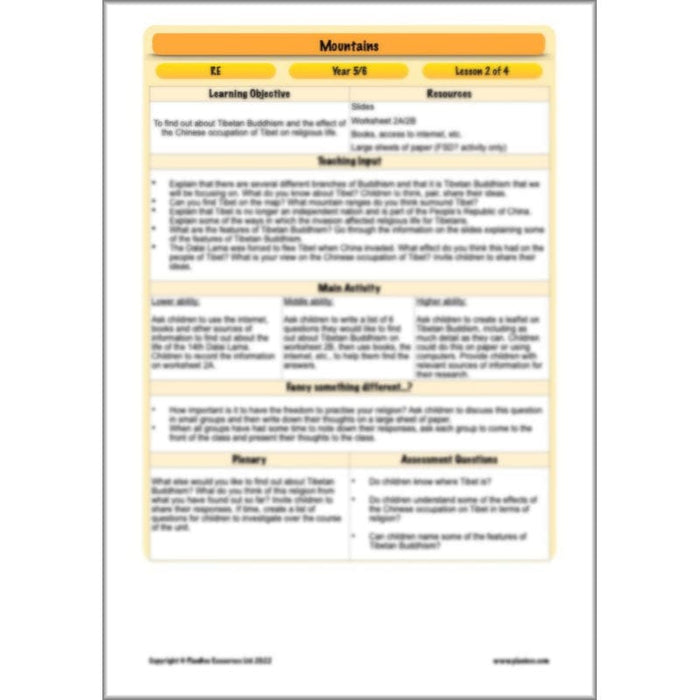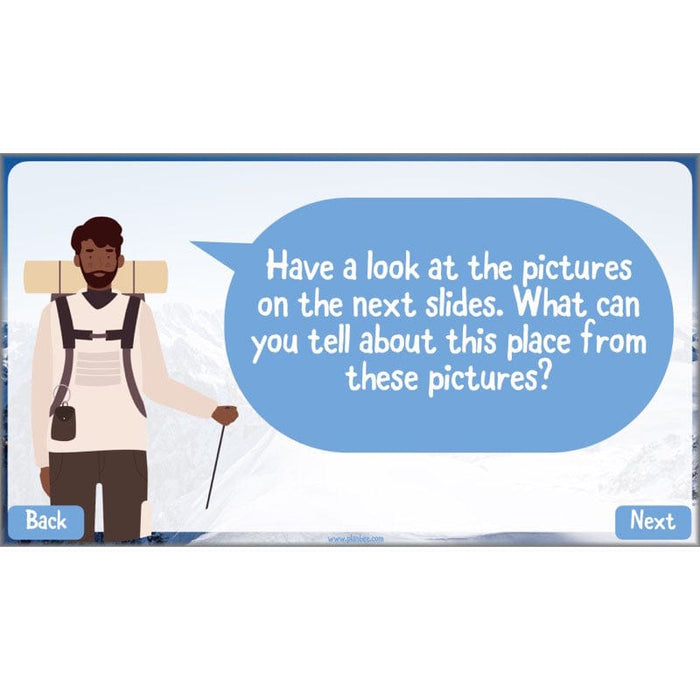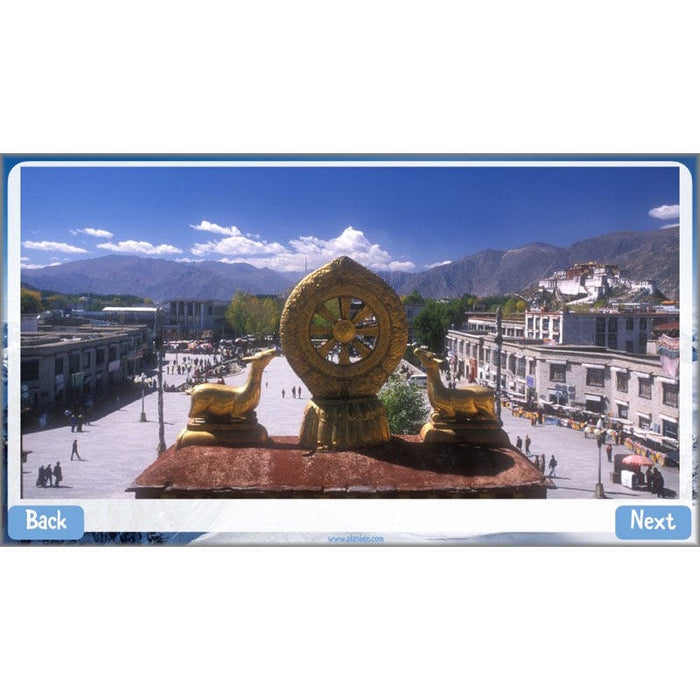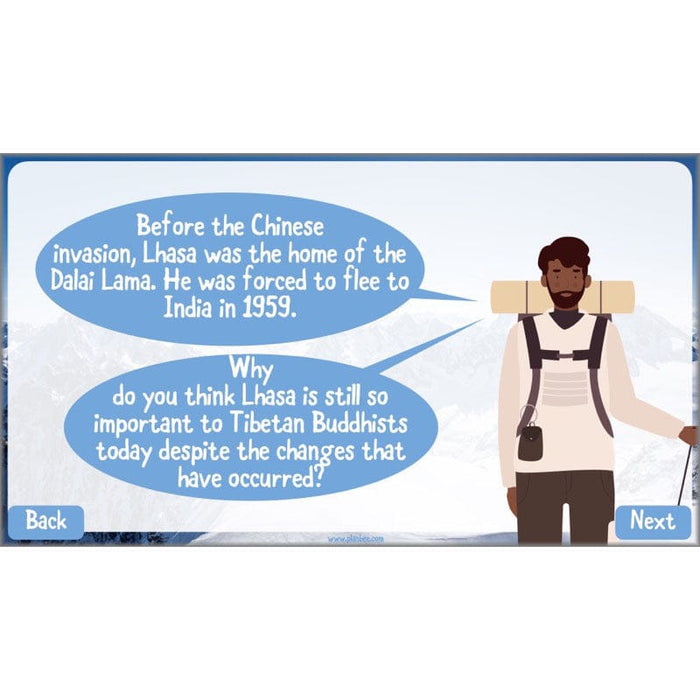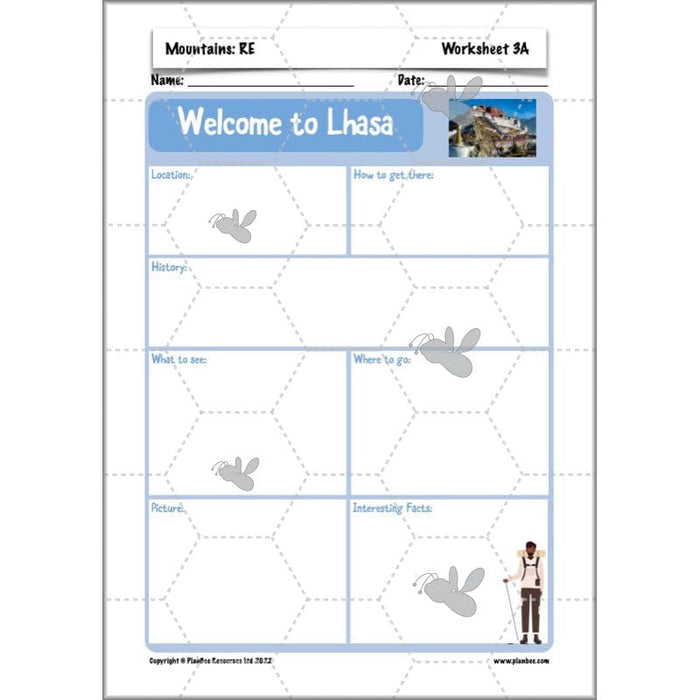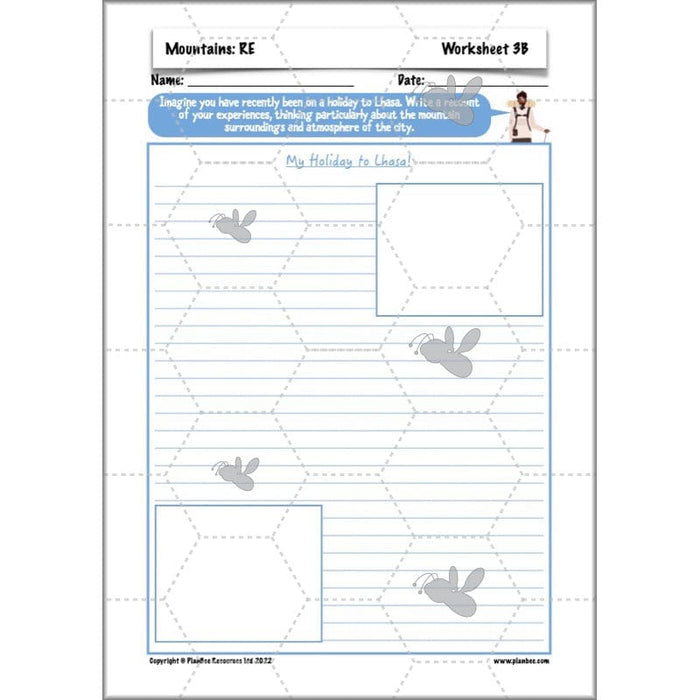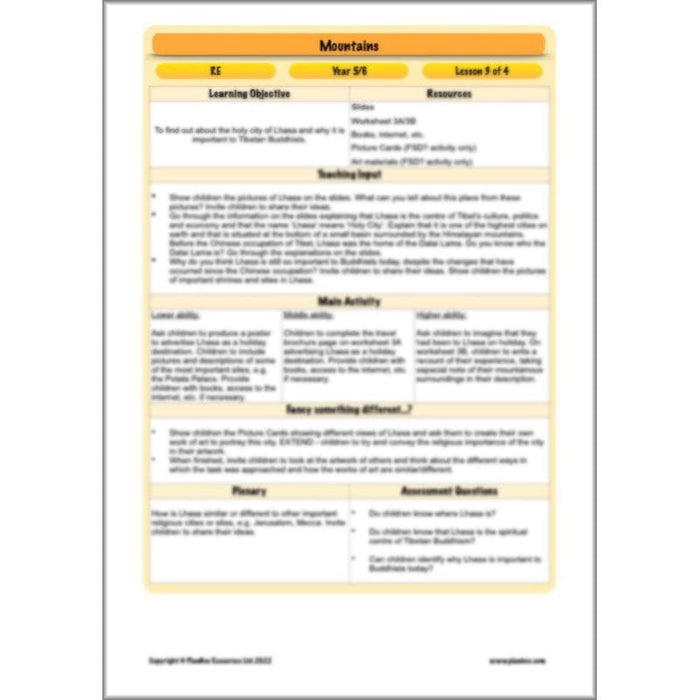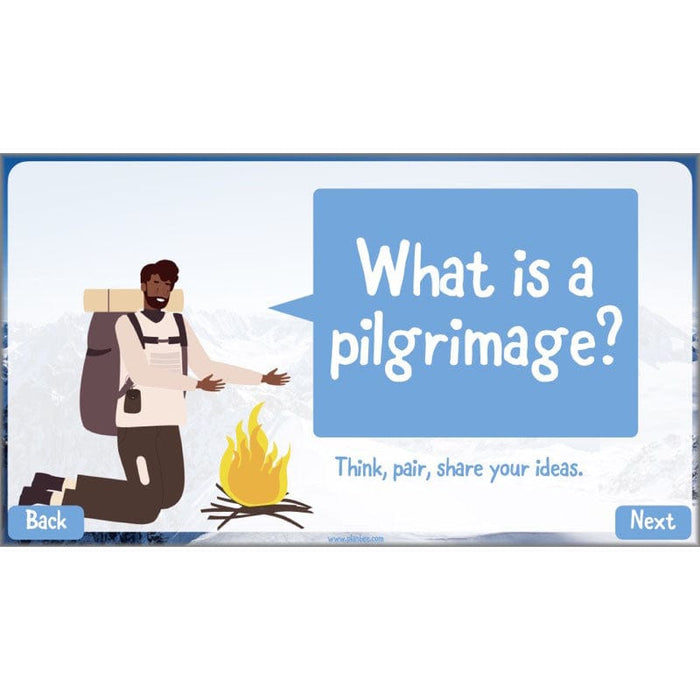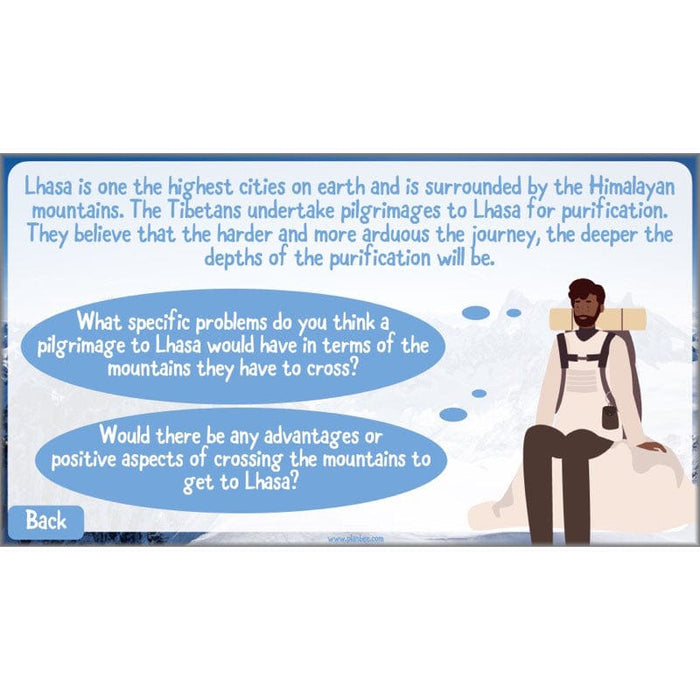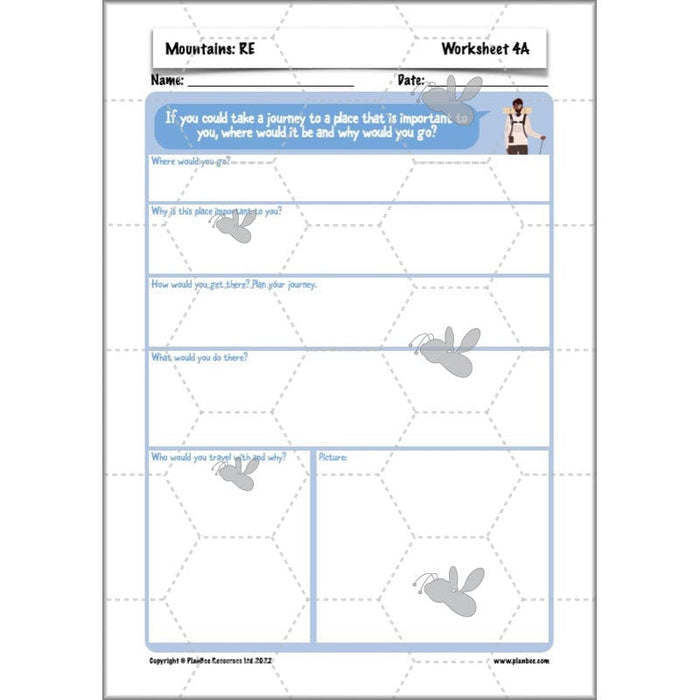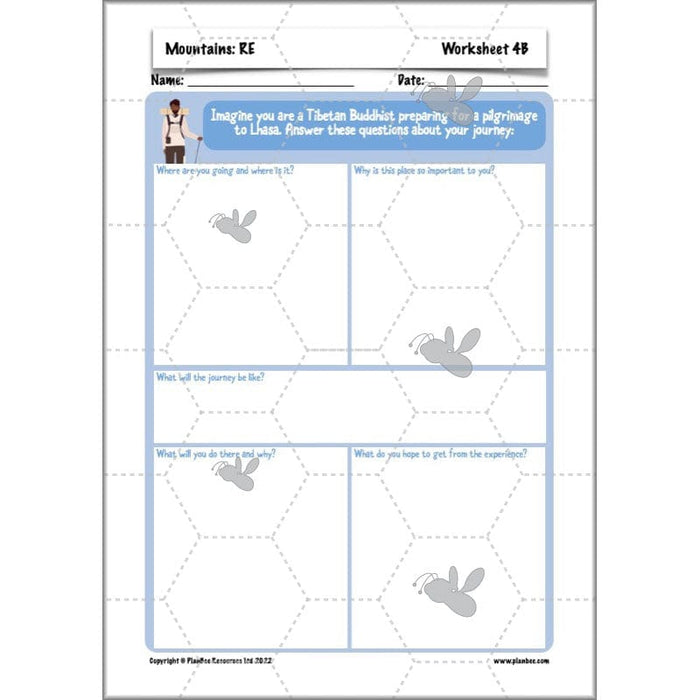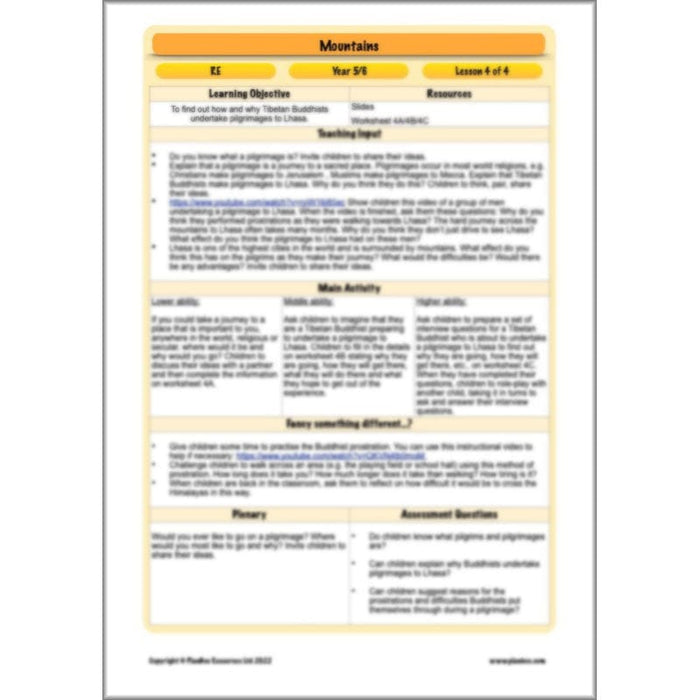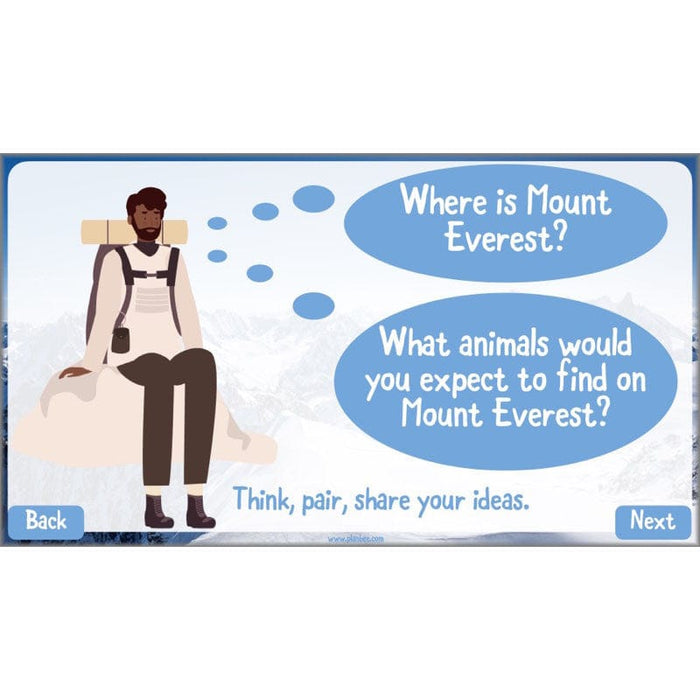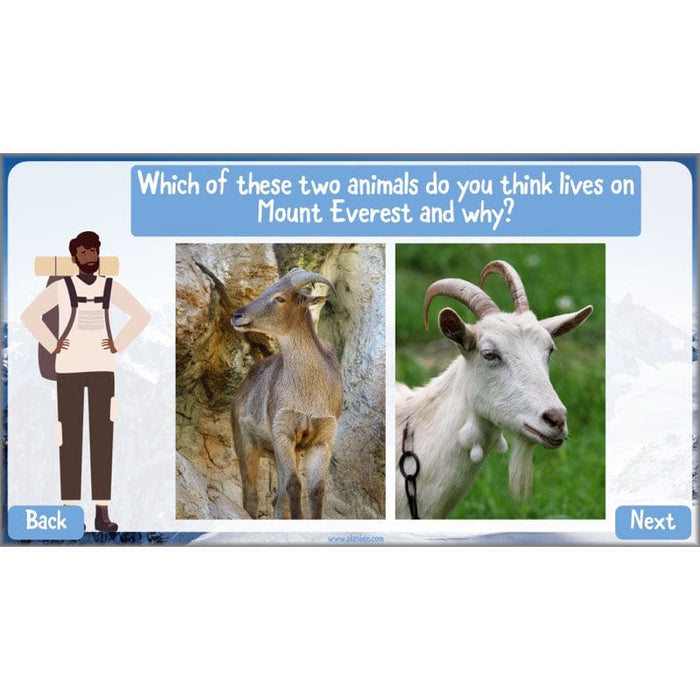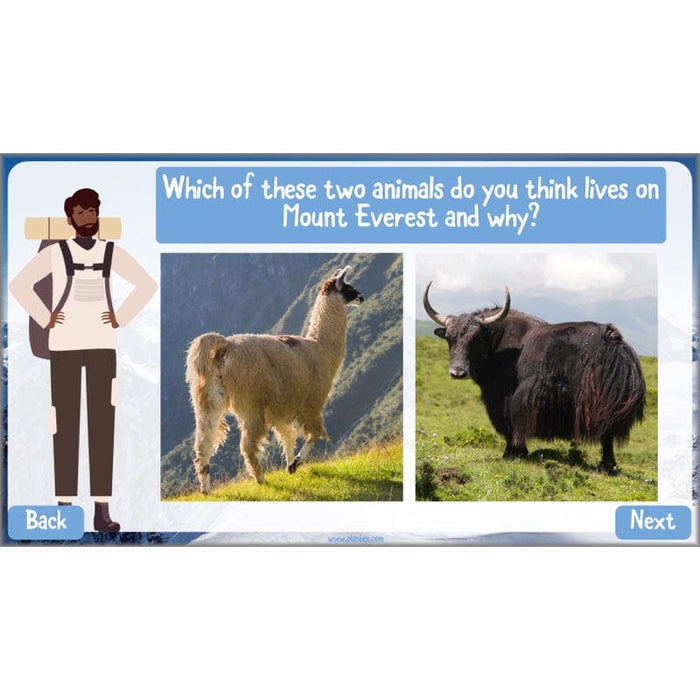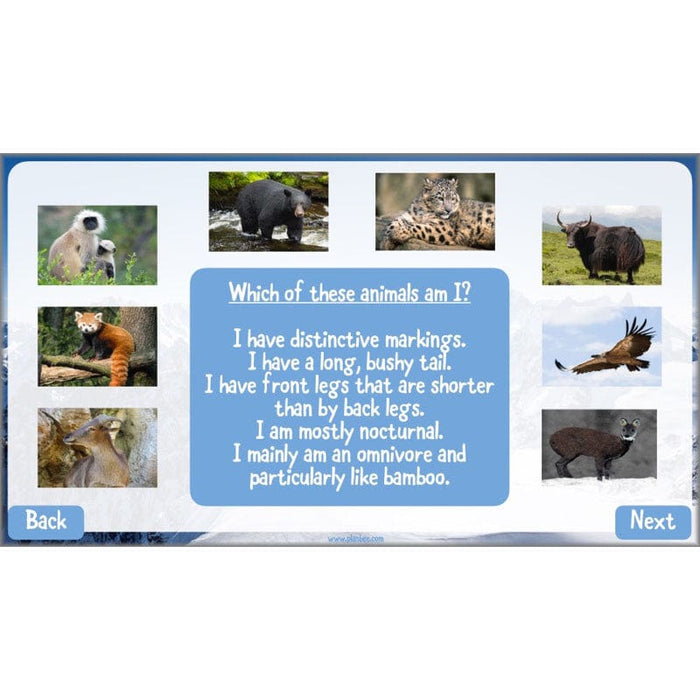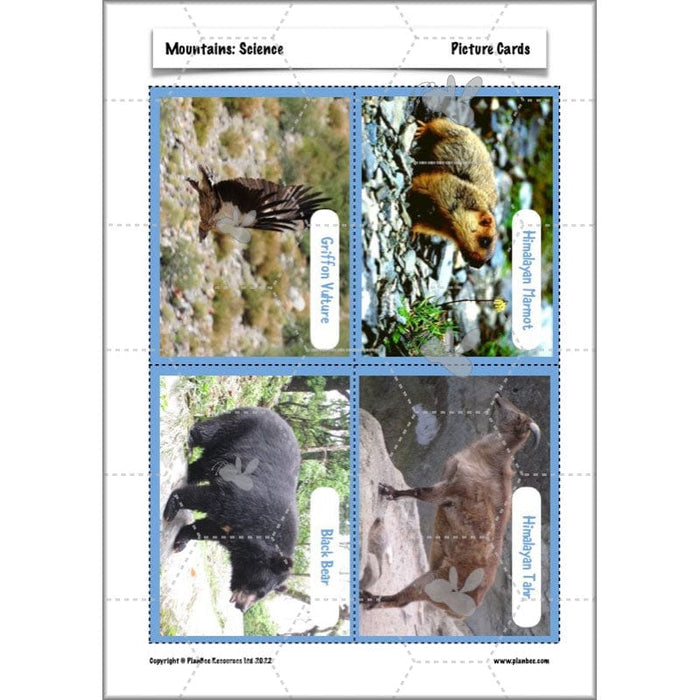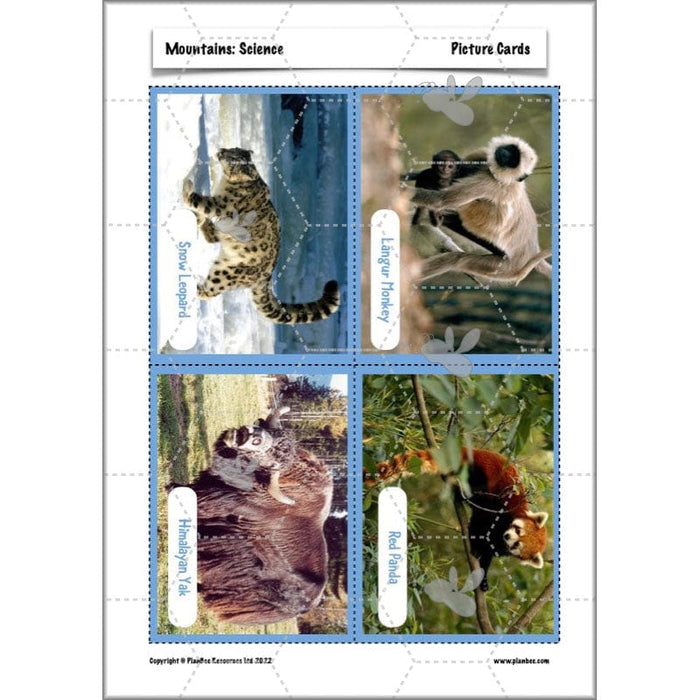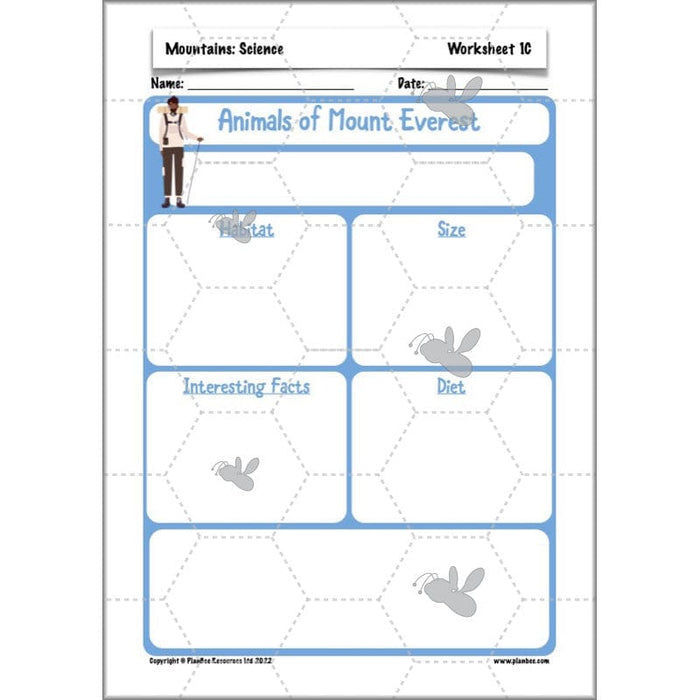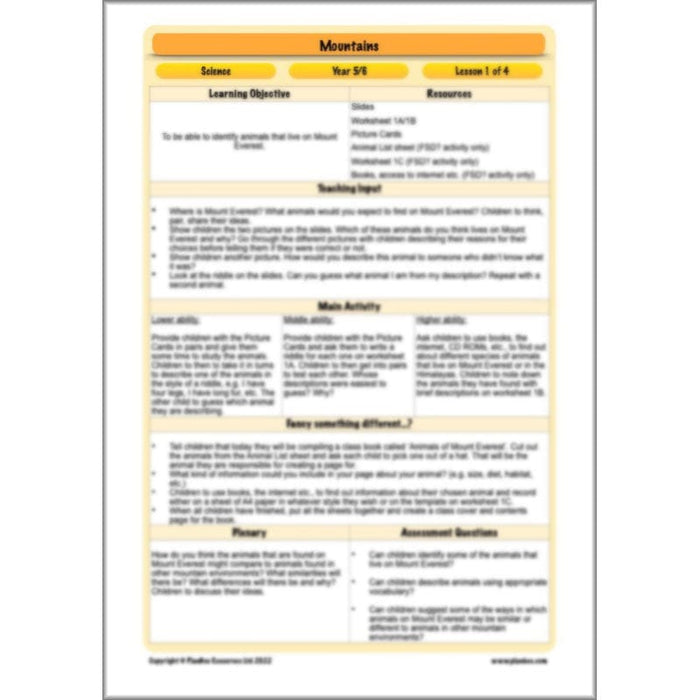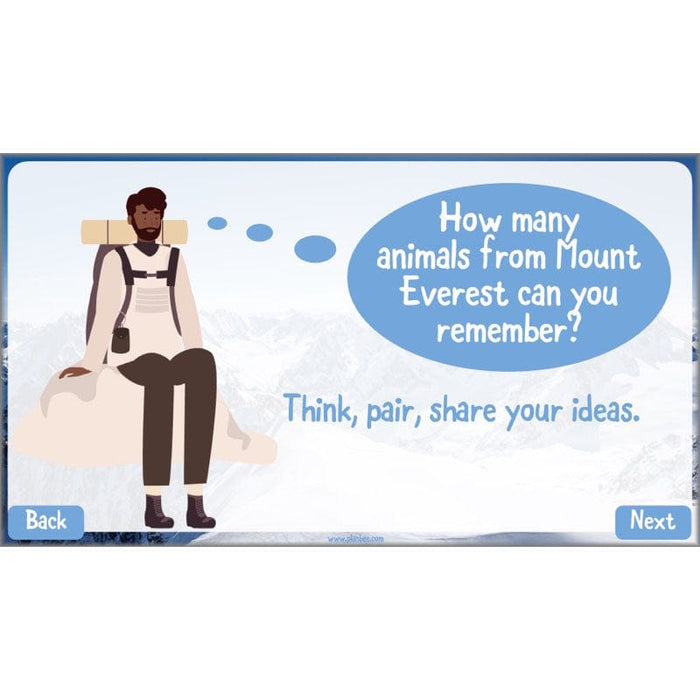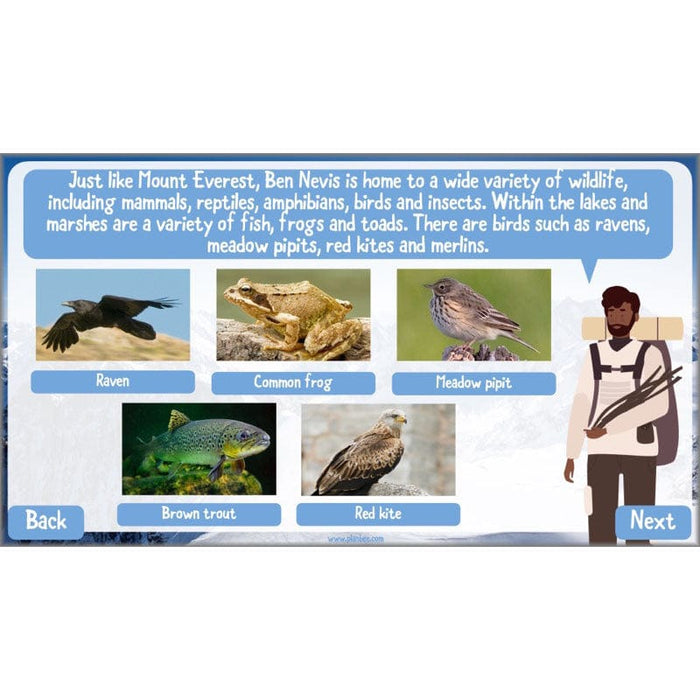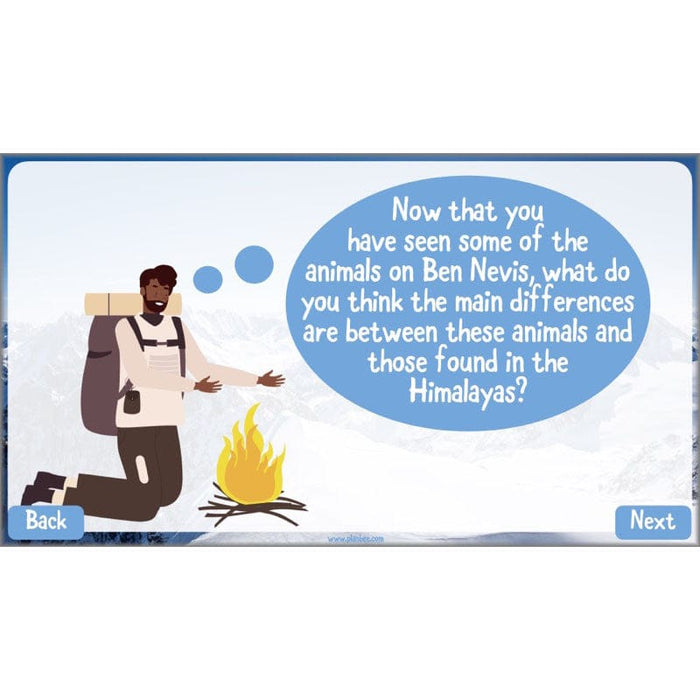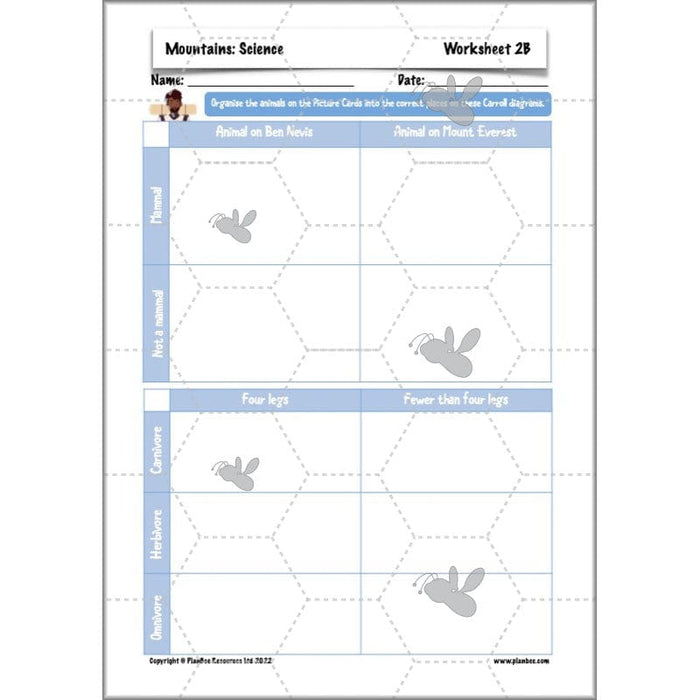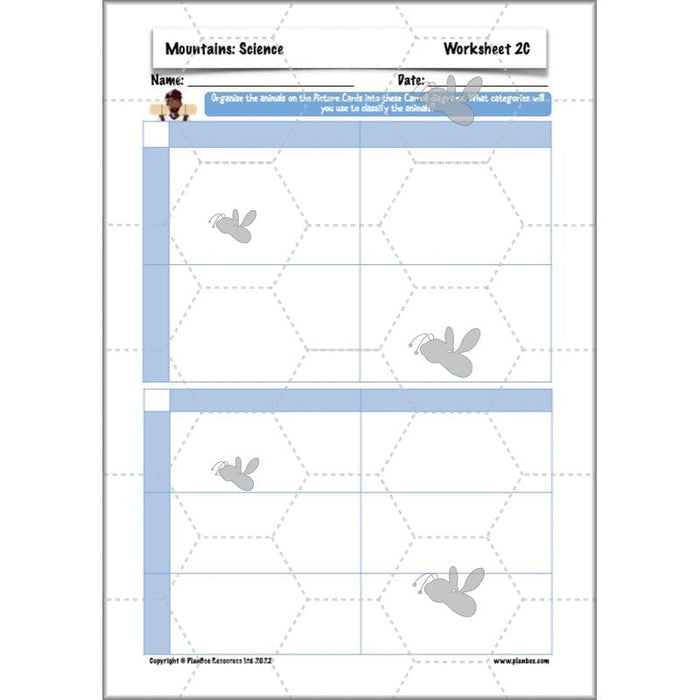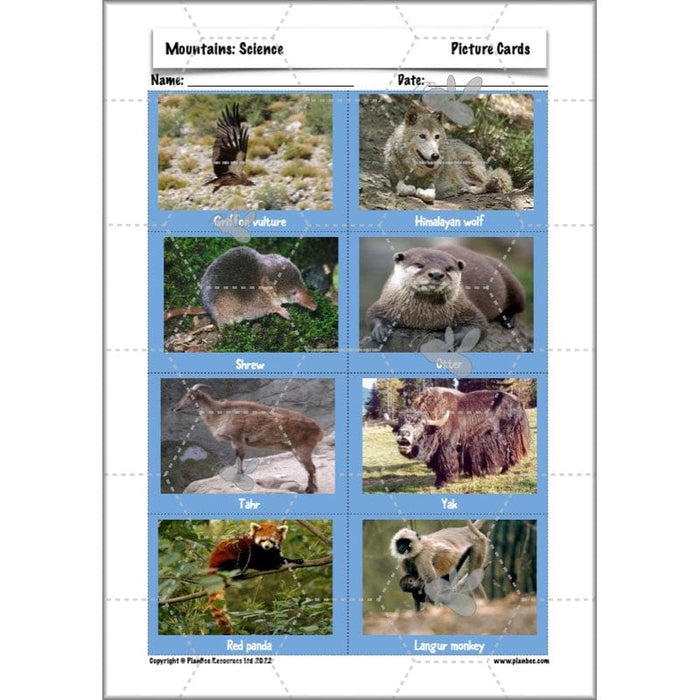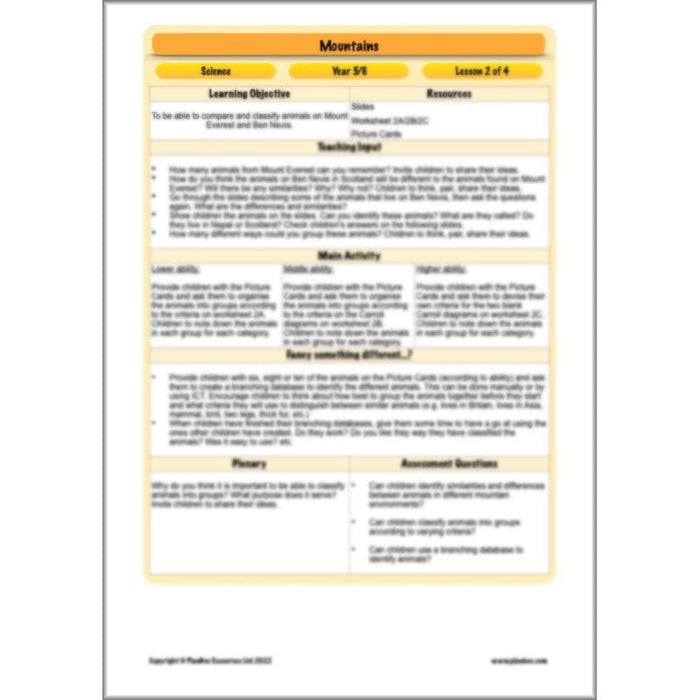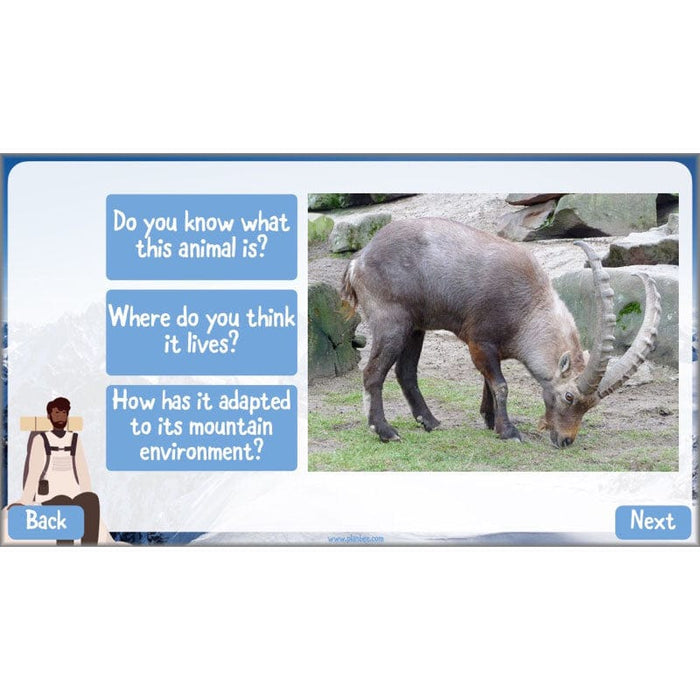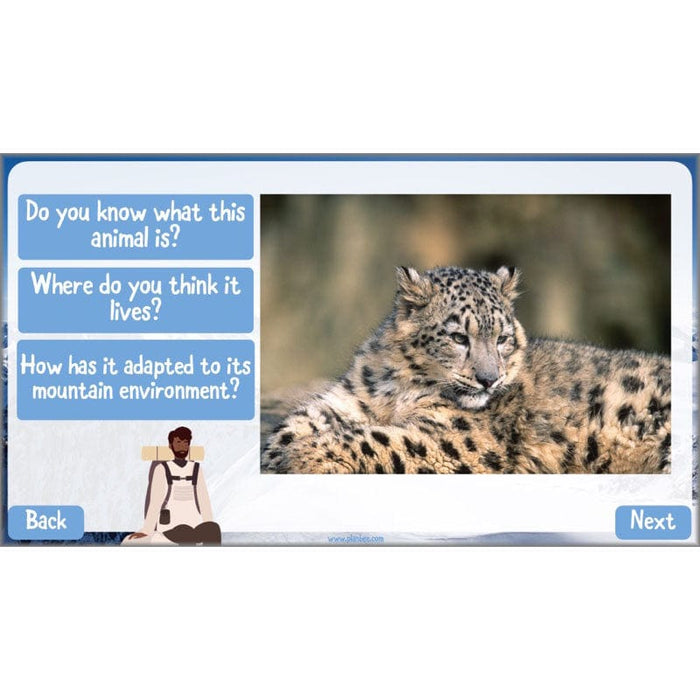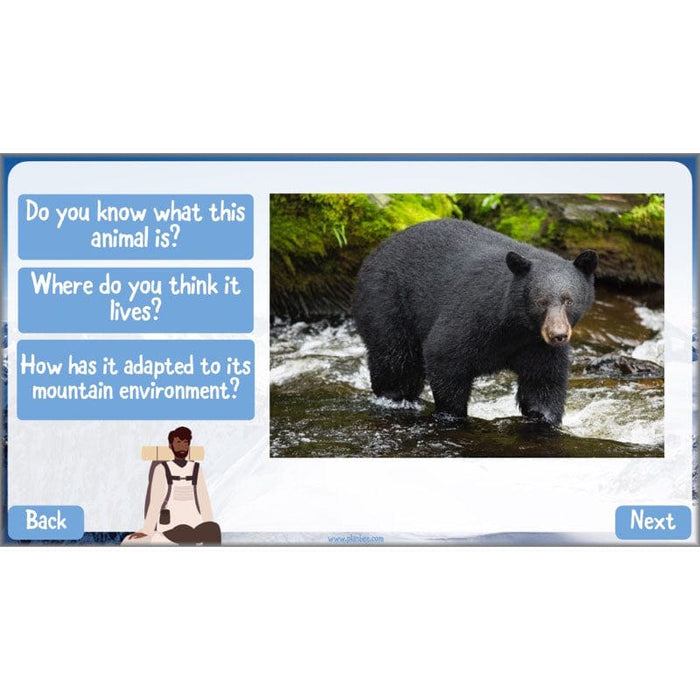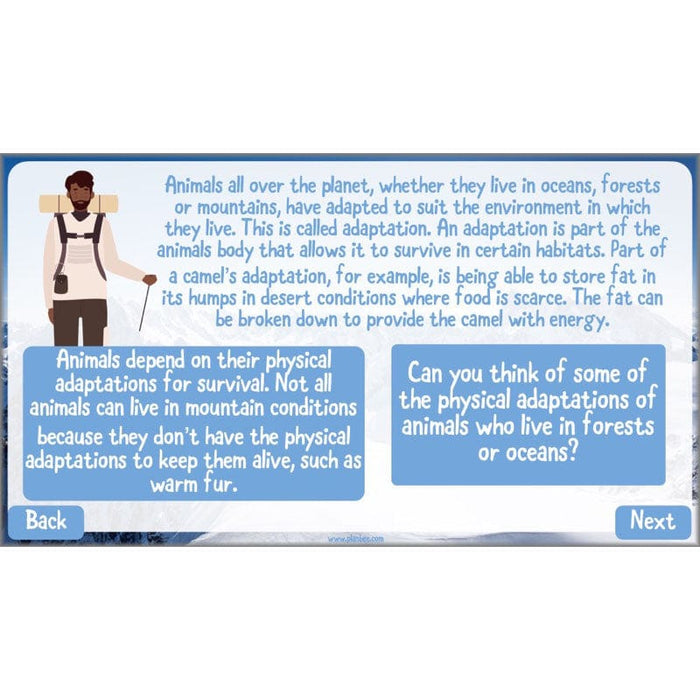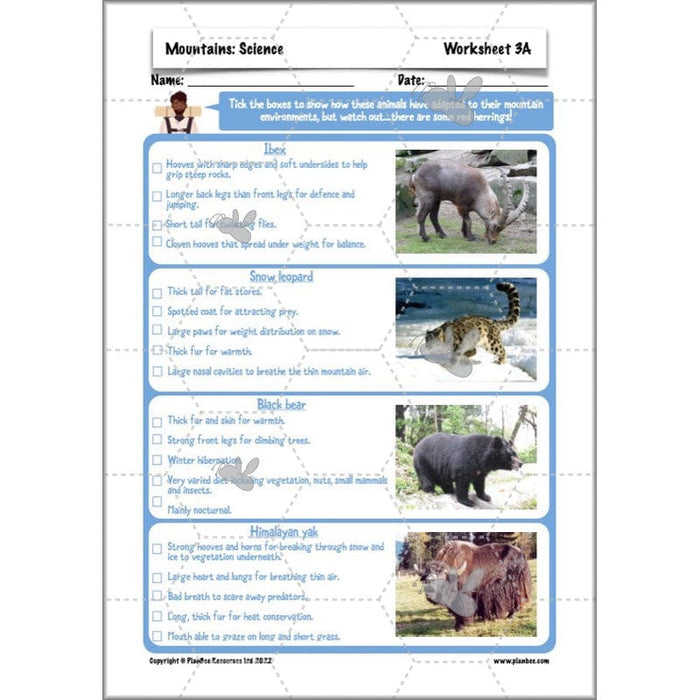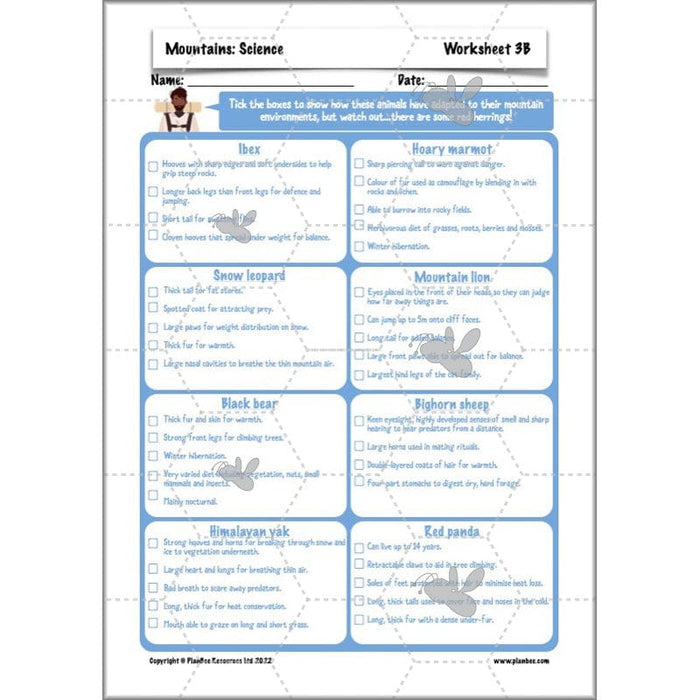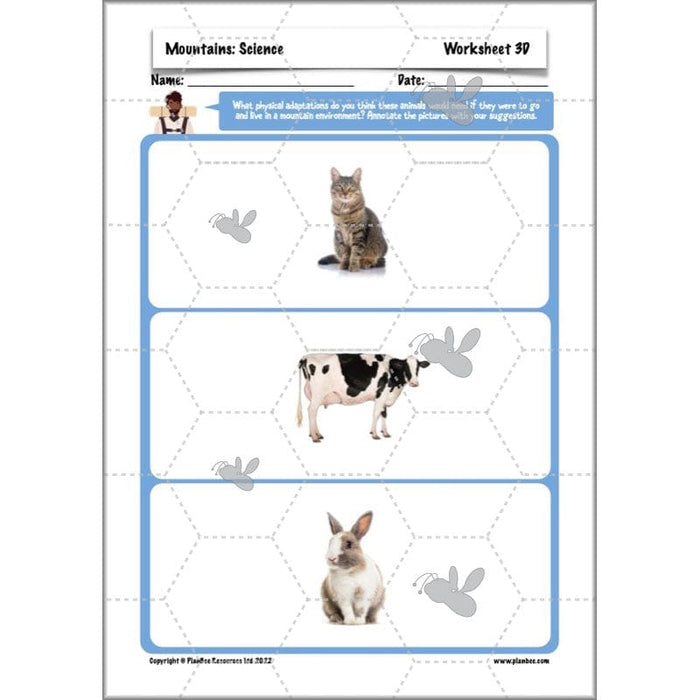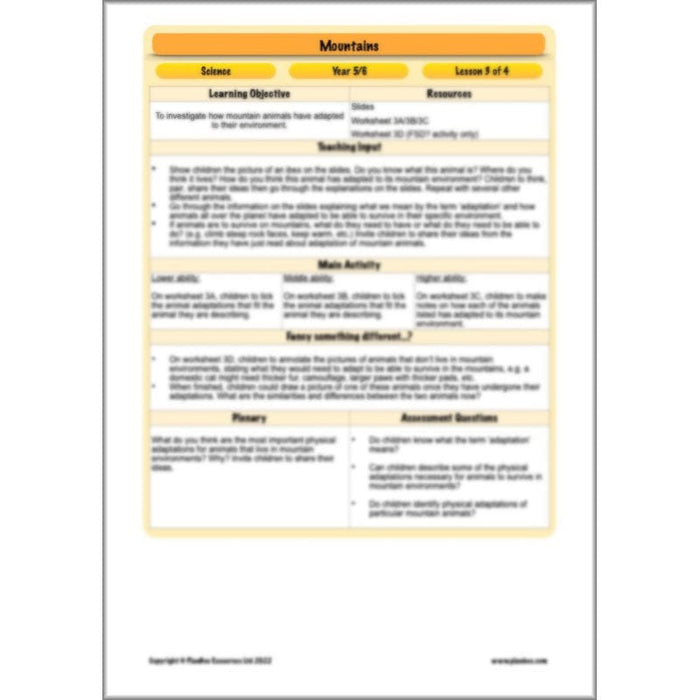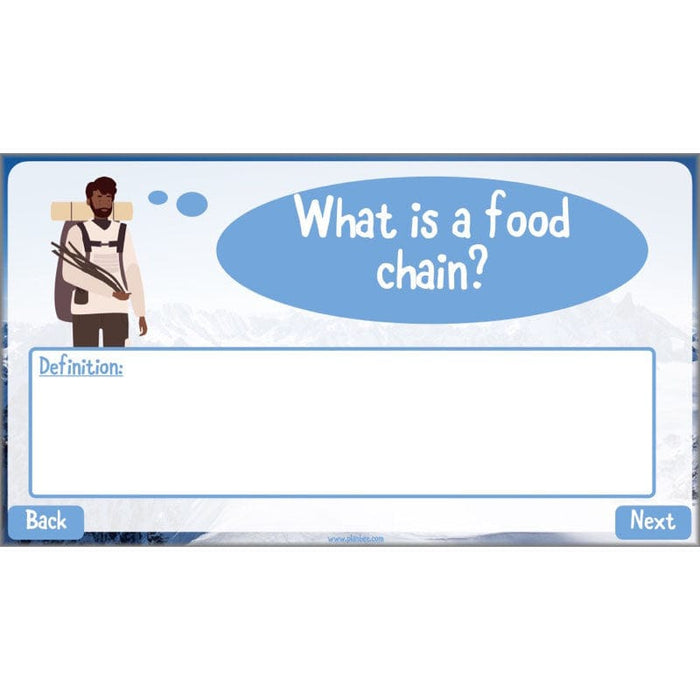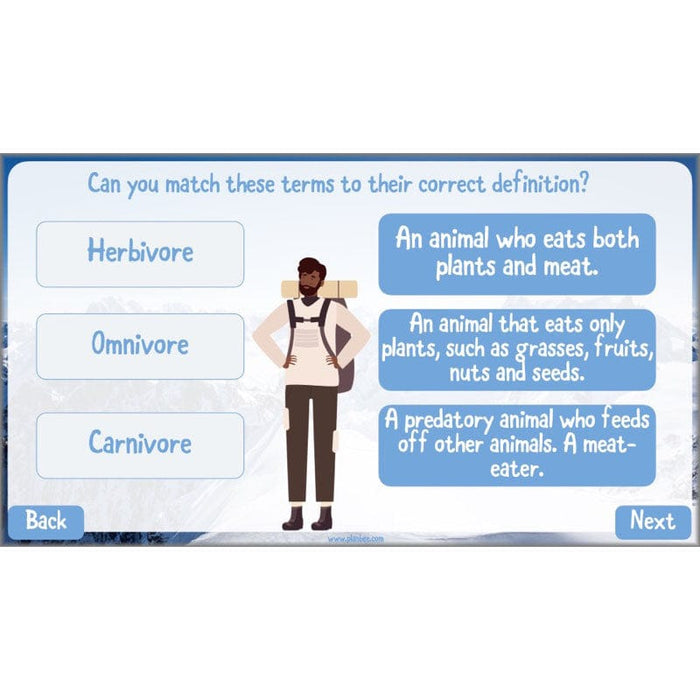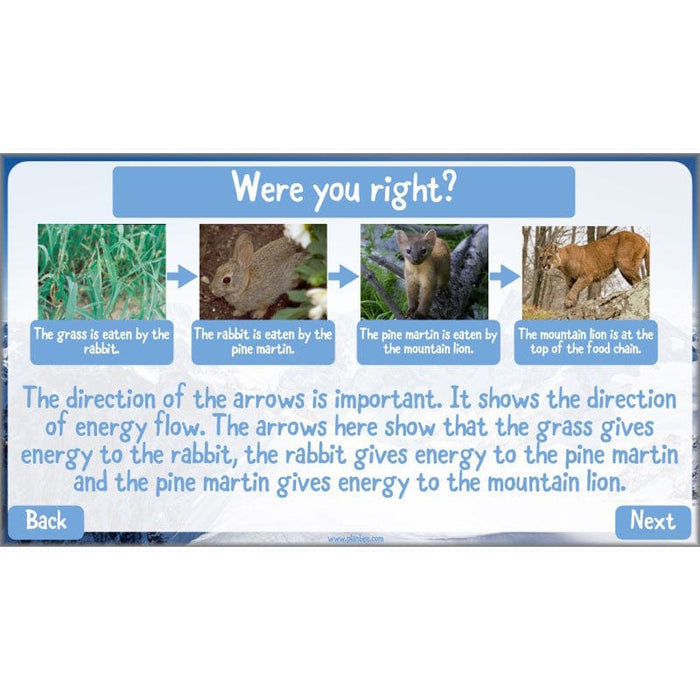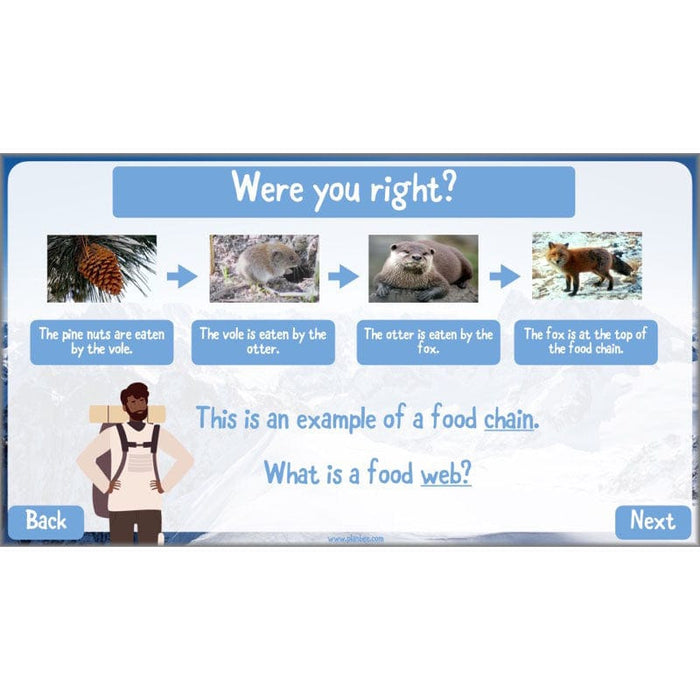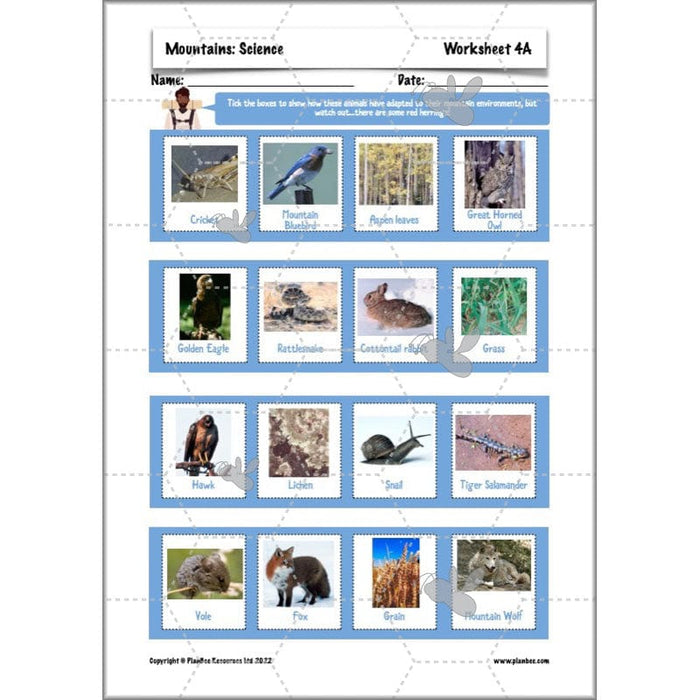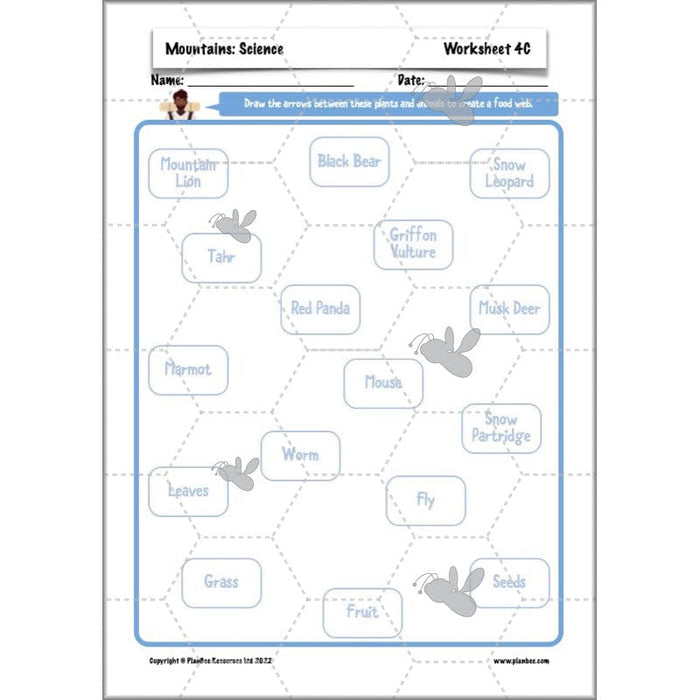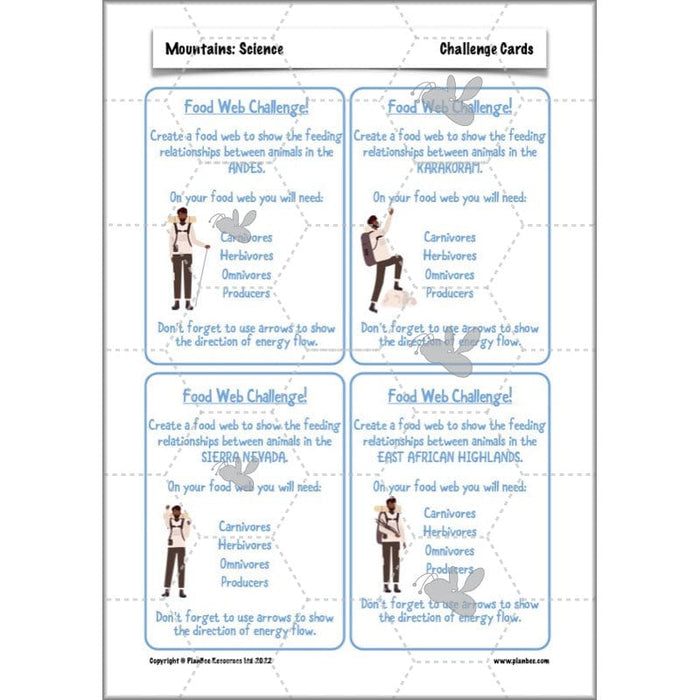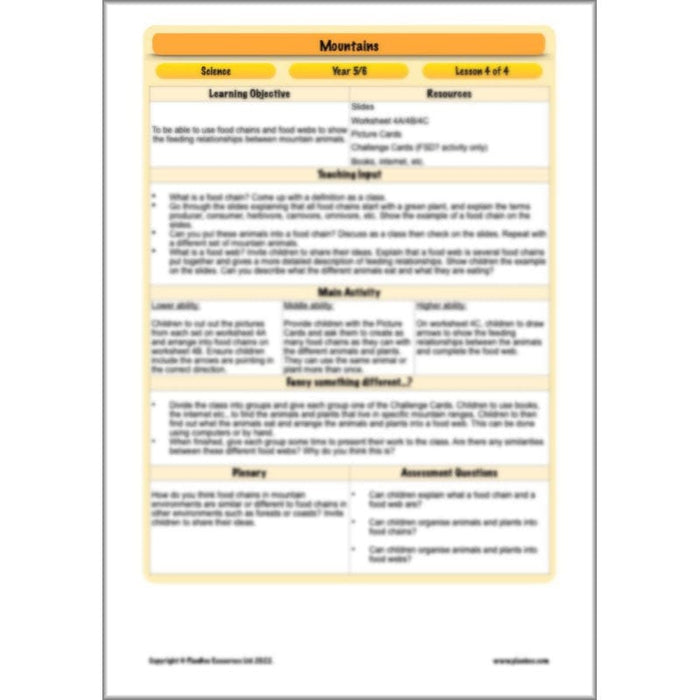#TheCompleteTopic17lessons
Find out about mountain animals, mountain climates and a mountainous range of other aspects of the highest peaks in the world in this engaging and inspiring Mountains series. Intended for Year 5 and 6 but easily adaptable for other age ranges, these Mountains lessons contain everything you need to teach this area of the curriculum in a creative and interactive way including lesson plans, differentiated worksheets and a host of other resources.
#AllARTLessonsinTopic
Download two Art lessons based on the topic 'Mountains' - part of a complete classic cross-curricular topic for Year 5/6.
#AllCOMPUTINGLessonsinTopic
Download two Computing lessons based on the topic 'Mountains' - part of a complete classic cross-curricular topic for Year 5/6.
#AllGEOGRAPHYLessonsinTopic
Download five Geography lessons based on the topic 'Mountains' - part of a complete classic cross-curricular topic for Year 5/6.
#AllRELessonsinTopic
Download four RE lessons based on the topic 'Mountains' - part of a complete classic cross-curricular topic for Year 5/6.
#AllSCIENCELessonsinTopic
Download four Science lessons based on the topic 'Mountains' - part of a complete classic cross-curricular topic for Year 5/6.
#Lesson1ArtAlbertBierstadt
Introduce your class to an artist famous for his portrayals of the American West, Albert Bierstadt, looking in particular at his artwork of the Rocky Mountains, Sierra Nevada and other American mountains. Children are then challenged to create a piece of mountain artwork based on Bierstadt’s style.
What's included:
- Lesson plan
- Slides
- Activity ideas
- Picture cards
#Lesson2ArtNicholasRoerich
Russian artist, author and thinker, Nicholas Roerich, created over 7000 paintings in his life, many of which portrayed mountains. Explore these paintings with your class before thinking about the techniques and materials that could be used to recreate mountain artwork in the style of Roerich.
What's included:
- Lesson plan
- Slides
- Activity ideas
- Picture cards
#Lesson3ComputingMultimediaPresentations
This lesson allows your class to put their computing skills to the test as they prepare a multimedia presentation about a particular mountain, including text, pictures, sounds and more.
What's included:
- Lesson plan
- Slides
- Activity ideas
- Differentiated worksheets
- Challenge cards
#Lesson4ComputingSpreadsheetsandGraphs
This lesson allows your class to improve their data handling skills as they input and analyse data on the heights of some of the world's tallest and most famous mountains.
What's included:
- Lesson plan
- Slides
- Activity ideas
- Differentiated worksheets
#Lesson5GeographyMajorMountains
The first of these Geography lessons informs your class of some of the ways in which mountains are formed, some of the different types of mountains and how mountainous areas can be seen on topographical map. They will also identify where the major mountain ranges of the world are located.
What's included:
- Lesson plan
- Slides
- Activity ideas
- Differentiated worksheets
- Domino cards
#Lesson6GeographyAMountainInvestigation
This lesson allows your class to investigate the height, population, features and origins of a particular mountain in detail, such as Mount Everest, Kilimanjaro, K2, Ben Nevis or many others, and encourages them to think about the questions they will need to ask for their investigation.
What's included:
- Lesson plan
- Slides
- Activity ideas
- Differentiated worksheets
- Challenge cards
#Lesson7GeographyMountainClimates
Mountains have their own climate due to their high altitude. This lesson gives your class the chance to find out the climate data of a particular mountain and challenges them to analyse the data they have found.
What's included:
- Lesson plan
- Slides
- Activity ideas
- Differentiated worksheets
#Lesson8GeographyHolidayTime
This lesson looks briefly at the uses of mountains before taking a closer look at mountains as tourist destinations, encouraging your class to think about what they could do on a mountain holiday and which mountain or mountain range they would most like to visit from what they have found out so far.
What's included:
- Lesson plan
- Slides
- Activity ideas
- Differentiated worksheets
- Challenge cards
#Lesson9GeographyTheImpactofTourism
The final lesson in this Geography series looks at the effects of tourism on the mountain environment and gives your class the opportunity to consider both the positive and the negative aspects of enjoying a mountain holiday.
What's included:
- Lesson plan
- Slides
- Activity ideas
- Differentiated worksheets
#Lesson10REBuddhistBeliefs
This lesson introduces your class to some of the fundamental beliefs of Buddhists, as well as background information about who Buddha was and where Buddhism originated.
What's included:
- Lesson plan
- Slides
- Activity ideas
- Differentiated worksheets
- Information sheet
- Meditation sheet
#Lesson11RETibetanBuddhism
This lesson looks at Buddhism in Tibet, set on a high plateau amongst some of the highest mountains in the world. As well as looking at some of the features of Tibetan Buddhism, your class will also be able to voice their own opinions on the Chinese occupation of Tibet and how this has affected religious life.
What's included:
- Lesson plan
- Slides
- Activity ideas
- Worksheets
#Lesson12RETheHolyCityofLhasa
Lhasa, a city with one of the highest elevations on earth, is Tibet's most holy city. Introduce your class to some of the most important religious sites of the city, such as the Potala Palace, former home of the Dalai Lama, before thinking about why Lhasa is important to Buddhists today.
What's included:
- Lesson plan
- Slides
- Activity ideas
- Worksheets
- Picture cards
#Lesson13REPilgrimagestoLhasa
This lesson looks at why pilgrims undertake long journeys to the holy city of Lhasa, performing prostrations to make a difficult journey across the Himalayas even harder, and thinks about why such journeys are important to Buddhists.
What's included:
- Lesson plan
- Slides
- Activity ideas
- Differentiated worksheets
#Lesson14ScienceEverestAnimals
Identify animals typically found on the highest peak in the world in this lesson, as children learn about snow leopards, red pandas, langur monkeys and many other mountain creatures.
What's included:
- Lesson plan
- Slides
- Activity ideas
- Worksheets
- Picture cards
- Animal lists
#Lesson15ScienceComparingCreatures
In this lesson, identify similarities and differences between the animals on Mount Everest and Ben Nevis, then challenge children to classify them into different groups.
What's included:
- Lesson plan
- Slides
- Activity ideas
- Differentiated worksheets
- Picture cards
#Lesson16ScienceAnimalAdaptations
Find out how mountain animals have adapted to their unique environment as your class learn what physical adaptations are and how they help animals to survive in the harsh mountain environments.
What's included:
- Lesson plan
- Slides
- Activity ideas
- Differentiated worksheets
#Lesson17ScienceMountainMeals
This lesson looks at what food chains and food webs are, using vocabulary such as producer, consumer, carnivore and herbivore, before giving your class the opportunity to order mountain plants and animals into food chains and food webs.
What's included:
- Lesson plan
- Slides
- Activity ideas
- Differentiated worksheets
- Picture cards
- Challenge cards
Free Overview (Medium-Term Plan)
Download a free overview to support your teaching of this scheme of work.
Free Assessment Grid
Download a free, editable assessment grid to support your teaching of this scheme of work.
Curriculum Objectives covered
Art Objectives:
- KS2 - to improve their mastery of art and design techniques, including painting with a range of materials
- KS2 - about great artists in history
Computing Objectives:
- KS2 - select, use and combine a variety of software (including internet services) on a range of digital devices to design and create a range of programs, systems and content that accomplish given goals, including collecting, analysing, evaluating and presenting data and information
Geography Objectives:
- KS2 - locate the world’s countries, using maps to focus on Europe (including the location of Russia) and North and South America, concentrating on their environmental regions, key physical and human characteristics, countries, and major cities
- KS2 - describe and understand key aspects of physical geography, including: climate zones, biomes and vegetation belts, rivers, mountains, volcanoes and earthquakes, and the water cycle
- KS2 - describe and understand key aspects of human geography, including: types of settlement and land use, economic activity including trade links, and the distribution of natural resources including energy, food, minerals and water
- KS2 - use maps, atlases, globes and digital/computer mapping to locate countries and describe features studied
Science Objectives:
Year 5/6 Working Scientifically Objectives
- planning different types of scientific enquiries to answer questions, including recognising and controlling variables where necessary
- recording data and results of increasing complexity using scientific diagrams and labels, classification keys, tables, scatter graphs, bar and line graphs
Year 6 Living things and their habitats Objectives
- describe how living things are classified into broad groups according to common observable characteristics and based on similarities and differences, including micro-organisms, plants and animals
Year 6 Evolution and Inheritance Objectives
- identify how animals and plants are adapted to suit their environment in different ways and that adaptation may lead to evolution
